
The Best Of Humorous Travel Writing
There are people who believe that discussing the merits of funny travel books is disrespectful. Culture, tradition, and customs are only meant to be appreciated and studied and should never appear in humorous books. But these people (often scholarly types who never travel) miss the point. No travel writer sets out to laugh at or mock other cultures. The travel writing genre is rooted in the observation of people and experiences, with the journey or country taking second place. Humour can be a way of dealing with difficult situations.
*This post may have affiliate links. If you choose to purchase products or services through these links I may receive commissions. This is at no extra cost to you. Thank you for supporting all the hours of work I put into this website!
According to Peter McGraw, an associate professor of Marketing and Psychology, humour only occurs when something seems wrong, unsettling, or threatening, but simultaneously seems okay, acceptable or safe. It would appear then that humour is the perfect weapon for exploring the differences between people, describing new situations in “strange” countries, and explaining feelings of discomfort in normal (for the locals) social situations.
Look at Bill Bryson . One of the greatest writers of all time in my opinion. His books on topics as seemingly mundane as houses, the English language, and walking, use humour to turn dry subjects into fascinating stories.
Paul Theroux , not generally regarded as a humorous writer, can switch on the right and left sides of the brain at the same time. Serious to funny in the same paragraph without ruining the idea. And that’s a skill I wish I had.
Something to remember about funny travel stories is that writers often embellish their stories. There’s no shame in this and it’s not seen as any kind of dishonest move. What’s better? A dead boring account of something that happened to you, or a hilarious version of the same story, albeit with some poetic license in the telling?
Most people don’t care about the truth in details. That’s why Fox News, the National Enquirer, and Instagram influencers are so popular. Most of us know it’s fake, but many of us still consume the stories.
We want to hear funny travel experiences, not dry reports. We all enjoy travel stories that make us laugh.
Many travel books are about hardships and the trials and tribulations of navigating your way through a foreign city. When things go wrong, it’s not a lot of fun. But it makes for great stories. I wonder how many travel writers hope that things go wrong?
As the great Paul Theroux once said, “Travel is glamorous only in retrospect.” My own, less eloquent version of this idea is, “Travel is only funny when told to your mates in the pub back home.”
Here are my picks for the funniest books about travel ever written (or at least the ones I’ve read).
A Walk In The Woods
Bill Bryson

I could fill an entire blog post with books written by Mr Bryson, but for the sake of diversity, only two Bryson books make the list.
A Walk In The Woods is less a travel book and more a funny hiking book. For the reader, the place names and locations are lost in the details. But you will remember the struggles, discomfort, hilarious misfortunes, and personality quirks of the author and his companion as they walk the Appalachians. It’s a book about hiking and the pleasure and pains of being in the outdoors.
Don’t expect to learn useful travel tips. This is not a guide book . It’s a hilarious account of someone taking on the challenge of walking the Appalachian trail with a (possibly fictitious) companion. The dialogue will have you laughing at some of the most mundane things. Bryson’s descriptions of situations will make you cringe. Read this and weep (with tears of laughter).
.ugb-9e54f56 .ugb-blockquote__quote{width:70px !important;height:70px !important} That’s the trouble with losing your mind; by the time it’s gone, it’s too late to get it back.
The Hitchhiker’s Guide to the Galaxy
Douglas Adams

Not a real travel book. (I’d point that out before anyone writes a strongly-worded letter to the editor) A book that’s difficult to describe in less than a paragraph, The Hitchhiker’s Guide is a cult classic that every sci-fi geek and fan of the weird has read. The novel’s travel-related pop culture quotes and hilarious takes on the laws of physics, future technology, and the weirdness of the universe have become part of internet legend. For example, the Babel Fish from the book is a fictitious organic version of many of the apps we take for granted today. Babelfish.com is a website that translates, just like Google Translate. Google translate helps us understand the world’s most popular languages and even some obscure ones. The difference (apart from the billions of investment behind it) is that Babelfish has a cool name. Read Douglas Adams’s view of flying.
.ugb-fe16a91 .ugb-blockquote__quote{width:70px !important;height:70px !important} There is an art, it says, or rather, a knack to flying. The knack lies in learning how to throw yourself at the ground and miss.
Think about that next time you’re sitting into your seat on the next plane.
Round Ireland with a fridge
Tony Hawkes

There’s only one reason people take on frivolous but all-consuming challenges like walking around Ireland with a large kitchen appliance. That reason is to write a book about it and make millions. I doubt if author Tony Hawkes has banked a million from the book but I don’t knock him for trying. Humorous travel writing doesn’t have to be real, meaningful, or deep. It just has to make us laugh while introducing us to a part of the world we might not know. (This is a part of the world I know well but not from the point of view of an ambulant fridge minder).
So what’s it about? In case you didn’t guess, Around Ireland with a Fridge is a travelogue with a difference. It’s the account of one man’s experience hitchhiking around Ireland with an enormous old refrigerator. All thanks to a drunken bet. And this is no modern appliance. It’s a monster of a fridge which makes the gimmick even more bizarre.
Without a doubt, everyone he meets is friendly, good-natured, and full of stories. That’s the fairytale image of Ireland and quite a lot of it is true. But the weirdness of the situation helped attract other interesting (weird) people to Hawke’s mission. Breaking the ice in any conversation is easy when you’re depending on strangers to transport you and your refrigerator around the country. I must say that breaking the ice in Ireland is an easy thing to do.
It’s the kind of book that makes you laugh when you least expect it. The most mundane situations turn out to be the funniest. And it’s a good companion to the next book.
McCarthy’s Bar
Pete McCarthy

This book generated more belly laughs than any of the others. It helps (a bit) to be Irish, as McCarthy’s observations of the Irish psyche are more hilarious when one realises how accurate they are. Author Pete McCarthy sets off around Ireland intending to have a drink in every bar with his surname over the door. No mean feat, as there are a lot of bars (or pubs as they are locally called) in Ireland . And there are plenty of people called McCarthy. With over 7000 pubs, plus 2,5000 restaurants.
According to the Revenue department, there are quite a few businesses in Ireland licensed to sell alcohol and have trade names that include the “McCarthy”. McCarthy is a man deeply in love with his ancestral homeland and it shows. He’s also an expert at crafting funny travel stories around mundane, ordinary things. Like going to a pub for a drink, for example. As funny travel books go, this is one of the best.
.ugb-4c2093f .ugb-blockquote__quote{width:70px !important;height:70px !important} I like reading in a pub rather than a library or study, as it’s generally much easier to get a drink.
Hokkaido highway blues
Will Ferguson

The book is twenty years old but little has changed in the human character. And that’s what this book is about. It’s less a tour of Japan, more a tour of the Japanese psyche.
While it’s not a love story to Japan, Hokkaido Highway Blues takes a reverent look at the Land of the Rising Sun from the passenger seat of cars, buses, and trucks as the writer hitches along the entire length of the country during cherry blossom season (Sakura). According to WikiTravel, thumbing your way around Japan is the only true budget way to travel. Transport is expensive, particularly for tourists so relying on the kindness of strangers will save you plenty of cash for sushi and sake.
While it’s technically illegal to stop traffic on the highway or even be on a highway as a pedestrian, Japan is a friendly place to hitchhikers. It’s also one of the safest countries in the world. This isn’t a book about danger and suspense. It’s a book about people. Anyone who’s been to Japan will know that in contrast to the polite, reserved nature of the locals, extraordinary characters are easy to find. Or they will find you. Hitchhikers tend to meet their fair share of oddballs driving the roads. And in Japan, this makes for comedy gold in the form of travel stories by a foreigner.
Every quirky thing you’ve ever heard about Japanese culture is turned up to level 11 as Paterson writes about his observations, encounters, and experiences in one of the world’s most interesting countries and cultures.
.ugb-19659ec .ugb-blockquote__quote{width:70px !important;height:70px !important} People don’t listen to karaoke, they endure it until it is their turn. It is the singularly most self-indulgent form of entertainment available.
The Full Montezuma
Peter Moore

This was one of the books that inspired me to travel around Central America. Released in 2000, the following year I was beating my way through jungles in Guatemala, remembering the tales in Moore’s humorous travel book. The title is a play on words inspired by the hit British movie “The Full Monty”.
Packed full of funny road trip stories, Moore’s book takes us on a Regular Joe, non-glamorous tour of a fascinating part of the world. While it’s almost 20 years old, the mix of cultural and funny travel stories makes for a great introduction to the region. If you’re planning to visit and are worried about dangers or security, Moore’s travel writing will ease your fears.
For more of Peter Moore’s funny books, check out The Wrong Way Home (1999), in which the author follows the hippy trail from London to Sydney overland. Hitting some well-known (pre-war) hippie haunts such as Afghanistan, the author finds humour in the most unlikely places.
The Great Railway Bazaar: By Train Through Asia
Paul Theroux

Theroux’s dark humour and seemingly grumpy outlook (he’s nothing like this in real life) can be charming, once you get used to it. Ride along the tracks with Theroux for a while and you’ll begin to smile, chortle even, at the writer’s wit. This will never hit most people’s top ten list for the funniest travel books, but I find Theroux’s grumpiness amusing. Maybe you will too.
.ugb-62eb55b .ugb-blockquote__quote{width:70px !important;height:70px !important} I always found myself in the company of Australians, who were like a reminder that I’d touched bottom.
The Great Railway Bazaar is Theroux’s multi-month train journey in 1973 from London all the way to SouthEast Asia . He returns to London on the Trans-Siberian railway route.
.ugb-c76ec09 .ugb-blockquote__quote{width:70px !important;height:70px !important} The traveller is the greediest kind of romantic voyeur, and in some well-hidden part of the traveller’s personality is an unpickable knot of vanity, presumption and mythomania bordering on the pathological. This is why a traveller’s worst nightmare is not the secret police or the witch doctors or malaria, but rather the prospect of meeting another traveller.
Holidays in Hell
P.J. O’Rourke

P.J. O’Rourke’s non-fiction account of his visits to war-torn parts of the world can seem brash in today’s politically correct and “triggered” culture. O’Rourke visited El Salvador, Lebanon, and Nicaragua during the 80s when these places were hot spots for conflict.
If you’re easily offended, stay away. If you can take a joke, you might find O’Rourke’s travel writing devilishly funny. It’s not going to be any use as a travel guide, but that’s not why you’d read it.
O’Rourke doesn’t sugar coat anything and hits the offensive button many times. The book’s subtitle is ‘In Which Our Intrepid Reporter Travels to the World’s Worst Places and Asks, “what’s Funny about This?”’
So that will give you an idea of how he approaches the subject of travel in these countries. Tourist boards will disagree and to be fair, many of the places mentioned are no longer war zones. But again, this isn’t a travel guide. It’s part historical report and part quirky travel biography.
This is about as non-Lonely Planet Guidebook as you can get.
Neither Here Nor There

I’ve already mentioned the author and will probably quote him a million times more in my writing. He’s very quotable. Bryson is also the funniest travel writer there ever was. Yes, this is beginning to sound like the BB fan club, but trust me, if you haven’t read his books yet, stop what you’re doing (after you’ve finished reading all of my blogs), turn off Twitter, Tinder, Tik Tok or whatever you’re looking at these days, and read a book. It’s worth it.
.ugb-88d01d1 .ugb-blockquote__quote{width:70px !important;height:70px !important} …there is nothing like being trapped in a train compartment on a long journey to bring all those unassuageable little frailties of the human body crowding to the front of your mind – the withheld fart, the three and a half square yards of boxer short that have somehow become concertinaed between your buttocks, the Kellog’s cornflake that is teasingly and unaccontably lodged deep in your left nostril.
Bryson is the ultimate geek. He can write in-depth about the nerdiest of topics. He has an entire book about homes. Another about the English language. He has even written a guide to the universe. These topics might seem a little dry, but not only are they filled with wit and humour, Bryson’s books are page-turners. You will read them cover to cover.
Neither Here Nor There, a travelogue through Europe in 1990, is one of the author’s first published books. The book details Bryson’s journey to Sofia, Istanbul, Rome , Paris, Switzerland, the former Yugoslavia, and Amsterdam, among many other places. I have a copy of the 1991 version that I read every year and laugh out loud like it’s the first time.
.ugb-944f88d .ugb-blockquote__quote{width:70px !important;height:70px !important} In the evening I went looking for a restaurant. This is often a problem in Germany. For one thing, there’s a good chance that there will be three guys in lederhosen playing polka music….
If you ever wanted an overview of the best major cities in Europe, this is a good place to start. It’s a warts-and-all account of Europe that you won’t find in the Lonely Planet. A classic.
Do you read funny travel books? What’s your favourite? Which ones in this list do you love? All the above books are available on Amazon (paperback and kindle) and some you will find at your local book store. Load them up on your kindle or go the old-fashioned route and buy the paper version. Whatever you choose, laugh out loud as you go on an adventure into the weird world of travel.
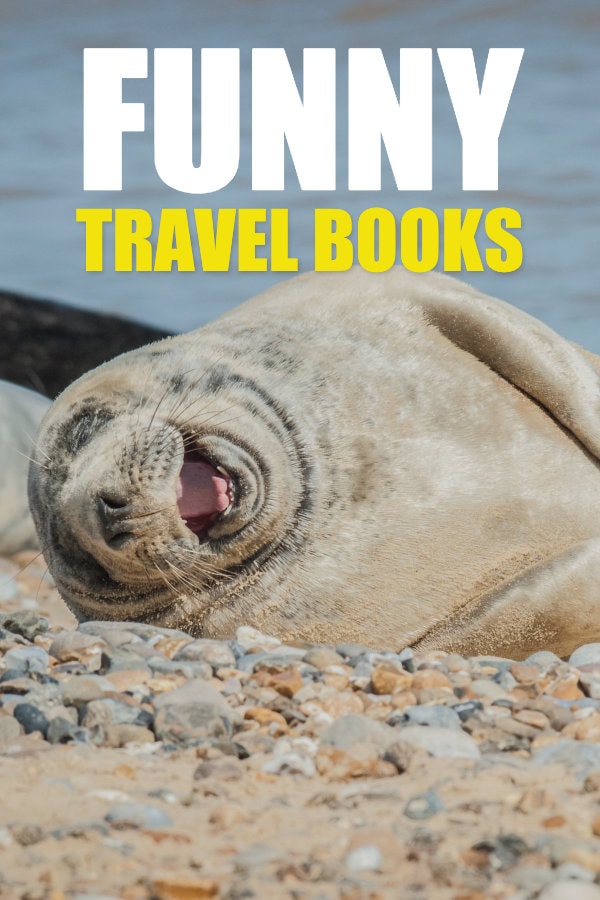
Get The Travel Talk Newsletter
Travel News & Things You Can Use. 👍 Just good content, delivered bi-weekly.
About The Author

1 thought on “The Best Of Humorous Travel Writing”
Great list of offbeat travel books. I’ve read a few of them and will read the others as time permits. Coincidentally, at the same time in 1972 when Bryson and Adams were travelling around Europe, so was I. We may have even bumped into each other, though I visited no restaurants that had guys in lederhosen playing oompah music. I wonder is that why they are two of my favourite writers?
Leave a Comment Cancel Reply
Your email address will not be published. Required fields are marked *
Travel / Comedy

Travel Guidebook: Edinburgh, Scotland

Travel Article: Sleeping on Sofas
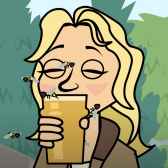
Travel / Comedy: Green & Pleasant

Comedy Sketch: Tallest Building

Comedy Short: Man Who Stopped
Travel writing and editing.
I was lucky to grow up in southeast England at the start of the low-cost airline boom. It meant that, at the age of 16 - and armed with just a paltry pay packet from my after-school job - I could fly off to explore Central and Eastern Europe with a few friends. It kicked off a lifelong love of travel that has (to date) taken me to around 85 countries across five continents.
In the 2010s, I decided to try my luck as a full-time travel writer. Since then, I've worked on travel guidebooks for the likes of Lonely Planet, Fodor's Guides and DK Eyewitness ( all available on Amazon ), and have written a host of travel features for publications including National Geographic, Rough Guides, USA Today, The Guardian, Forbes and The Sunday Times.
Now dividing my time between Prague and Edinburgh, I have carved my niche within luxury and adventure travel. As well as my work as a freelance writer and editor, I'm also the founder and editor-in-chief of travel writing agency World Words .
Comedy scriptwriting and directing
At a young age, I developed a (slightly unhealthy) obsession with British sitcom, from enduring classics like Hancock's Half Hour, Steptoe and Son and Blackadder to 21st century pearls like The Office, Nathan Barley and This Country. Inevitably, I decided to study Scriptwriting for Film and Television at Bournemouth University, then wrote a dissertation on the 'Britcom'.
Since university, I've written everything from topical sketches for BBC Radio to satirical articles for Newsthump. A few years ago I set up Junior Productions to focus on short-form comedy - my recent work includes the multi-award-winning short film The Man Who Stopped, animated comedy web series The Green & Pleasant Guide, and live sketch show Birds (runners up at Sketch Off! 2019). My comedy script Coworking won Short Com's TV Sitcom Writing Competition and is in development.
For a list of my broadcast credits, visit IMDB (for film and TV) and the British Comedy Guide (for all comedy, including radio).

Nat Geo Traveller

- The Guardian

- Lonely Planet

The Sunday Times

- Rough Guides

USA Today 2

Fodor’s

The New York Times

Reader’s Digest

- The Independent

- The Express

Dorling Kindersley

- Junior Productions

Great Speech Writing
My projects.
- Latest projects
Browse by...
- Customer Communication
- Destination Guides
- Feature Articles (Online)
- Feature Articles (Print)
- Hotel and Spa Guides
- Infographics
- Proofreading & Editing
- Scripts & Stories
- Tours & Itineraries
- Travel Books
- Travel Industry Articles
- Website Copy
- Chefchaouen
- Sierra Leone
- El Haouaria
- Heilongjiang
- Inner Mongolia
- Shimonoseki
- Sagarmartha National Park
- North Pyongan
- South Pyongan
- Neusiedl am See
- Baden bei Wien
- Hainburg an der Donau
- Klosterneuburg
- Krems an der Donau
- Petronell-Carnuntum
- Hall in Tirol
- St Anton am Arlberg
- Zell am Ziller
- Lech am Arlberg
- Cesky Krumlov
- Cesky Sternberk
- Czech Switzerland
- Karlovy Vary
- Marianske Lazne
- Carcassonne
- Bad Honningen
- Linz am Rhein
- Thessaloniki
- Balatonfured
- Ireland (Republic of)
- The Dolomites
- San Giovanni d'Asso
- Bagno Vignoni
- Castiglione d'Orcia
- Montepulciano
- Liechtenstein
- Clervaux Castle
- Luxembourg City
- Troisvierges
- Transnistria
- Bay of Kotor
- Sveti Stefan
- Saint Petersburg
- Banska Stiavnica
- Tatra National Park
- Triglav National Park
- Balearic Islands
- Basque Country
- Castile and Leon
- The Vatican
- East Midlands
- Barnard Castle
- Bishop Auckland
- Hadrian's Wall
- Lindisfarne
- Southampton
- Royal Tunbridge Wells
- Yorkshire & the Humber
- Dumfries and Galloway
- North Berwick
- Boat of Garten
- Fort William
- Culloden Battlefield
- Lanarkshire
- Loch Lomond
- South Ayrshire
- Dunfermline
- South Queensferry
- Cayman Islands
- Finger Lakes
- New York City
- Kenai Fjords National Park
- Grand Canyon National Park
- Los Angeles
- San Francisco
- Yosemite National Park
- Glacier National Park
- Philadelphia
- Big Bend National Park
- Bryce Canyon National Park
- Shenandoah National Park
- Washington D.C.
- Grand Teton National Park
- Buenos Aires
- El Calafate
- Los Arrayanes National Park
- Puerto Varas
- San Martin de los Andes
- Laguna Colorada
- Puerto Montt
- Puerto Natales
- Punta Arenas
- Torres del Paine National Park
- Peninsula Papagayo
- Aguas Calientes
- Machu Picchu
- Ollantaytambo
- About Luxury Travel
- All About Cancun
- Amateur Traveler
- Asia Spa Magazine
- Best in Spain
- Best Travel Websites
- Bolsover Cruise Club
- Brummell Magazine
- Cities Talking
- Destinations of the World News
- DK Eyewitness
- Enjoy Sierra Leone
- Everywhere Magazine
- Flight Time (Flybe In-Flight)
- Fodor's Travel Guides
- Forbes Travel Guide
- Fraser Cachet
- Greenprint Magazine
- Honey Travel by nine.com.au
- Huffington Post
- Indus Travels
- Jumeirah Magazine
- Life Refined Magazine
- Lime&Tonic London
- Melt Content
- Monarch Airlines
- National Geographic Traveller
- Overland Magazine
- Pimsleur Approach
- Prague Tourism
- Princess Cruises
- Private Air Magazine
- Reader's Digest
- Scriptwriter Magazine
- Serendib (SriLankan Airlines In-Flight)
- Shoestring Magazine
- Silverkris (Singapore Airlines In-Flight)
- Sitka Convention & Visitors Bureau
- SO/HO Magazine
- StalkingElk Magazine
- Taschen (The New York Times)
- The Johnnie Walker House Edit
- The Sunday Times Travel Magazine
- The Telegraph
- Travolution
- Vertu Select
- VisitScotland
- Voyeur (Virgin Australia In-Flight)
- Welcome Cottages
- World Travel Guide
- Auctions & Investments
- Hiking & Trekking
- Skiing & Winter Sports
- Spas & Swimming Pools
- Sport & Exercise
- Architecture & Design
- Art & Culture
- Cities & Towns
- Comedy & Humour
- Cultural Quirks
- Family & Kids
- Fashion & Style
- Food & Drink
- Health & Wellbeing
- History & Heritage
- Language Learning
- Lifestyle & Living
- Love & Romance
- News & Current Events
- Animals & Wildlife
- Beaches & Coastline
- Cemeteries & Graveyards
- Gardens & Parks
- Islands & Peninsulas
- Mountains & Volcanoes
- Personality Profiles
- Castles & Palaces
- Churches & Cathedrals
- Hidden Treasures
- Museums & Exhibits
- National Parks
- Organised Tours
- Rivers & Canals
- Travel Trends
- Unique Experiences
- Accommodation
- Flights & Transport
- Gadgets & Tech
- Tips & Tricks
- Budget & Shoestring
- Luxury & Ultra-Luxe
- Travel Industry News
- Adventure Travel
- Backpacking
- Beach Holidays
- Business Travel
- Camping & Caravanning
- City Breaks
- Cycling Holidays
- Day Trips & Excursions
- Family Holidays
- Gay & Lesbian
- Green & Eco Travel
- Hospitality Exchanges
- Romantic Breaks
- Sailing Holidays
- Socialism Tourism
- Sporting Holidays
- Winter Breaks
- January 2024
- September 2023
- October 2022
- September 2022
- October 2021
- August 2021
- January 2021
- October 2020
- February 2020
- January 2020
- December 2019
- October 2019
- August 2019
- January 2019
- February 2018
- January 2018
- December 2017
- October 2017
- September 2017
- February 2017
- December 2016
- November 2016
- October 2016
- September 2016
- August 2016
- February 2016
- January 2016
- December 2015
- November 2015
- October 2015
- September 2015
- August 2015
- February 2015
- January 2015
- December 2014
- November 2014
- October 2014
- September 2014
- August 2014
- February 2014
- January 2014
- December 2013
- November 2013
- October 2013
- September 2013
- August 2013
- February 2013
- January 2013
- December 2012
- November 2012
- October 2012
- September 2012
- August 2012
- February 2012
- January 2012
- 2011 & Earlier
- Kooba Radio
- Red C Magazine
- The Best Man Speech
- The Chop House
- Articles & Blogs
- Short Films
- Wedding Speeches
Keyword Search...
See more....
- Editing for World Words
Here's a map of my travels around the world. To date, I've lived in six different countries ( blue markers ) and visited another 85 or so ( red markers ) - including every single country in Europe.
If you would like to hire me as a travel or comedy writer, if you have a press or media enquiry, or if you simply wish to find out more about who I am and what I do, please get in touch by completing this form. I'll get back to you as soon as I can.

27 Funny Travel Books That Will Have You Howling!
Last Updated on January 11, 2024 by Louisa
I love a good travel book, especially one that makes me laugh. While everyone has different tastes in humor, we can all agree that there is nothing better than a good belly-aching laugh at someone else’s expense.
While there are plenty of travel books that make us laugh out there, some are better than others.
I’ve read a lot of funny travel books over the years, and I’ve carefully curated what I believe at the best ones.
Get your tenor lady ready, these books will have you peeing yourself with laughter!
Affiliate Disclosure : This post contains affiliate links, which means I may receive a small commission, at no extra cost to you, if you make a purchase through any of these links.
Quick Answers: 3 Best Funny Travel Books!
Need a book fast but don’t have much time? Here are my top three favorites!
Our Favourites!
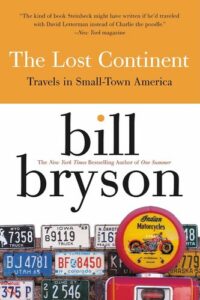
#1 Best Highly Acclaimed Novel
Lost Continent by Bill Bryson
- International bestseller
- Hailed as one of the best travel writers of all time
- A hilarious novel about journeying through small-town America

#2 Best Travel Memoir
Not Tonight Josephine by George Mahood
- A hilarious novel about a British man travelling around the backroads of America
- An up-and-coming author with lots of promise
- Well written, easy to read, and a lot of belly-aching laugh moments

#3 Best by a Comedian
How to Survive Family Holidays by Jack Whitehall
- From highly acclaimed stand-up comedian Jack Whitehall
- Part memoir, part advice-giving, with a few comments from mother and father Whitehall
- Hilariously written with a lot of dad jokes
Hilarious Non-Fiction Travel Books
I begin my list with some incredibly funny travel books that are based on real-life situations. Some of the scenarios you get into on your travels are so far-fetched, you can’t possibly make it up. And that’s what these non-fiction travel books demonstrate so well.
So here they are, my favorite funny travel books based on true events.
1. Not Tonight, Josephine : A Road Trip Through Small-Town America – George Mahood

I begin my list with my ultimate favorite funny travel book by George Mahood . His debut novel, Not Tonight, Josephine , literally had me in tears of laughter!
Mahmood shares a diary of the time he and his best friend, Mark, bought a banged-up station wagon in New York and decided to road trip across the small towns of America.
The vehicle, which they named Josephine, was unreliable, old, and had bullet holes in the back window. What could go wrong?
It turns out, quite a lot actually, which is what gives this novel its funny edge. But even though Mahmood went through some tricky situations.
There is no doubt that his travels across America were a blast and you really get a feel for how special it was to him.
Honestly, I was sad when the book was over. I also loved his book, Travel with Rachel: In Search of South America , which was his next trip after this one.
It’s more of a light read and can be finished pretty quickly, and I personally found Not Tonight Josephine funnier.
View it on:
2. Whatever You Do, Don’t Run: True Tales Of A Botswana Safari Guide – Peter Allison

This hilarious novel by Peter Allison is a brilliant collection of fascinating stories of hilarious happenings that took place while he was an African safari guide.
Allison has seen it all, confronting the most fearsome of creatures and tough African terrain, but the biggest challenge of being a safari guide is…the people.
These stories are so outrageous that you can’t possibly make them up. It’s surprising how stupid and reckless some people can be, including being asked to be charged by a lion so a tourist can videotape it.
These tales will have you howling with laughter, as well as slapping your forehead saying “I can’t believe these people exist.” We can all empathize with Allison, but in his misery, we find comedy.
3. All Over The Place: Adventures in Travel, True Love, and Petty Theft – Geraldine DeRuiter
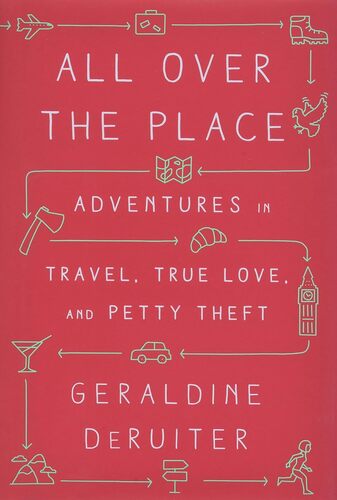
All Over the Place is the hilarious chronicle of Geraldine Deruiter, who after getting laid off from her job, decided to travel the world in search of adventure.
The only problem was, Deruiter wasn’t quite prepared for what was out there. Unable to read maps, has only a vague idea of where Russia is, and is terrified of pigeons. Not the toughest traveler material by any means.
However, from the experience, she learned a great deal and has a hilarious story or two to tell along the way.
She learned that traveling the world with someone you already know and love can make faraway places feel like home.
She learned about lost luggage and lost opportunities, and…well, getting lost in general.
But most importantly, she learned that you should always be yourself, no matter where you are and how silly you look.
4. Footloose: Twisted Travels Across Asia, From Australia To Azerbaijan – Mark Walters
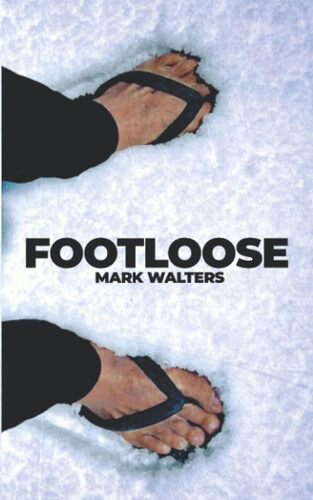
Footloose is the incredible story of how Mark Walters traveled from Sydney, Australia to Azerbaijan without flying and wearing flip-flops for the whole journey. He also doesn’t own shorts or a towel.
Using buses, train travel, and boats that ventured across three continents, Walters shares the exciting and hilarious tales of his travels. and the people he met.
From coming face-to-face with a risky gauntlet of terrorists and Chinese tanks, and having beers with a naked ex-Soviet officer, to eating hallucinogenics for breakfast in Amsterdam.
Walter’s journey is packed with adventures that are both comical and a little frightening!
5. In A Sunburned Country – Bill Bryson
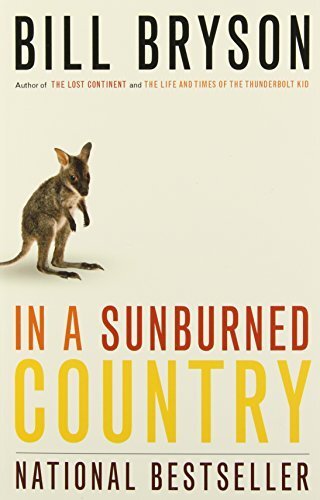
Bill Bryson is a well-acclaimed funny travel writer, and choosing which of his funny travel stories should make this list of the funniest travel books of all time is not an easy task.
Especially since Bill Bryson has been hailed as one of the funniest travel writers in history.
His previous novel, A Walk in the Woods which tells the story of his journey around the Appalachian trail had such great success.
I was incredibly excited to read In A Sunburned Country , which takes the reader on a journey through off-the-beaten-track Australia in the eyes of Bill Bryson.
As Bryson talks about his time in Australia, he offers a great introduction to whimsical and cheerful characters.
In a country that has more deadly creatures than any other, Bryson’s comedy style of travel writing will have you longing for a trip to Australia.
6. Queenan Country – Joe Queenan
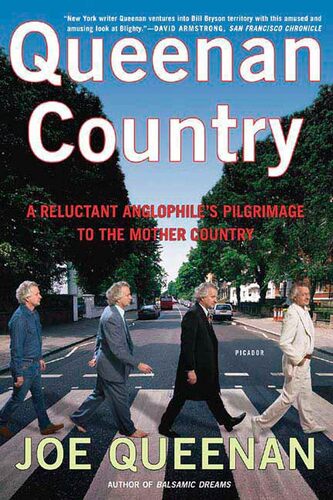
Joe Queenan is an American humorist who sought to answer one important question: what makes the Brits tick?
When Queenan’s English wife suggested cooking a chicken vindaloo on the 4th July for dinner instead of the traditional BBQ, after 26 years of marriage, he decided he had to find out what is going on in the mind of the Brits.
After taking a solitary pilgrimage to Great Britain to figure out why British people are the way that they are.
He describes all the traits and mannerisms that make British people different from the rest, including detailing all the quirky oddities that are unique to British culture.
Whether you’re reading this funny book as an American or a Brit, you can’t help but laugh at all the stereotypes and characters he meets along the way.
7. Westward Ha! – S.J. Perelman
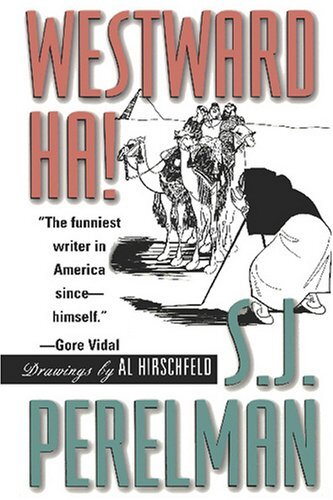
Westward Ha! describes the misadventures of satirical journalist and former foreign correspondent S.J. Perelman.
In these madcap travel chronicles from Hollywood to China, Singapore, Thailand, India, and Egypt, as well as several cities in Europe, Perelman and his cartoonist companion, Al Hirschfield, tell of their hilarious adventure through former war zones.
Their journey takes them to faraway places, where they learn about other cultures during a time that was a little perilous being just a few years after WWII.
Hailed as one of the best comic writers of his generation, Perelman’s funny travel writing is considered zany, snappy, and with a little bit of self-mocking too.
There are some real belly-aching laughs in this story, which is on the whole lighthearted and enthralling.
8. Sisters Behaving Badly: The laugh-out-loud, feel-good adventure – Maddie Please
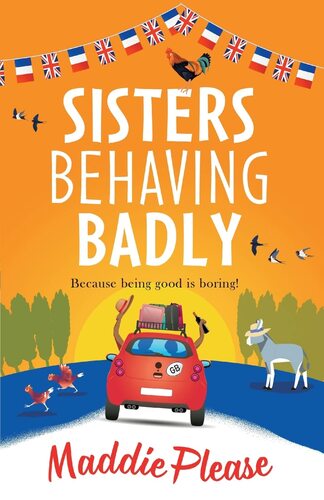
After an argument at a Carvery lunch, sisters Kitty and Jenny stop speaking to each other. But when both sisters inherit a rural French farmhouse, they are given an opportunity to right some wrongs.
Only the farmhouse is a mess and the farm animals have terrorized the garden.
This comical book set in France will have you holding your sides with laughter!
As the two sisters repair their relationship, Kitty is determined to enjoy herself with the handsome neighbor, while Jenny finds comfort in the fully stocked wine cellar.
This laugh-out-loud comedy travel book highlights how sometimes it feels good to be bad.
9. Going the Wrong Way – Chris Donaldson

Going the Wrong Way is a coming-of-age, travel book of self-discovery that tells the story of Chris Donaldson’s road trip from his home in Belfast across Europe, Asia, and the Americas on his Moto Guzzi Le Mans motorbike.
Going The Wrong Way takes the reader back to the 70s, during simpler times, before technology and social media. It’s raw, honest, edgy, and packed full of adventure and hilarious experiences.
In it, Donaldson reflects on his journey that took him all the way to the highs of the Andes and lows of the outback, traveling more than 50,000 miles, before returning to Belfast.
This is part humor and part thought-provoking memoir. This is not only a motorcycle adventure book, but also a compelling tale that will leave you with a sense of wanderlust and admiration for the author’s resilience and determination.
Donaldson will have you howling with laughter in some places, and biting your nails in anticipation in others.
His writing style is effortless to read, as though you are reading the mind of a friend, but his knack for storytelling is what really sets him apart as an author.
10. Dishwasher: One Man’s Quest to Wash Dishes in All Fifty States – Pete Jordan
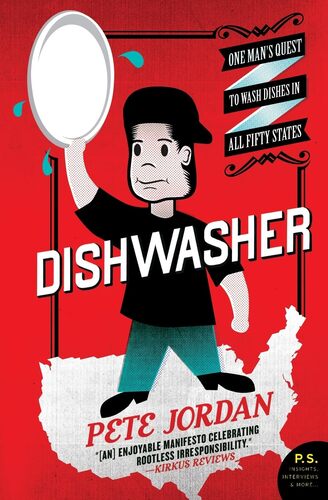
Pete Jordan’s Dishwasher is an amusing travel memoir of his adventures dishwashing his way across America.
Part adventure, part humor, and part journey of self-discovery, “Dishwasher Pete” talks about how he spent 12 years washing dishes from a bagel joint in New Mexico to a Mexican diner in Brooklyn before he gave it all up for love.
The premise is very simple, but it’s hilariously written and Jordan is clearly a very smart and funny guy. If you love a love story like the likes of Nick Hornby and Tom Perotta books, you’ll also love this.
11. Round Ireland with a Fridge – Tony Hawks

After losing a drunken bet, Tony Hawks set out on a hitchhiking journey around Europe with a fridge.
As you can imagine, the experience of lugging a domestic appliance around the continent would lead to hilarious encounters, including meeting a real prince, a bogus king, and a priest who christened the fridge.
They had been through a lot together, and as Hawks describes his adventures, you forget that at times he is talking about an inanimate object and not a best friend.
This novel quickly became an international bestseller, with writing similar to that of Bill Bryson and Dave Barry.
12. That Bear Ate My Pants – Tony James Slater

Contrary to what the title suggests, a bear did not actually eat Tony James Slater’s pants, but it does give you an idea of the hilarious travel stories you’re about to read in this epic travel memoir.
This part travel memoir, part self-help book, is the journey of Slater as he tries to better himself as he volunteers at an animal refuge in Ecuador.
From battling a tree with a machete, finding numerous tarantulas (both alive and dead), and helping to sew the head back onto a partially decapitated crocodile, you wouldn’t believe the great stories that Slater has to tell!
13. Blue Latitudes: Boldly Going Where Captain Cook Has Gone Before – Tony Horwitz

From the Pulitzer Prize-winning author of Confederates in the Attic, Tony Horwitz details his adventure as he retraces the voyages of Captain James Cook.
In the 18th century, Captain Cook’s voyages were considered the last of the great adventures of the seas. He sailed 150,000 miles from North to South poles, from Oceania to North America, and from Easter Island to Siberia.
He was essentially responsible for drawing the map of the world.
Tony Horwitz was inspired and decided to embark on the same quest. In Blue Latitudes, he vividly recounts tales from Cook’s voyages.
The details from his own adventures, from places such as Tahiti, Savage Island, and the Great Barrier Reef.
After signing on as a crewman aboard a replica of Cook’s vessel, Horwitz has first-hand experience of the life, highs and lows of life on the high seas.
In this insightful and hilarious novel, Horwitz brings the life and times of Captain Cook to life!
14. Hokkaido Highway Blues – Will Ferguson
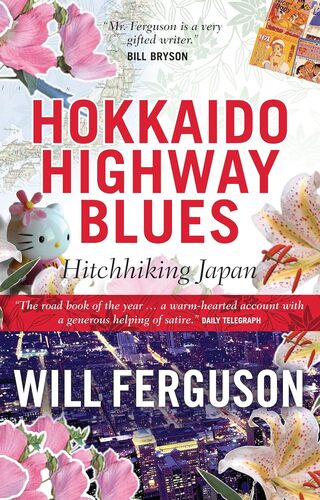
Hokkaido Highway Blues is a memoir by Will Ferguson, who hitchhiked the length of Japan following the Cherry Blossom Front.
Along the way, he racks up a hilarious collection of funny travel stories which have you laughing as you read the entire book from start to finish.
As well as the hilarious situations he gets into along his journey, you also learn a lot about Japanese culture.
Of course, he is largely poking fun at himself, but the cultural differences are what make this one of the top funny travel books of the 21st century.
15. Holy Cow: An Indian Adventure – Sarah Macdonald
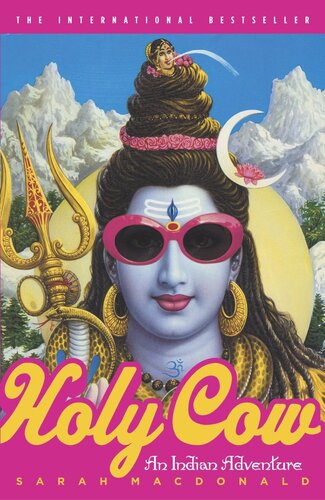
Holy Cow is the hilarious account of journalist Sarah Macdonald’s return to India, after swearing an oath never to return after her backpacking trip there in her 20s.
Now married and forced to live in New Dehli because of her husband’s job, so begins the funny travel stories of her time in India.
Although these stories are funny, there is a nice balance between memoir and educating the reader about the spirituality and cultural traditions of India.
If you’re ever looking for travel inspiration about the mystical land of India, be sure to add Holy Cow to your reading list.
16. The Full Montezuma – Peter Moore
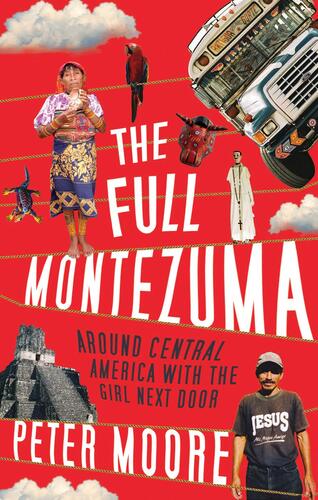
Peter Moore is one of those travel writers who never disappoints! One of my favorite books by him is The Full Montezuma . It tells the story of a time he traveled around Central America in a budding relationship.
Not the most exotic of destinations to take your new girlfriend, especially after it had just come out of decades of civil war and poverty, disease, and natural disasters were rife.
Since she is only referred to as ‘The Girl Next Door’ you get a good idea of how the journey turned out.
The good news is that six months of backpacking together made for hilarious stories and a truly great insight into what life in Central America is like. But hey, not everyone can endure hurricanes and mosquitos galore!
For all the highs and all the lows, I’m here for it.
Funny Travel Books Written by Comedians
It would come as no surprise that the funniest travel guide usually comes from those written by comedians.
17. Made in Scotland: My Grand Adventures In a Wee Country – Billy Connolly
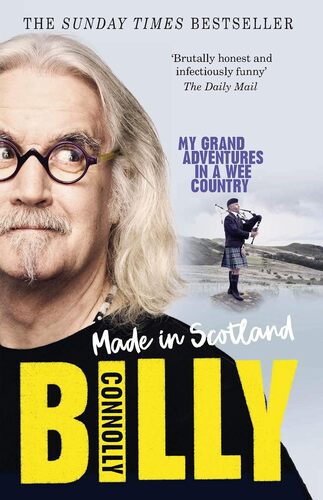
A Sunday Times Bestseller, Made In Scotland: My Grand Adventures in a Wee Country is a hilarious novel by Billy Connolly, Scottish comedian, and national treasure, as he journeys around his homeland and reflects on his Scottish roots.
In Made in Scotland, Connolly talks about what it means to be Scottish, both now and in the past, and how Scotland has affected his life.
Of course, being written by a professional stand-up comic means it is packed with Billy’s distinctive Scottish humor, but it is more than that. It’s also a heartfelt love letter to the land and people from his home of Scotland.
18. How to Survive Family Holidays – Jack Whitehall

Stand-up comedian and TV personality, Jack Whitehall shares his top secrets on How to Survive Family Holidays .
Part memoir, part Lonely Planet Guide Book, this is a middle-class family’s version of what it’s like to travel the globe as a family, and not tear each other’s throats out.
As you might expect, it also has some comedy anecdotes from Jack about his former family holidays, which are both witty and relatable.
With a few comments thrown in from Mommy and Daddy, this whimsical book is a short but hilarious book on travel that will leave you in stitches.
Best Funny Travel Books of All Time
Not all hilarious travel books are written by comedians and based on true events.
Some of the best travel books of all time simply need a good, imaginative story, and an excellent author behind the pen.
These are my all-time favorite funny travel books.
19. T. Rex Time Machine – Jared Chapman

Of course, I had to include a funny travel guide for children on my list! The T.Rex Time Machine is a hilarious children’s book that tells the story of two hungry dinosaurs that jump into a time machine and transport to the future.
What they see is unbelievable and surreal, as they come to terms with all the wonders of the modern world.
Written by author and illustrator, Jared Chapman, this hilarious novel is packed full of jokes and funny adventures.
His use of bold colors and the adventurous storyline will have your children entertained and giggling throughout.
It will be a book that will stay in your family for generations.
20. The Hitchhiker’s Guide To The Galaxy – Douglas Adams
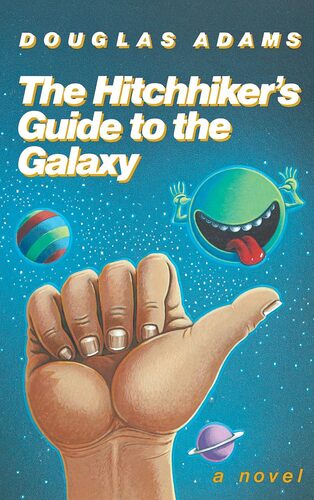
While The Hitchhiker’s Guide to the Galaxy is not your conventional travel book, after all, it does take place in space, it is a hilarious cult classic novel about traveling and exploring new places.
After a bulldozer turns up at Arthur Dent’s home, he didn’t know it, but shortly after it would be the end of planet Earth, and he would find himself hitchhiking on a spaceship.
Along the way, he meets a variety of comical characters who help him come to terms with his new life of space travel and adventure.
The events in this funny travel book are both random and absurd, but pleasantly enjoyable and will have you laughing your socks off!
It’s a lovable story that was ranked number four on the BBC’s “Big Read” , an event designed to find the Nation’s top books.
21. The Sex Lives of Cannibals – J. Maarten Troost

The Sex Lives of Cannibals: Adrift in the Equatorial Pacific is a travelogue by author J. Maarten Troost who describes the two years he and his girlfriend spent living on Tarawa atoll, a remote South Pacific Island nation of Kiribati.
And no, before your mind goes wandering, it’s not really about the sex lives of cannibals…jeez!
It talks about how he and his girlfriend adjusted to everyday life on the remote island and built a life for themselves there.
Complete with some unusual people and bizarre and unfamiliar local customs, the author reminisces on his own American complacency towards America’s history.
He also describes his overwhelming fish-based diet, how he handled the extreme heat and ineffective government, the frequent electrical and water shortages, and many other hilarious idiosyncrasies of living on a small and remote island.
22. The Innocents Abroad – Mark Twain
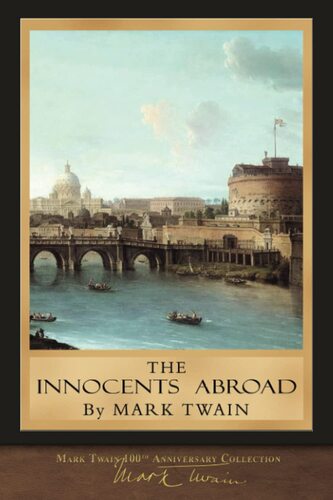
The Innocents Abroad is a classic funny travel book by highly acclaimed author Mark Twain, famous for writing the Tom Sawyer and Huckleberry Finn novels.
It tells the story of a long excursion between Mark and a group of fellow travelers shortly after the Civil War. The humourous story takes the reader through Paris, Italy, Greece, Egypt, and the Holy Land, during the time of 1869.
During Twain’s life, The Innocents Abroad became his highest-selling book and is hailed as one of the best travel books of all time.
The story is riveting, hilarious, and entertaining, as well as enlightening.
23. Great Railway Bazaar – Paul Theroux
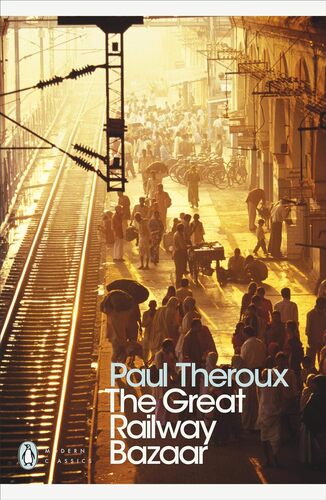
The Great Railway Bazaar is a travelogue by Paul Theroux, who traveled for four months across Eastern Europe, the Middle East, the Indian subcontinent, and Southeast Asia, on the Trans-Siberian Railway.
Part memoir, part Lonely Planet-style guidebook, this entertaining railway odyssey is a classic piece of travel literature.
As he travels halfway across the world on the trains, he details his observations and hilarious encounters in a comedic style of travel writing.
While this book is a bit dated compared to the others on this list, it is no doubt a classic funny travel book that would make anyone’s heart fill with joy.
24. Lost Continent: Travels in Small-Town America – Bill Bryson
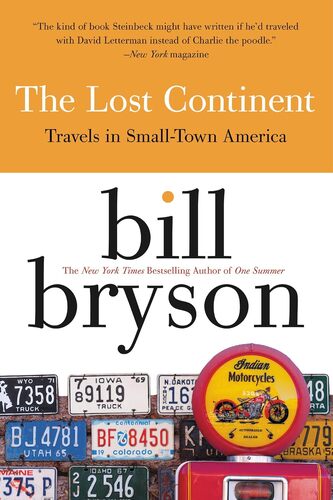
Ok, I know I said that I had to choose one of the best Bryson books for this awesome list of the best funny travel books but that was before I remembered The Lost Continent.
With an urge to discover his youth, Bill Bryson embarks on a journey through small towns in America across 38 states.
As he’s rediscovering America, he paints a perfect picture of his boredom, meetings with strangers, and all the colorful experiences he has.
Bryson’s humorous books are loved by the whole family and it’s no wonder he’s an international bestseller.
25. Best. State. Ever: A Florida Man Defends His Homeland – Dave Barry
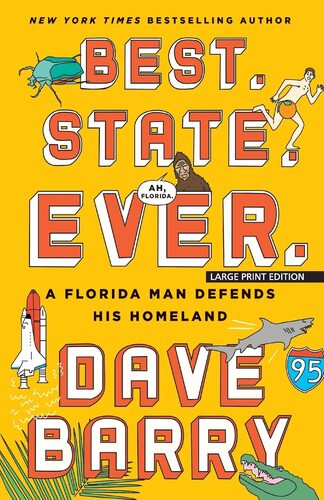
From New York Times bestselling author, Dave Barry, Best State Ever is a brilliantly funny travel book that defends how Florida is the greatest place on Earth – at least, in the eyes of Barry.
Barry tells a story about how there is always something happening in Florida, and how somehow the state has been labeled as a place of subtropical stupidity. But loyal Floridian Barry begs to differ.
As Barry defends his homeland, he shares some of the most hilarious adventures he’s had in Florida.
It’s including going hunting for the legendary Skunk Ape; visiting the psychic capital of the world, Cassadaga, to have his dog’s aura read; enjoying the thrills of alligator wrestling; and what it’s like to visiting a clothing-optional bar in Key West.
Whatever your opinion of Florida is, you can’t deny that Barry has a very appealing case after reading this book.
26. Don’t Go There: From Chernobyl to North Korea – Adam Fletcher

Don’t Go There is an unusual and hilarious travel memoir by Adam Fletcher has he visits ten of the strangest places on Earth.
To understand why people keep telling him “Don’t go there” he embarks on a journey through a blizzard in China carrying only a pack of biscuits; through the radioactive aftermath of Chornobyl.
It is chased by the Croatian police as he tries to visit the world’s newest country, Liberland, and comes face-to-face with two supposedly dead dictators in North Korea…and so much more.
His journey is both fascinating and hilarious, packed with British humor, and a story that is absolutely unforgettable.
27. Last Chance to See – Douglas Adams & Mark Carwardine
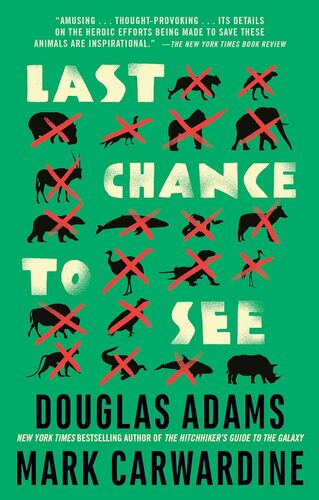
Last Chance To See is a 1990 novel by the acclaimed author Douglas Adams and co-author and zoologist Mark Carwardine.
In this novel, Adams and Carwardine take the reader on a journey to various locations that they have traveled to. On their travels, they try to find places where they will encounter endangered species on the brink of extinction.
This funny non-fiction travel book starts in Africa and continues on to Asia and the Northern tip of America.
On the hunt for animals, what they find were troublesome tourists, bureaucracy, and poachers.
While this three-year-long adventure highlights the imposing truth about how we need to work to save endangered species, Adams’s humorous travel writing style is evident throughout as he discusses his adventures with Carwardine.
Like this post? Don’t forget to save it on Pinterest.

Final Words on Best Funny Travel Books
So there you have it, my all-time favorite funny travel books, from classic non-fiction biographies and memoirs to far-fetched make-believe. There’s something for everyone on my list.
If you enjoy travel books that are light-hearted and fun, then you might also like these books set in Hawaii .
Do you have a favorite? Let me know in the comments!

About Louisa Smith
Editor/Founder - Epic Book Society
Louisa is the Founder, Editor, and Head Honcho of Epic Book Society. She was born and raised in the United Kingdom and graduated from the University for the Creative Arts with a degree in Journalism. Louisa began her writing career at the age of 7 when her poetry was published in an anthology of poems to celebrate the Queen's Jubilee. Upon graduating university, she spent several years working as a journalist writing about books before transitioning to become a Primary School Teacher. Louisa loves all genres of books, but her favorites are Sci-Fi, Romance, Fantasy, and Young Adult Fiction. Read more Louisa's story here .
Leave a Comment Cancel reply
Save my name, email, and website in this browser for the next time I comment.
This site uses Akismet to reduce spam. Learn how your comment data is processed .
Site Navigation
Affiliate Disclosure : This website uses affiliate links, meaning I may earn a small commission through purchases made through this site at no extra cost to you. Epic Book Society is a participant in the Amazon Services LLC Associates Program Affiliate Program. As an Amazon Associate, I earn from qualifying purchases.
Join the Society!
Want to connect with other bookworms?
We've created a place where book lovers can come together and share recommendations and ideas with each other. There will be no spam from us, that's a promise .
Click the button below to join our exclusive Facebook group.
Contact Us: [email protected]
Follow our socials:
© 2023 Epic Book Society • Built with GeneratePress
- Work & Careers
- Life & Arts
- Currently reading: How comedy conquered the world of travel writing
- Glamping in Greenland: the ultimate getaway
- Skiing Mount Elbrus — Europe’s highest peak
- The world until yesterday: meeting the tribes of Ethiopia’s Omo Valley
- A quest to see the elusive blue poppies of Bhutan
- Namibia and a safari at the end of the world
- Speed skiing: too fast for the Olympics
How comedy conquered the world of travel writing
- How comedy conquered the world of travel writing on x (opens in a new window)
- How comedy conquered the world of travel writing on facebook (opens in a new window)
- How comedy conquered the world of travel writing on linkedin (opens in a new window)
- How comedy conquered the world of travel writing on whatsapp (opens in a new window)
Roula Khalaf, Editor of the FT, selects her favourite stories in this weekly newsletter.

Twenty years ago this summer, white-faced and jelly-legged, I pushed my bike down the gangplank of an Icelandic container ship and on to a Reykjavik quayside. The storm-tossed four-day crossing from England was the first leg of a journey following in the cold, wet footsteps of Lord Dufferin, who in 1856 sailed all around the North Atlantic and right up to Spitzbergen, gateway to the North Pole. Dufferin was the blithe and indefatigable embodiment of Kipling’s “If”, a witty, erudite adventurer who would later serve queen and country in the most exalted offices of empire, as viceroy of India and governor-general of Canada. Having spent the voyage in the grip first of catastrophic seasickness, and latterly a hallucinogenic overdose of remedial medication, I had long since given up on emulating the young lord’s intrepid insouciance as I traced his itinerary. Instead I was now firmly identifying with his misanthropic, self-pitying valet Wilson, the eminently defatigable butt of Dufferin’s bons mots .
The contrast between Dufferin’s derring-do and my Wilsonian derring-don’t underscored the erratic two-month journey that ensued, and the book I wrote about it, my first. A durable truth had established itself, best summed up by a paraphrase of Tolstoy’s famous quote about families: happy holidays are all alike, but every unhappy holiday is unhappy in its own way. Trauma, discomfort and humiliation regrettably make better copy than plain sailing. Perhaps I should have explained that to the unfortunate cabin-mate who watched me throw up into my polo neck as I was pulling it off.
But Dufferin’s own travelogue, Letters from High Latitudes , also offered unexpected inspiration. This work should by rights have been a typical product of the British colonial era’s literary output: the humble-brag telling of hardships borne stoically in pursuit of a punishing expeditionary quest. Instead, Dufferin largely played it for laughs. He reports that Wilson was “never seen to smile but once, when he came to report that a sea had nearly swept his colleague, the steward, overboard”. An alcoholic banquet with the governor of Iceland is described with the reckless brio of a Victorian Hunter S Thompson: “Was not I my great-grandfather’s great-grandson, and an Irish peer to boot? Were there not traditions, too, of casks of claret brought up into the dining room, the door locked, and the key thrown out of the window? With such antecedents to sustain me, I ought to be able to hold my own against the staunchest toper in Iceland. So, with a devil glittering in my left eye, I winked defiance right and left, and away we went at it again.”

I didn’t quite appreciate it at the time, but this pillar of the aristocracy had composed the first work of comic travel writing. Its irreverence and jaunty flirtations with disaster prefigured the better known (and fictional) travelogues of Jerome K Jerome by several decades. In fact it would be almost a full century before anyone else picked up the baton.
The comic travelogue is a very British invention. For long centuries, our stubborn island mentality made every Channel crossing a voyage into the hostile unknown. “Abroad is unutterably bloody, and foreigners are fiends,” as one of Nancy Mitford’s characters put it. But once the empire began to collapse, that sneering superiority seemed almost instantly laughable. How preposterous, in retrospect, that such a tiny nation should have held dominion over half the planet. We had risen way above our station, taken ourselves far too seriously, and could only atone with self-ridicule.

Published in 1958, Eric Newby’s laconically titled A Short Walk in the Hindu Kush was a pomposity-pricking parody of all those stiff-upper-lipped expeditionary travelogues. The book tells the story of Newby’s ascent of an unclimbed 20,000ft peak in the middle of some Afghan nowhere: a familiarly random challenge in the old British tradition, but one related with a very unfamiliar blend of self-deprecation and almost suicidal cluelessness. Nearing the summit, Newby — a haute couture fashion buyer unburdened with relevant experience — finds himself with an ice pick in one hand and a climbing manual in the other, flicking precariously through the pages in search of instruction.
A Short Walk begins with a glowing introduction by Evelyn Waugh, who astutely identifies “the essential amateurism of the English” as the bedrock of all native travel writing. And it ends with an encounter that seems to signal the changing of the guard, when Newby’s party bumps into the doyen of old-school gentleman explorers in a remote gorge. Wilfred Thesiger was then midway through another of the fearsomely hardcore five-year expeditions that his dry and patrician travel literature described. After the two parties agree to pitch camp together, Thesiger watches Newby and his colleague inflate their air-beds with utter contempt: “God, you must be a couple of pansies.”
Tragically for Thesiger, tomorrow belonged to the pansies. A Short Walk sold 500,000 copies, a vast total for the time, and Newby’s later travelogues would notch up more than a million sales. Reading some recent Amazon reviews of Thesiger’s travel books, I’m struck by the number that criticise their impersonality: readers complain about his “unemotional” writing and note that “we learn little about the author himself”. Newby’s comic touch, meanwhile, relied on his engagingly autobiographical style, and by placing himself centre stage — as a hapless anti-hero — he brought a new voice to the genre. Readers understood that beyond its capacity to entertain, humour could offer a deeper, more human insight into unfamiliar cultures than haughty, big-picture travelogues or dour and dutiful appraisals of museums and galleries. However hilarious Newby’s selections from his Bashgali phrase book, they also spoke evocatively of the brutalities of daily life in the Nuristan mountains: “I have nine fingers; you have ten.” “A dwarf has come to ask for food.” “Why do you kick my horse? I will kick you.”

Looking back, Newby was a missing link between the aloof touring aristocrats of yore and the coming generation of mass-market wisecrackers. Later, as travel editor of The Observer, Newby fought a lonely battle against the irresistible rise of package tourism and universal sightseeing. “The distinction between travel and holiday had become apparent,” recalled Donald Trelford, his boss at The Observer, “and Eric represented travel — the further away from people the better.” Redmond O’Hanlon was a kind of 1980s Newby, tapping into the comedy of terror on excursions deep into some of the world’s remotest jungles. But it wasn’t until the 1990s that a travel writer dispensed with lonely misadventure and faraway mystique, and wrote an extremely funny book about places everyone now went to, enduring universal tourist setbacks along the way.
Neither Here Nor There wasn’t Bill Bryson’s first travel book, nor one of his most successful: today it ranks as an also-ran behind all those multimillion bestsellers. But I don’t think I was alone in finding it a revelation. In fact I know I wasn’t, as shortly after my first travel article appeared in print in 1991, an editor wrote to me, name-checking the book and asking if I’d thought about doing something similar. Revisiting the European cities he went through as an interrailing student, Bryson’s low-level mishaps are finessed into high comedy.
Near the start, he gets off at the wrong station in Brussels, and walks for hours down “the sort of streets where they sell swimming-pool pumps”, trudging towards what looks like the Palais de Justice from afar but slowly comes into focus as a dog-food factory. He has hungover rows with receptionists, and whiles away a long train journey honing revenge fantasies against an elderly man for folding his jacket in an excessively fussy manner. It was everything travel writing had never been about. But with the advent of budget airlines, independent touring had been democratised, shrinking the world and blurring Donald Trelford’s boundaries between travel and holiday. We were all travellers now, and Bryson was the bearded, grumbling everyman on the seat opposite, watching how we folded our jackets.
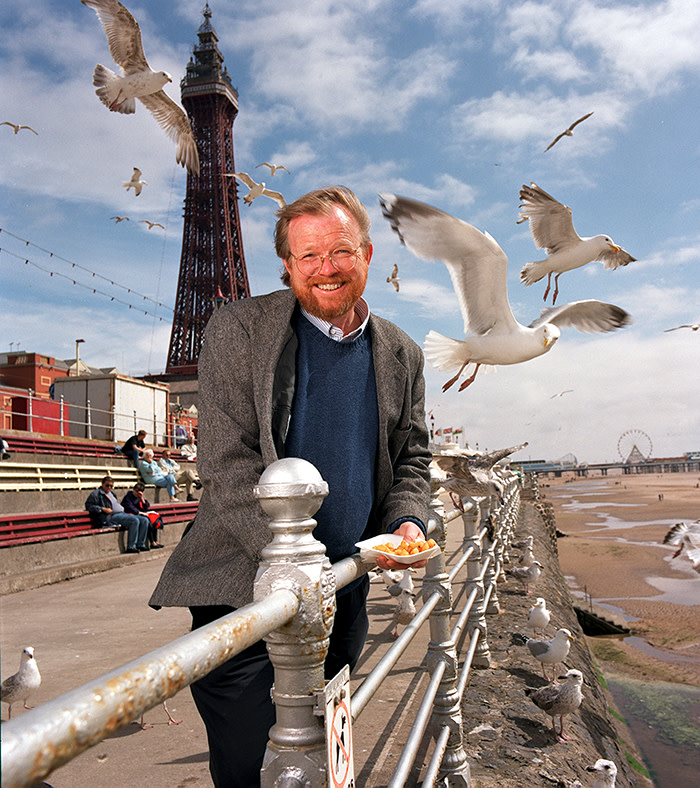
The Iowa-reared Bryson wasn’t British, of course, but he’d lived here for most of his adult life, developing a mid-Atlantic mindset that let him make fun of our continental neighbours without coming across as a graceless Jeremy Clarkson. It also afforded the semi-detachment that made a hit of Notes From a Small Island , a fondly exasperated bed-and-breakfast tour of his adopted homeland. Bryson single-handedly reinvigorated the comic-travel genre, not least through the sheer force of commercial success: Notes From a Small Island has sold more than 2m copies.
He also played his part in its next evolution, following a rash attempt to hike the 2,200-mile Appalachian Trail that would spawn 1998’s A Walk in the Woods . By the turn of the century, package tours had been done to death and jaded travellers — as well as armchair adventurers — were looking for more offbeat and challenging inspiration. With a nod to Newby, comic travel-writing revisited the overambitious quest.

The native penchant for inherently absurd expeditions had long been a magnet for British comedians: in their first post-Python collaboration, Michael Palin and Terry Jones wrote Ripping Yarns , a television series parodying the colonial era and which included an episode memorably entitled “Across the Andes by Frog”. In 1999, comedian Tony Hawks made a drunken bet that would in due course result in Round Ireland with a Fridge (in which he hitchhikes round Ireland, with a fridge). By shifting 800,000 copies, this paved the way for a whole raft of high-concept authorial quests: Dave Gorman, another comic, travelling the world to meet other Dave Gormans ( Are You Dave Gorman? ); Pete McCarthy dropping in on namesake Irish pubs ( McCarthy’s Bar ); Hawks again ( Playing the Moldovans at Tennis ); and, well, me.
Last year, for my 10th book-related mission, I drove a 1924 Model T Ford 6,200 miles across the US, taking a circuitous route through the counties with the highest Trump vote. The rationale of Another Fine Mess : to bookend the American dream. In manufacturing 15m “Universal Cars” — and paying unheard-of wages to the workers who built them — Henry Ford launched his nation’s globe-bestriding golden age. The election of Donald Trump seemed to close a door on this era, and on the frugal, honest Midwestern values that defined Henry Ford and his creation. Why had the same small-towners who hero-worshipped this self-made Midwesterner now put their faith in a shameless, trash-talking New York property heir? It would be disingenuous to insist there was only one way to find out, but that’s never stopped me before.
The book’s predecessors have seen me walk across Spain with a donkey who really didn’t want to, time-travel through 2,000 years of smoky living history, and do an awful lot of cycling on bikes of ever-decreasing practicality. Along the way I’ve drawn inspiration from most of the authors mentioned in this article, though my debt to Bill Bryson has accrued the highest rate of interest. After I wrote up a tour of Britain’s worst places — You Are Awful (But I Like You) — I had to beg my publishers not to title it “Notes From a Crap Island”. Partly to retain a spoonful of self-respect, but mainly from a sense of unworthiness. To my enduring frustration, I’m not as good as Bryson, and sometimes wonder if I’ve tried to compensate by ramping up what springboard divers refer to as the degree of difficulty.

By his own cheerful admission, Bryson completed less than half the Appalachian Trail: the only way I’ll best him is by finishing whatever I’ve started, no matter how dotty or demanding. And it’s not just him I’m up against. When I rode the route of the Tour de France in 2000, it was seen as an impressive standalone feat, particularly by those who didn’t see the final average speed on my bike computer. But these days, thousands of ordinary people set out on extraordinary rides and hikes, without being forced to by an editor. Three years ago, riding 5,800 miles down the full length of the old Iron Curtain, the only other British cyclists I encountered told me they were en route to the Great Wall of China. I thought: thank Christ I’m doing this otherwise much less impressive ride on a ridiculous Communist-era shopping bike.
Not every daft quest comes with a guarantee of humorous jeopardy. I drove a decrepit Rolls-Royce to Venice and back in the confident expectation of countless showdowns with snide and gloating French mechanics, but the useless thing never broke down once. The right daft quest, though, can deliver uniquely fruitful interactions. A conspicuous but winsome travelling companion (tiny bicycle, donkey, Model T Ford) offers a disarming “in” with locals, particularly when it lets you down. If you break it, they will come. Who’d have thought Trump voters would be so unendingly kind and helpful to a foreign motorist in need?

You’re looking for trouble, while praying you don’t find too much of it. Opting to recreate the murderous 1914 Giro d’Italia on a 1914 bike seems a very regrettable gimmick when you’re descending the Alps on wooden wheels with wine corks for brakes. After my Model T destroyed its third connecting-rod bearing, my quest was sailing very close to the wind. It hit an iceberg when the crankshaft snapped in two. And however instructive it is to discover how others deal with your adversity, in the end you’ll be spending at least as much time on a Newby-pattern inquest into how you deal with it yourself.
Full disclosure: these generally formidable biannual undertakings go right against my grain. By inclination, I’m a domestic potterer whose comfort zone lies at the end of his garden. I’m also a bit of an idiot. On the first morning of my trans-American drive, there I was on the motel forecourt with the bonnet up and my phone in my filthy fingers, with “Where do you put oil in a Model T?” entered in the Google search box. So my life oscillates unhealthily between extremes of inertia and adventure, which does at least mean I never have to pretend to be completely overwhelmed by whatever I’ve signed up for this time. It also means I stick my head in the sand rather than undertake any useful preparation, and panic messily when things inevitably go wrong. At the wheel of a runaway museum piece or in range of a bitter donkey’s buckaroo hooves, I’m never more than one false move away from a humiliating coroner’s report. Cause of death: the essential amateurism of the English.
‘Another Fine Mess’ by Tim Moore is published by Yellow Jersey
Follow @FTLifeArts on Twitter to find out about our latest stories first. Subscribe to FT Life on YouTube for the latest FT Weekend videos
Promoted Content
Explore the series.

Follow the topics in this article
- Travel Add to myFT
- Tim Moore Add to myFT
International Edition

16 Short Funny Travel Stories That’ll Make You Laugh Out Loud
These short funny travel stories are sure to make you laugh!
From crazy travel stories involving bathroom mishaps to funny stories about language barriers to wild travel stories that take you on safari, this list is sure to make you chuckle.
I’ve even included a video sharing about my strangest Couchsurfing experience!
Before scrolling, I recommend grabbing your favorite beverage and getting comfortable, as we’ve got 16 fun travel stories below to help put a smile on your face.
After reading these funny true stories, feel free to share your own best travel stories in the comments below!

Table of Contents
Short Funny Travel Stories — That Are Also True!
1. file under embarrassing travel stories.
One of my most embarrassing funny stories happened while I was backpacking South America — specifically during a 4×4 tour from San Pedro de Atacama in Chile to Uyuni, Bolivia.
The trip takes you through the desert for three days to see otherworldly sites like hot pink lagoons where flamingos search for food, an abandoned train graveyard, and, the highlight, the world-famous Uyuni Salt Flats.
During the trip, you share a car with four or five other people.
At one point, I was sitting in the front seat and it was getting really hot in the car. Our driver didn’t speak English, but I spoke decent Spanish — or at least I thought I did.
“Estoy caliente!” I said, looking right at the driver. To my confusion, instead of rolling down a window, he looked horrified…or maybe confused?
I decided it was probably my New York accent confusing him. “Estoy caliente!” I said again, this time in what I thought was a more local-sounding accent. He looked even more horrified-slashed-confused.
Suddenly, the one native Spanish speaker in the car spoke up from the back:
“Umm, I’m assuming you’re not meaning to tell the driver you’re horny, right?”
Apparently, the way I was saying “I’m hot” literally translated to, well, another meaning of the phrase. As I turned bright red, I decided I didn’t really need the window open and would just sit in silence and try to disappear by melting in the car seat.
But hey, when it comes to learning a language while traveling, embarrassing mistakes can certainly be a great teacher. Plus, I can add this to my list of hilarious vacation stories to share at parties.
-Jessie Festa, Jessie on a Journey
2. My Craziest Couchsurfing Story
Here is one of my most interesting travel experience stories .
For this anecdote, which is part funny travel story and part horror travel story , you’ll have to watch the video below:
One of my favorite funny travel videos
By the way, if you like crazy and funny travel story videos like this one, make sure to subscribe to my YouTube channel and hit the bell icon so you get notified when future videos publish.
I’ve already got a few more short travel stories recorded and scheduled to come out over the next few weeks!

3. An Unpleasant Night With Bob Marley
My funny travel experience happened during a trip to Morocco in 2015, when my husband and I spent a couple of days in the Sahara Desert as part of a tour group.
I was super excited to ride a camel for the first time and spend a night in a Bedouin tent in the desert. Little did I know that I was about to experience the longest and most unpleasant night of my life.
Our camel ride started with me hanging upside down from the saddle with one foot in the air. My camel, Bob Marley, had decided to stand up before I could settle into the saddle.
I held onto the saddle for dear life as our Bedouin guide pushed me up onto the camel’s back. Bob Marley let out a grunt of disapproval, and we rode off. I thought I was in for a bumpy ride; but save for the fact that the camel in front of me, named after Jimi Hendrix, was having a bad case of gas, it turned out to be a very pleasant journey.
After dinner and some impromptu drumming around a bonfire, my husband and I retreated to our tent for a good night’s sleep. Our bed was just a mattress on the carpeted ground.
Despite cocooning myself in a couple of thick blankets, I was shaking from head to toe. My husband fell asleep straight away, and so did the other people in our group — judging by the cacophony of snores that filled the air.
Two hours later, I was still wide awake — and freezing cold.
Thankfully, the snoring started to subside and I gradually drifted into dreamland, only to be jolted out of my sleep by a very loud and unusual noise. It sounded like a bellow and was followed by a very awful smell.
I tried to go back to sleep, but someone or something started to chew loudly. And then another groan, another unpleasant smell, and more loud chewing. This went on for at least another two hours.
After what felt like a never-ending night, I checked the time. To my delight, it was time to get up to watch the sunrise. I stumbled out of our tent, grabbed a glass of freshly-brewed mint tea, and dragged my sleepy body out of the Bedouin camp.
There, stationed just outside the tent where my husband and I had spent the night, was Bob Marley, Jimi Hendrix, and the entire caravan. Bob Marley made direct eye contact with me, and I could swear I spotted a smug grin on his face.”
– Daniela from Grumpy Camel
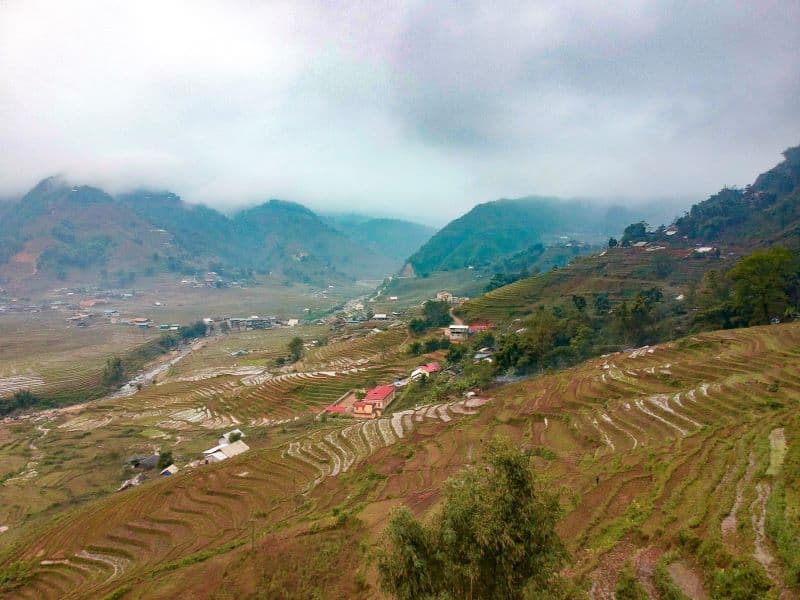
4. Trying To Pee On A Bumpy Bus Ride
If you enjoy travel love stories , this trip tale from our honeymoon has a humorous twist.
While visiting Sapa, Vietnam on our honeymoon, we had to fly into the large city of Hanoi.
From Hanoi, we could have either taken a bus, a train, or a rental car up to Sapa. Because we are cheap, we decided to take the bus. Even further, we booked an overnight bus trip, so that we could save one night of accommodation booking.
We showed up at the bus station at 11:30 pm for our midnight departure, and everything was going well. We boarded the bus and got to our beds, which was a row of five plastic cots wide with no cushions. We did get a blanket, though, and settled in for the night on our uncomfortable beds.
At about 3:00 am, I woke up and had to pee. We were on the freeway, and the driver only spoke Vietnamese, so I couldn’t communicate the fact that I needed to pee.
In the commotion, the driver also noticed there was a payment issue with our booking, which my now-awake husband was trying to figure out.
I still had to go, and it was becoming an emergency. The bus was still rocking and rolling down the Vietnamese highway. It was 3:15 am, my bladder was bursting, and my new husband was trying to have a Google Translate conversation with the driver to figure out our booking.
I tried to get my pee emergency into the Google Translate conversation, with no luck. All I got was my husband giving me a bottle.
A soda bottle?! What was I supposed to do with that?! The mouth of that thing was the size of a thumb. I am not the Jason Bourne of pee-aiming.
Realizing my choices were non-existent, I tried to use the bottle. After some awkward maneuvering, I opened the floodgates and, as you might have guessed, peed all over my bed…and my husband’s.
Thankfully, the sound of the pee spraying on the plastic beds did not come to the attention of any of our neighbors or the bus driver. Or maybe he purposely ignored it.
After figuring out the booking issue, my husband scooched back into his bed only to realize that Lake Urine had formed in the middle of it.
After some shock and stifled laughter, we cleaned it up with one of our blankets, had an extremely uncomfortable three more hours of travel, and finally pulled into Sapa. We couldn’t get off that bus fast enough.
On the bright side, it’s one of our favorite funny stories about traveling to share.
– Zach and Julie from Ruhl of the Road
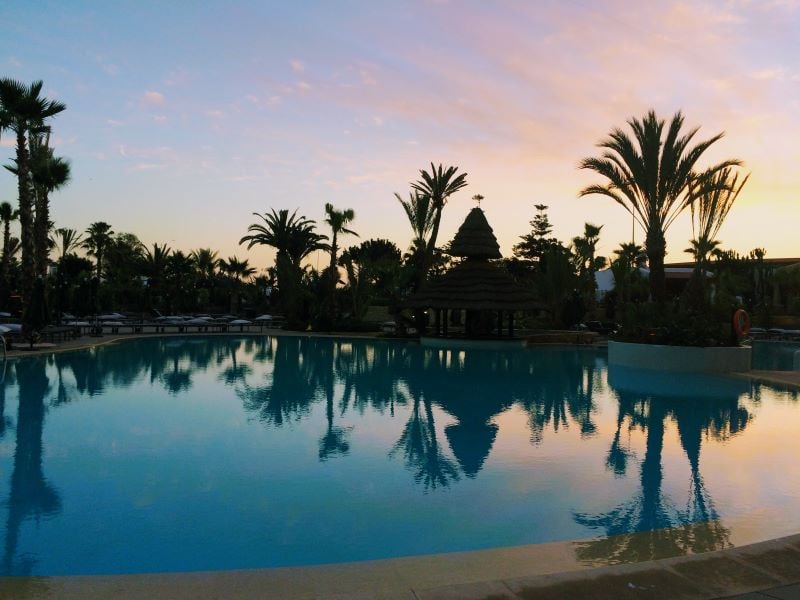
5. The Time I Had My Boobs Massaged In Morocco
Our favorite short funny story to share is all about massages and spa experiences in Morocco.
They are supposed to be tranquil, soothing, and calming. But what happens when you try to have a relaxing spa experience in another country without doing your research?
You could find yourself swimming in your underwear and having your boobs massaged, that’s what!
When my husband and I were in Morocco, we decided to go for a traditional Moroccan Hammam massage at our hotel…and all kinds of hilarity ensued!
First, we were asked to get undressed by the staff who only spoke French, so there were a lot of frantic hand gestures going on.
Then we were taken to a room where straightaway we could see a woman being rubbed down while completely naked.
No robes, no doors… just all kinds of naked. We were shocked and immediately started thinking: “Wait…is this what a hammam massage is like?”
Thankfully, not in our case, but it doesn’t get much better.
We’d worn our underwear because we actually thought we were just getting a pleasant back massage like in the UK.
We were wrong.
We were taken to a steam room where we were rubbed with mud in front of strangers and then asked to shower it off. Next, we found ourselves swimming in a saltwater pool. All of this while in our everyday underwear!
And then finally we got to the massage part where we were separated and I was asked to strip completely naked.
This was fine while lying on my front but then came the fateful word:
Yep, this was when I found myself having my boobs massaged by a total stranger!
Moral of the story:
Do your research. And don’t wear underwear to a Moroccan hammam massage. Go for swimming gear just to be on the safe side.
– Justine from Wanderers of the World

6. When Nature Calls, Literally
I have many funny short stories about travel, though one of my favorites to tell happened in the Serengeti.
Now, there are a lot of really awesome things about camping in the Serengeti:
It’s a relatively affordable way to go on safari. You meet other adventurous people. You’re camping in the freaking Serengeti! Like, hello, how cool?!
However, there may be one or two less-than-stellar things about this type of safari…like not knowing what’s outside your tent during the night.
Personally, I didn’t really want to come face-to-face with the hyenas — or anything else — that I knew could be out there. My method of avoidance came down to not drinking too much water during the day. Other than the bathroom, nothing could draw me out of my tent at night.
Well, one day I was thirsty and had more to drink than I should have.
The result?
You guessed it — I needed to pee pretty bad by about 3 am.
Let me take you back a few hours though, to the afternoon. We were making camp that night at a spot that was to be shared with some of the park rangers. Earlier in the day, the rangers had brought a goat to camp. I thought they were taking this goat further on their journey and I didn’t think about it past that.
Well, guess what the rangers had for dinner?
That night, from the safety of the tent, we could hear the hyenas munching away on the leftovers. It was gruesome.
It also meant that I absolutely knew the hyenas were in the camp, right between me and the bathroom. Well, by 3 am, I was desperate and cared less about the hyenas than about my bladder.
However, we’d been strongly warned not to go out by ourselves. So, I asked my friend if she wanted to go on an adventure. She said no and advised I go back to sleep.
I tried; I really did. An hour later, I asked her again, “Isa, want to go on an adventure?”
Her answer hadn’t changed.
Just behind our tent were the dining cabin and a small hill. I was desperate. Really, my bladder was going to explode. I went just behind the tent, right up to that hill, and did my thing.
After, I went back into the tent and didn’t stray anywhere close to where the campfire had been, and the hyenas currently were. I was safe! I didn’t get eaten or attacked by anything. Basically, I was Superwoman!
The next morning we were packing up our stuff to go on that day’s safari when our guide casually asked if we had heard the lions the night before.
Nope, we hadn’t heard them. Apparently, they’d been close.
Their lair?
Just on the other side of the small hill behind the camp.
This one definitely goes on my list of crazy yet funny adventure stories!

Lindsey in Moscow. Photo courtesy of Lindsey Puls.
7. Naked & Confused In Moscow
Naked and confused in Moscow? Yes, you read right. This is one of those funny vacation stories that you won’t forget…
I thought I knew all that there was to know about Russian banyas — until I found myself in Moscow, lying naked and sweating to death on a table in front of 12 other naked women of varying ages, who were all strangers to me, getting flogged with a couple of birch branches by a kind but very strong woman named Olga.
And I had actually paid for this beating. It’s all part of the experience!
In short, a banya is similar to a sauna. The biggest difference, though, is that a “banya” has high levels of humidity in it, while a sauna will have dry air. They’ve been a part of Russian life for over a thousand years.
Another interesting aspect of the Russian Banya is flogging using birch twigs ( venik ). This is supposed to benefit your health and improve your immune system, and honestly, if you have someone who knows what they are doing, it does feel really good.
I knew when I signed up for this that I would likely have to be naked for this flogging — I had done it before in a private bathhouse; however, this was my first time in a public banya, and I didn’t expect to be on display for the rest of the banya goers while it was happening! I was envisioning this to be a little more, ah, private?
But there I was, naked as the day I was born in front of everyone, getting smacked around by Olga as she shouted commands in Russian…which I imagine was something like, “Now, flip over! Raise your legs! Cover your boobs! Scoot your butt down further!”
Actually, though, I had no idea what she was saying. So, she gave up and just started pulling me and moving my naked body parts to where they needed to be — much to the amusement of everyone in the banya, who were not shy about their giggles!
Olga hit/massaged almost every square inch of my body with the branches. Then, once she was done, she led me by the hand to a shower area, sat me down, and threw a cold bucket of water over my head. And then a warm one, followed by another cold bucket. My body was thoroughly shocked after that!
Needless to say, this banya experience was a little less relaxing than my previous experiences with it; however, I still felt like a million bucks after it was done, and I will absolutely do it again.
– Lindsey from Have Clothes, Will Travel
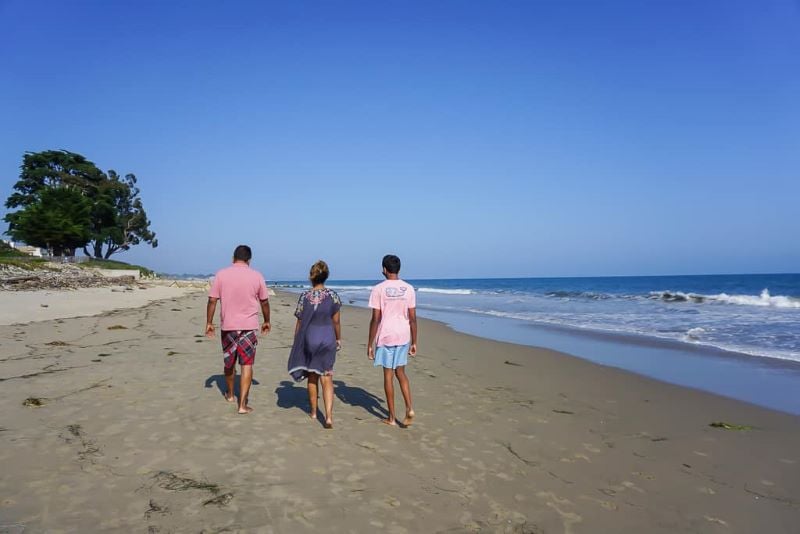
8. A Short Story About Traveling That’s Out Of This World (Literally)
When the weather starts to warm up we love heading to the beach for a few days. Any beach really, though Miami holds a special place in our family’s hearts. We even have a favorite hotel by the beach that we always stay at.
During one such trip, after a few days of being lazy on the beach and spending way too much time walking the boardwalk, we decided to go for a drive.
We rented a car for the day and drove to Key West. Our plan was to enjoy a scenic drive on Highway 1 and maybe try some key lime pie and head back, but the day turned out to be more memorable than that.
It was a breathtaking drive and we kept our eyes glued to the window. The scenery was gorgeous and felt like we were driving over water.
Driving from Miami to Key West takes about three hours on the scenic coastal Overseas Highway. When we were closer to Key West, suddenly Mr. Suburbia — aka my husband — stopped the car, grabbed his camera, and ran out looking up at the sky — leaving me looking at him bewildered.
After a few minutes of looking and pointing at a shiny object in the sky, he was pretty thrilled to announce he’d spotted a UFO. I should mention here that hubby loves his Sci-Fi movies and UFO shows — the likes of Project Blue Book — and strongly believes we are not alone.
We eventually got back in the car, stopped at a nearby store, and asked someone in the parking lot:
“Do you see that shiny thing in the sky?”
The man looked up and casually responded, “Do you mean that weather blimp?”
We came to find out later that what we saw in the sky was “Fat Albert” or a version of the radar aerostat blimp that the US Drug Enforcement Administration uses to keep an eye on shipping hereabouts.
The shiny object in the sky was not an unidentified flying object or alien craft but a weather blimp. It is one of the short funny travel stories that always come up when we talk about our trips.
It starts with one of the kids saying “Remember the time when dad thought he saw a UFO…?” and always makes us laugh.
– Priya from Outside Suburbia
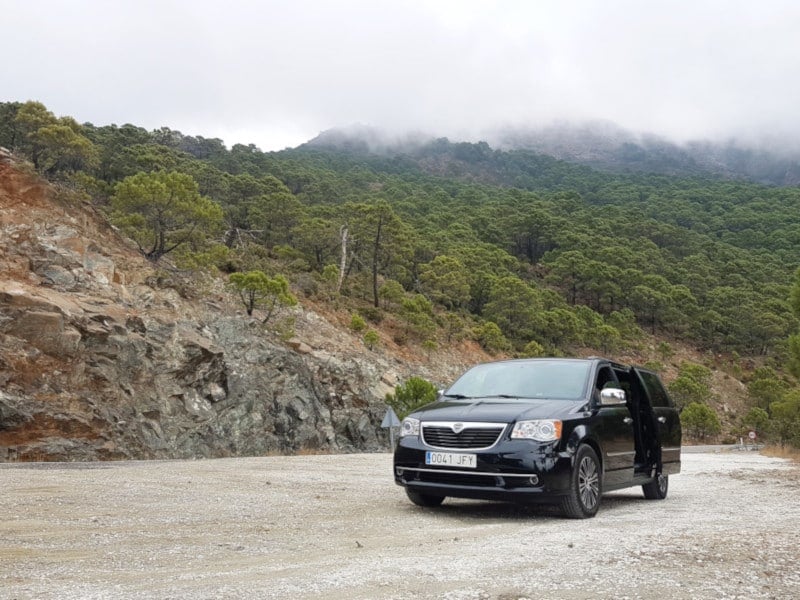
9. An Unpleasant Travel Experience With A Ghost Shrimp In Spain
When it comes to funny short travel stories, there is one I always love to tell.
A few years ago I had a wonderful trip to Andalucia, Spain, together with my family.
We spent hours road tripping to the best places in this region and enjoying Spanish culinary delights like fresh seafood and delicious produce. Grocery shopping at local markets was definitely a highlight of the trip.
To get around, we rented a car from a recommended company. We were lucky enough to receive a car of a better standard than what we ordered. It was a nicely-equipped van, with key-free unlocking, automatic doors, and a lot of space inside. Quite luxurious, I must say.
At one point during this one-week trip, we opened the door of our car and were met with a horrendous stench. We almost passed out. Our first thought was that something must have died inside.
We noticed that the stench was coming from the trunk. It turned out that a little bit of liquid had escaped from the bag with fresh shrimps the evening before.
We tried to clean the trunk with cleaning supplies found in our rented apartment. Then we found out some homemade methods to remove the smell. Desperate, we even tried out a special freshener for domestic animal scents.
But, alas, the ghost of the dead shrimp was still there. For the rest of the trip, we drove with all of the windows open.
Before the last day, we headed to the gas station. I popped into the shop to look for car fresheners. My mom was more resolute and tried to have a conversation with the staff — note here that we’re Polish, and she can genuinely only say a few words in Spanish.
She pinched her nose, made a telling gesture, and said “car fish caput.” The service guy started to laugh but he luckily understood her. And after a short while, he came to our car with a huge specialist atomizer and sprayed all the interior. We were so grateful because the problem seemed to disappear.
But the awful smell came back the next day; the day of our departure.
Early in the morning, we left the apartment and headed to the car rental agency. We were stressed about what the agency’s employee would say about the smell and we were wondering if insurance would cover such an incident.
Luckily for us, the moment we locked the car on the agency parking while waiting for the service was the last time the car key-pilot worked. At that moment, the battery died. The car agency representative wasn’t able to open the car.
And because it was so early in the morning, the main office with the spare keys was still closed, and this guy was taking care of the parking only. He noticed we had purchased full car insurance and only asked if we refilled the gas tank.
When we returned home we found an email from the car rental agency with an appreciation note for using their services. So we assumed the weird smell was covered by the insurance. While back then we were embarrassed about that incident, we now look back at it with a smile.
Always purchase full insurance. You never know when a shrimp decides to escape.
– Dominika from Sunday in Wonderland
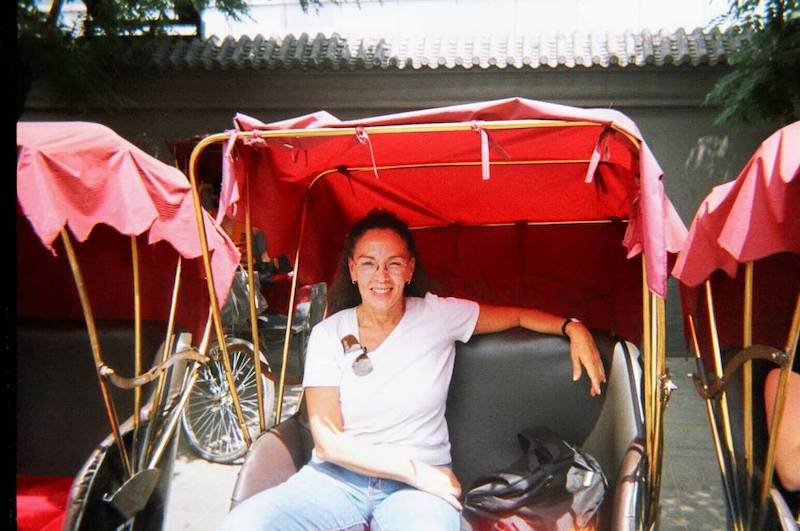
10. A Massage In An Unexpected Place
This is one of those stories that will make you laugh!
I worked in Beijing for many years. I used to go to a place called Dragonfly for massages, which I really liked. One time I was in an area of Beijing that I was not familiar with and wanted a massage.
The local Dragonfly was just too complicated and far away to get to, so I decided to go elsewhere and try something different.
I remembered I had seen what appeared to be a massage parlor a few blocks from where I was staying, and I walked over. The location didn’t look exactly like the type of spa place I was familiar with.
I guess that should have been my first warning.
It had pictures of smiling women in the window that I supposed were the various massage therapists. Flashing neon lights in blues and reds decorated the outside.
To be honest, I felt a tad apprehensive but thought that was just because I had never been there before. I know from experience that many times things might feel strange in unfamiliar cultures, but once you dive in, chances are you’ll discover a wonderful new experience or location, or a delightful food you never tasted before.
With this in mind, I went in.
Inside I tried to communicate that I wanted a massage to the woman attendant. I rubbed my shoulders with kneading fingers pantomiming a massage. She disappeared into a dark room and quickly returned with another woman who asked me something in Chinese.
I repeated my pantomime and the two women engaged in a long and animated conversation behind a beaded curtain. I couldn’t understand what the confusion was.
Finally, they led me to a small, dimly lit room with what I took to be a massage table in the middle. I disrobed and lay face down on the table as I normally would.
A woman came in and started to give me a massage. It wasn’t a great massage but certainly adequate. After an hour the woman indicated the massage was over and gave me a cup of green tea. I paid, gave the lady a tip, and went back to my hotel.
The next day was Monday. Everyone came into the office discussing their weekend. I told my colleagues about my massage.
“Oh! Don’t tell me you went all the way to Dragonfly?!” a colleague asked surprised. I explained my massage experience at the spa a couple of blocks away.
After identifying the exact location, they told me that was a high-end brothel. Everyone had a good laugh at my expense. I suppose they’re still laughing.
-Talek from Travels With Talek
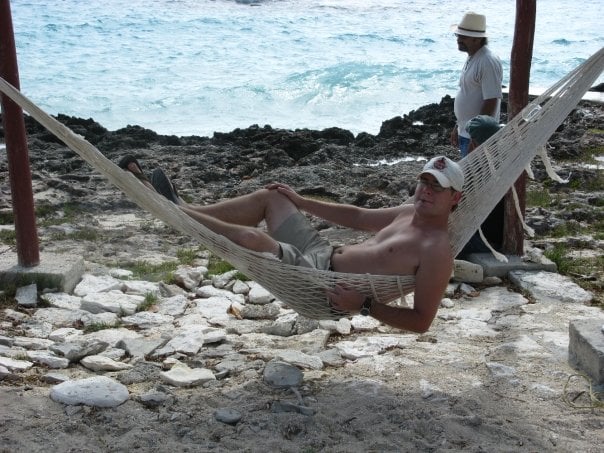
11. Hammock Hanging Newbie
One of my favorite funny short stories traveling happened when I spent a semester studying abroad in Cuba in 2009, which was actually my first international trip.
There are many beautiful things about Cuba, perhaps the best one being the peoples’ resilience and creativity in solving problems and getting by without having access to the things we take for granted.
I, in fact, had to learn some of that craftiness myself.
Not long after we arrived, I bought a hammock at an artisan market in Havana. I couldn’t wait to hang it up, and there was a perfect pair of trees on the grounds of the apartment-hotel where we were staying.
There was just one problem. I couldn’t find rope anywhere. I must have gone to five hardware stores. No rope to be found!
I ended up picking up some pieces of cloth and old electrical wires in a vacant lot. Now I thought I was good to go.
Back at the hotel, one of the security guards helped me out — thank goodness for the kindness of strangers — and I settled in with a Cuba Libre and my book to enjoy relaxing in the hammock for the first time. Until…
The cloth broke about 10 seconds later and I ended up on the ground covered in rum and Coke!
Along with my newfound security guard friend, we tried several more times to get it to stay hung, me falling on my butt several more times as well.
Two of my classmates apparently had quite the laugh watching from the window and had even taken a video of these failed attempts. Fortunately, that video got lost or erased somehow before it was shared with the whole group.
Undeterred, I ventured back out and found some thicker cables. With those, I finally succeeded in getting that hammock hung. I even carried it around much of the island and hung it on my porch back home in the US for years afterward with those same cables.
Lessons learned were that perseverance matters, always check your hammock is stable before trying to enjoy a drink in it, and if you’re unsure, make sure no one’s watching from the window!
– Adam from Cartagena Explorer
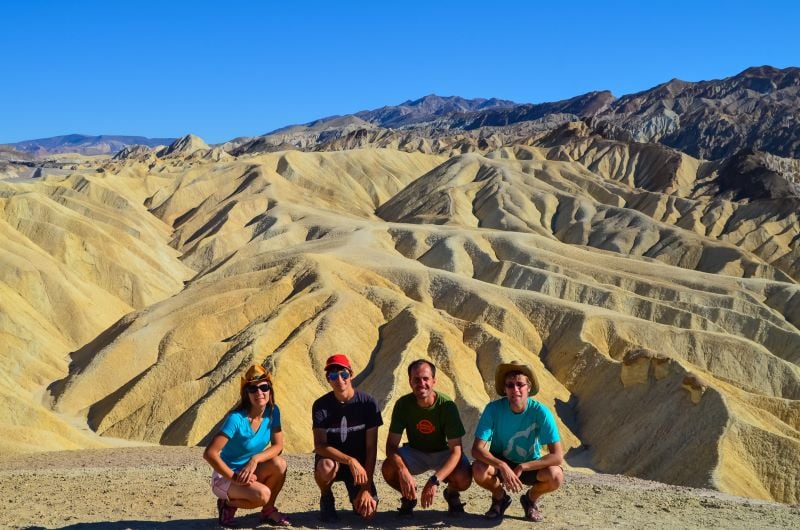
12. A Road Trip With A Resilient Mouse
Here is an adventurous trip story that takes place in Death Valley National Park, which my friends and I thought got its name because nothing lives there.
While cooking dinner in the campground, one of us had an idea to open all the car doors in the evening to release the stale air inside.
This didn’t turn out to be a very good idea.
The next morning, we packed everything up and got ready to discover other parts of Death Valley, when suddenly a mouse jumped on my legs!
“Boys, we have a mouse in the car!” I screamed.
My brother turned to me disbelievingly. “What are you talking about?!”
I got a similar gaze from Jakub, who nervously asked, “Are you sure?”
The mouse quickly disappeared, and I was left trying to get the rest of the group to believe me.
The truth came out the next morning, though. Jakub grabbed a pack of pasta and it started to spill all over the car trunk. The mouse must have bitten a hole in it.
Now they believed me, and we set off on a mission to rid the mouse from the car.
Our first plan was to download a number of mobile apps producing squeaky anti-mouse sounds. In the evening, we opened everything possible and turned on our phones to maximum volume. After a while, we were going crazy due to this terrible sound. The mouse, on the other hand, didn’t mind at all and, I can only imagine, quietly laughed at us.
In the morning, we found more mouse damage — a leaking barrel of water had soaked half of our things, and the mouse had eaten through my headphones. Plus, we were starting to worry about the car’s electricity.
We decided our next step was to go to Walmart for traps. Before heading to bed we carefully filled the traps with cheese and spread them evenly throughout the car, eager to see if we captured the mouse by morning.
Unfortunately, when we woke up they were empty — and we found more holes in our packed food. There was pasta everywhere!
It was clear that if there was enough food in the car, the traps wouldn’t be interesting for her.
On the other hand, we understood the mouse. She probably hadn’t seen that much food in her entire life in Death Valley and suddenly there was this huge banquet! What mouse wouldn’t want to explore such a rodent paradise?
She traveled with us over 600 miles before we got to Yosemite National Park. This journey brought new hope to our struggle.
Bears rob 130 cars a year in Yosemite, so there are bear boxes in every campground. Therefore, we completely unloaded our car. Every crumb was removed.
It was our last hope. If it didn’t work, nothing would.
We set up the traps and went to sleep, and in the morning there she was, one of the fattest mice we’d ever seen. We agreed that’d she’d probably just had the most amazing “all-inclusive trip” of her life.
– Matěj from Czech the World
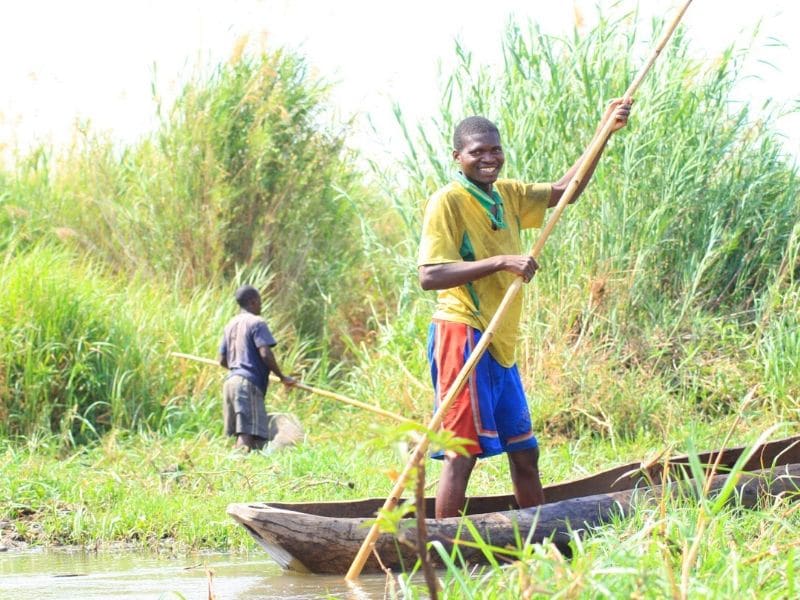
13. An Unexpected Fall Into Crocodile-Infested Waters
If you’re looking for funny adventure stories that are also a bit scary — or even travel disaster stories — this one is for you.
Safari tourism hadn’t really taken off when we visited Malawi in 2010 during an overland trip through Africa.
Health and safety weren’t major considerations, and it was certainly a far cry from the safaris we did in South Africa , Tanzania, and Botswana.
Arriving at Liwonde National Park in the south of Malawi we were excited as we knew it was a great place to spot elephants.
We relied on our campsite to book a canoe safari for us. Luckily, as soon as we set off we spotted loads of elephants — and even hippos — along the shoreline.
The trip leader in the canoe behind us suddenly shouted to our guide. Then there was an unexpected bump and we were thrown out of the canoe.
Our canoe had been flipped by a hippo!
The moments that followed were a blur. Thankfully local fishermen had seen the commotion and came over to help. We knew that there were crocodiles in the water as well as hippos and wanted to get out as soon as possible. We managed to haul ourselves into the fishermen’s canoes and were paddled back to the shore.
Amazingly nobody had been hurt and we were very thankful to the local fishermen. While we were drying out, we were pretty shocked to be asked to pay for the trip. They finally settled for a 50% reduction and we paid with the wet notes from our wallet.
We weren’t traveling with smartphones in those days so finding a reputable tour company was a bit hit and miss.
Often, there are lessons to be learned through these stories of travel. These days we would recommend Googling reputable tour operators, although as with all wildlife adventures, always expect the unexpected!”
– Jacquie from Flashpacking Family

14. Remembered By The TSA
One of my favorite short funny stories to tell is this one.
I traveled out of the Kansas City airport about every other week for the past three years.
Before I leave my house, I clean out the fridge and put any fruit that would go bad into a stasher bag.
I have TSA Precheck but have learned it’s just easier to pull it out of my purse into a bin and it won’t ever get questioned.
Last summer I was going through and the X-Ray guy says, “Hey! It’s strawberry girl!”
Then three others perked up and waved to me.
Except for that day, it was sliced peaches, and I felt like I let them down.
-Katie Boutwell, Katie B Traveling

15. Confusion In Small-Town France
I feel like this is one of those relatable funny stories because who hasn’t ended up in the wrong location?
In 2019, my husband and I took a trip to France to attend the wedding of my former exchange student, Christelle.
The day after the wedding, we set off from our hotel to the small village of Montcourt-Fromonville to attend a luncheon for close friends and family.
Shortly after arriving in the small village, we happened to pass Christelle’s family gathered in a small parking lot. We wondered if we should stop, but they didn’t look settled, and Google Maps was continuing to direct us.
We drove further, and eventually, Google Maps did the thing where it says you have arrived, but you look around and don’t know where you’ve arrived to.
My husband and I were very confused. Per the invite, the destination was called Chateau de la Mairie de Montcourt-Fromonville, but there was no address associated with it. When I typed it into Google, it came up as being a city hall.
Looking around the vicinity, we did see a castle-looking building in the distance, but it seemed way too fancy for a luncheon. Plus, would Christelle really be having her luncheon at a city hall?
We turned around and decided to go back to the parking lot where we had originally seen Christelle and her family. Of course, when we got there, no one was outside anymore. We approached a residential building nearby, thinking perhaps the luncheon was at someone’s personal residence there and snooped around a little bit.
Unfortunately, there were no signs of any gatherings in this quiet building. As we walked away, I heard a voice behind us say, “Bonjour.”
Turning around, I spotted a woman I had never seen in my life and wondered how I would explain our apparent snooping in French.
“Nous cherchons une fete.” (We are looking for a party)
The woman continued to stare at me.
“Pas ici?” (Not here?)
The woman shook her head “no” with a confused look on her face. Feeling her eyes upon us, we immediately left before further damage could be done with my limited French.
Frustrated, we followed Google Maps back to the lovely castle-looking building. Now we saw more cars there, and we thought maybe that was the location after all.
Our suspicions were confirmed upon parking outside of the chateau “city hall” where we were relieved to finally find Christelle and her family.
We were very grateful this was such a small village. Otherwise, I’m not sure how much bad French I would have had to stumble through before finding the luncheon!
– Theresa from Fueled by Wanderlust

16. An Unexpected Mountain Encounter
One of my most interesting vacation stories happened a few years ago. My younger brother and I decided to take a drive from Oklahoma City to the Wichita Mountains Wildlife Refuge to see if we could get any photos of the bison herds that live there.
We couldn’t find any, unfortunately, but we did find some very ornery longhorn cows!
We drove up to the visitor’s center to get directions to where the bison were at the moment, but we couldn’t get out of the car. There was a small group of about four longhorns gathered around watching something. When we got close enough to see what was so exciting, we realized that there were two teenage-looking steers fighting with their horns locked!
We wanted to watch the fighting because it was so entertaining — and not what we were expecting — but we learned that it was a mistake when one almost knocked the other into our car.
We absolutely did not want to be stuck getting out and having to be around them without the protection of a two-thousand-pound SUV separating us, so we drove off.
But I’ll never forget the feeling in the pit of my stomach when I realized we could have been in a car accident where the longhorn hit us and not the other way around!
It’s one of the best funny road trip stories we often share with friends!
– Stephanie from Oklahoma Wonders

Bonus Short Travel Stories
Looking for more interesting travel stories and funny travel anecdotes? Don’t miss:
25 Crazy Travel Stories You Need To Read To Believe
23 Inspiring Travel Stories Sharing The Kindness Of Strangers
38 Inspiring Travel Love Stories From The Road
Sexual Assault Stories From The Road (& What I’ve Learned)
8 Crazy NYC Subway Stories That Will Make You Hail A Cab
17 True Short Adventure Travel Stories To Inspire Your Next Trip
A Host’s Perspective: My Worst Airbnb Horror Stories
11 Epic Travel Fail Stories From The Road
18 Scary Travel Stories From Haunted Hotels To Creepy Cabins
Do you have any short funny travel stories to add to this list?
Enjoyed this list of hilarious travel stories? Pin these funny anecdotes for later!
Related posts:

Hi, I’m Jessie on a journey!
I'm a conscious solo traveler on a mission to take you beyond the guidebook to inspire you to live your best life through travel. Come join me!
Want to live your best life through travel?
Subscribe for FREE access to my library of fun blogging worksheets and learn how to get paid to travel more!

Turn Your Travel Blog Into A Profitable Business
Subscribe to my email list to snag instant access to my library of workbooks, checklists, tutorials and other resources to help you earn more money -- and have more fun -- blogging. Oh, and it's totally FREE! :) // Privacy Policy .
Check your inbox for your welcome email + resource library password!
28 Comments
Thank you so much for sharing your stories. Hope to see you in Morocco for an excellent adventure trip. Enjoy and keep doing excellent trips!
@Moha: Thank you!
OMG!!! I can only imagine what you must have gone through. Really funny stories. I would surely be careful next time before booking a massage 🙂 Thanks for the super hilarious blog.
That’s a lot of spa stories. I too had boob massage in Indonesia and Thailand. Whoops!
really very nice artical
Morocco is one of the unique countries in the world and a country of dizzying diversity. You may wander through spice markets, explore sweeping deserts and enjoy warm hospitality. Morocco is roughly the size of California, this is why day tours are so popular! Perhaps this is one of the most exciting Morocco Desert Tours.
very nice Thank you so much for sharing your stories. Hope to see you in Morocco for an excellent adventure trip.
Your Site is very nice, and it’s very helping us this post is unique and interesting, thank you for sharing this awesome information.
really very nice article. thanks for share with us.
Nice information
nice information sir
Nice blog with great post, Thanks for sharing!
Nice article
I love travelling and have craze too…….. Very interesting stories
thanks for sharing this informative piece
Good one. I liked it. Keep going. you are a best writer your site is very useful and informative thanks for sharing!
Losing and Finding My Way in Japan
by Norm Williams
For much of my career, I traveled the world as a salesman. Our company hired people in each country we sold in to help with various duties. One year I went to Japan, and the sales agent chose the Kokusai Hotel in Kyoto for my stay due to the efficiency of its proximity to his office. I left early on a calm, bright morning to find my way through a beautiful historic part of the city built in traditional Japanese style. The cute, smiley hotel receptionist had written directions on a map, circled the area of my destination, and wrote out the address in Japanese in case I needed help. Shyly, she said in broken Japanese-English and with her hand covering her mouth, “It’s in this area. If you get lost, here’s the address.” With an early start and a clear sense of direction, I felt comfortable about arriving on time – a business culture imperative in Japan. I thought I found the circled area on the map with ease. I then compared the hand-written address to the kanji characters on the buildings to discern a match. With no Japanese reading ability, I struggled as if trying to decipher Egyptian hieroglyphs without the Rosetta stone. I soon realized, “I’m lost, and not just in the usual way when I’m at home in the U.S. I’m lost without local reading or speaking ability, not knowing anyone in the city to go to for help, and a cell phone without reception in this country to call my sales agent.” Bewildered and disappointed that I could not find the way on my own, I began to wander. I looked for help among the passers-by.
I used my ignorant foreigner look, which I had patented around the world — the clueless, helpless, American businessman who is hopelessly lost, out of his element, and pleading for some host country compassion. I tentatively approached a businessman, presumably walking to work. Being deep in thought, I surprised him as a foreigner. But, kindly, he took pity on me. He looked at the address and, after a long pause, said, while shaking his head side-to-side, “Aaannnooo.” To me, this sounded like, “I don’t know.” Later I learned that “anno” is the Japanese form of “mmmm.” We parted with a mutual look of apology. I continued to beg for help as I disrupted Kyoto’s quiet, morning street routine. A coffee shop appeared to be a prospect for a captive audience of potential helpers. A lone, older man, enjoying his coffee and newspaper, sat in the corner, isolated. I cornered him. He had no choice but to help. He took a long, discerning look at the address, then the map, then the address, then the map again. He pointed to a spot on the map with an air of precision and confidence. But beneath his veneer of clarity and calm, I thought I saw a man pinning a tail on a donkey piñata while blindfolded. Time to move on, I thought. I learned later-on that addresses in Japan are codes to unravel. They indicate a ward, a district within the ward, a subsection of the district called a chome, a block number within the chome, and, finally, a building number. In Japan, they number buildings in the order of their construction. They are not in numerical order as in the U.S. The address I looked for could be located anywhere on the block, not somewhere in sequence. In place of a conventional numbered street address, an address in Japan could read like this in the U.S.: “Go down this alleyway, take
a right at the nightclub, continue past the graveyard, and it’s the red door on the right after the old oak tree.” Next, I found a lady pulling boxes on a cart. I guessed that a delivery person would know the area well. After quickly reviewing the address, she waved me hurriedly in another direction as if she knew exactly where to go. We eventually reached her old van in front of a gas station. She took out a map. As she looked at it for a long time, a deep crease began to form in her forehead. Her air of confidence became a look of “I don’t know.” Fortunately, her fellow worker, who sensed the problem, stepped in, analyzed the address and map, and then pointed with the certainty of a commanding general to an area of buildings across the street. My translation of her gesture, however, was: “It’s somewhere over there!” Another pin-the-tail moment. By now, I trusted no one walking the street. So, I waved down an expert – a taxi driver. His response to reading the address was an elongated samurai grunt and finger-pointing fit in Japanese-English, “Why are you taking a taxi? It is around here. We don’t need to drive anywhere!” But I could detect uncertainty in his expressions as he desperately tried to help me. I responded to him in my best, polite international English that I had learned works around the world – simple words pronounced slowly and loudly with a local accent as if the person cannot hear me well enough. In English with a Japanese accent, I said, “Pleeease driiiive meee tooo theee ahdresssss ah. I wiiill paaay youuuu eeeeven if it iiis aaacross the streeeeet.” Then it dawned on me that he did not understand any of my Japanese accented English. So, I resorted to the universal sign language of desperation conveyed with an American G I Joe gusto that said through body gestures, “I don’t want to walk there. I am very late! Please drive me even if it costs $50 to go 10 feet!”
He interpreted my gestures differently from what I meant because he zoomed off with me towards the center of town. He tossed me what looked like a Japanese language guide-book to the city with pictures of landmarks and pages of street maps. It was like he was giving me a tour of the town as he pointed to various places. Perceiving the misadventure ahead, I emphasized my unwavering interest in going to the phantom address by vigorously and repeatedly pointing at the address written on the paper. He responded with more grunts mixed with smiles as if saying, “You can point all you want. You are my prisoner.” After many miles, we arrived back where we began the city tour and parked outside the gas station. A determined and, apparently, a compassionate man, the driver did not want to let me down now. He went to the gas station’s workers and pulled them together for a conference. For what seemed like an eternity, they diligently researched maps, considered directories, animatedly discussed possible locations, and pointed in various directions. Then the gas station workers appeared to bow to each other in a humble celebration. Grandly, one of them stepped forward from the group and pointed to a building directly across the street. In the same direction that the cart puller’s fellow worker had gestured to, and the taxi driver told me about, I wondered, in despair, “Could it be that the building was, all this time, just over there, and I hadn’t listened to them?” The elated cab driver, who dearly wanted to finish the job, eagerly waved me into the taxi. Ecstatic, I jumped in. With a simple U-turn, he would deliver me to the door of the building across the street. But, of course, that would be too simple. We drove in Japan, and the strict traffic laws overrode any sense of simplicity. My cab driver pulled out, zoomed off, took a dozen or so turns down one-way streets, and we finally pulled up to the building that was across
the street. I could have walked back and forth between the building and gas station twenty times while in the cab. Gratefully, I paid the taxi driver a ransom for my release plus a tip for the city tour. As I walked into my sales agent’s office sixty minutes late, his lady assistant graciously approached me, saying, “He is waiting for you at the Kokusai hotel to bring you here.” “Oh My God! What message did I miss that told me to wait there?” I thought in anguish. “I spoke with a half dozen Japanese, disrupted their morning routine, struggled endlessly to understand them, walked many city blocks, traveled unnecessary miles, felt the helplessness and hopelessness of being lost, arrived an hour late, and I only had to wait for the sales agent to quickly and efficiently take me to his office! Feeling quite humble, I entered the meeting room and sat down at the conference table. My sales agent began to speak, and I listened carefully to his direction.
I like your travel stories thanks for sharing!
I really like your post I appreciate your work , I will suggest your page with my friends
thank you so much for sharing this experience
Wish to see you in Morocco for a hot air balloon ride experience
Want more such kinds of posts, keep posting!
I love travelling and have craze too…….. Very interesting stories
Awesome Read. Thanks.
Capisoft Indicator in kenya
Leave a Comment Cancel Reply

MY RIGHT SOCK
21 funny travel books with (serious) lol potential.
Funny Travel Books Everyone Should Read
Traveling is one of the best ways to get out and explore the world. It doesn’t matter if you have company or are heading out solo – travel offers a unique experience that can’t be replicated at home. But while traveling is great, it isn’t always easy. There are long flights, sleepless nights in a new bed and trying food for the first time (to name just a few).
Luckily there’s also laughter!
In this article I’ve compiled 21 outrageously funny travel books about places from around the world. Whether you’re:
- looking to gift these to someone to make them laugh their head off, or
- want some fun, light reads for yourself during your next vacation
These books will have you laughing until your stomach hurts.
BEST FUNNY TRAVEL BOOKS TO CRACK YOU UP AND INSPIRE YOU
For me, books provide a mental getaway. They give me a chance to venture out and experience stunning, new places vicariously through the stories of others.
And it’s even better when these books tie a solid dose of humor into the story.
I promise, these 21 best funny travel books will 100% crack you up!

1. Neither Here Nor There: Travels in Europe (1991) – Bill Bryson
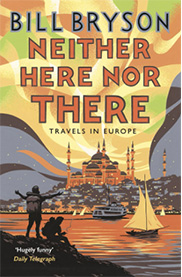
In the 1970s, as a college student, Bryson backpacked Europe with a friend. A decade later, he traveled through the continent again to revisit his experiences. Except that he was now craving the comfort of hotel beds, hearty breakfasts, and slower travel, rather than zipping through countries on the cheap.
Neither Here Nor There is one hilarious travelogue about the changes he saw, how he reflected on cultures, people, food, accents, and his personal growth through the years. And he’s remodeled all of this information into a ridiculously funny travel book.
While some of the jokes might feel a bit dated, this is such a great book to get a headstart on your Europe trip.
Get your copy here.
2. turn right at machu pichu (2011) – mark adams.
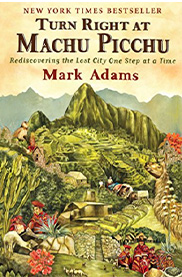
Adams built a career out of writing for travel and adventure magazines, so it was no surprise that he undertook a hike through the Andes mountains to arrive at Machu Pichu, on the 100th year anniversary of the citadel.
Except that Adams was not quite an adventure traveler himself. The book gets exceedingly funny and real as the writer navigates through the highs and lows of the journey, makes choices he’d never have made otherwise, and after a grueling excursion, he makes pretty interesting discoveries.
The icing on the cake is Adams’s cheery and funny writing style; he’ll put a smile on your face and it’ll stay till the end of the book!
3. A Supposedly Fun Thing I’ll Never Do Again (1997) – David Foster Wallace
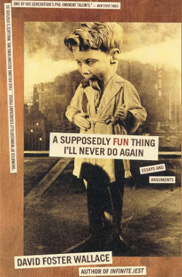
This is a collection of essays by the late American author, David Foster Wallace, recounting his seven days on a Caribbean cruise ship. The book is filled with details of the extravagant but off-putting lifestyle of the staff and passengers, as well as his own attempts at enjoying himself despite them.
In the book, Wallace writes about his time on the luxury liner, describing it as “an extended moment of expressing through clenched teeth how badly something could be managed”.
His writing is social awkwardness mixed with a sort of desperate need to be polite and patient. It’s weird, funny and at times even a little bit heartwarming.
4. The Innocents Abroad (1869) – Mark Twain
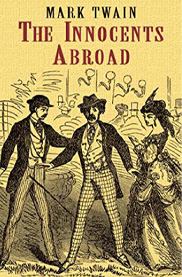
Twain’s journal of his travels through Europe and the middle-east in 1867 is a well-known classic. It’s the first book he ever wrote, and with it he demonstrated so much promise as a humorist.
This is the trip that made Twain into a world-renowned author, and for good reason. He was only in his early twenties when he wrote it, so the book has an innocence about it. But this also makes for great stories of adventures and all kinds of comical mishaps throughout his journey.
One of the interesting things about this book is its perspective; it was not written at a time when people were so mobile. This might make it a tad obsolete, but Twain’s writing captures the opinion of someone who had never before seen or experienced other cultures.
The travel book is not just funny; it’s especially worth a read for anyone who wants to know what traveling was like back in the day.
5. The Lost Continent: Travels in Small-Town America (1989) – Bill Bryson
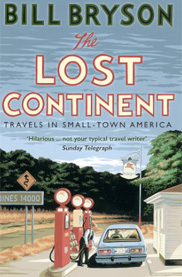
Quirky, insightful, and laugh-out-loud funny, The Lost Continent is an unconventional travelogue of small-town USA by bestselling author Bill Bryson. It’s the perfect companion for anyone planning a trip across the pond or around their own neighborhood.
In the book, Bryson talks about some places on American soil he had never visited before. He takes the reader through small American towns in the middle of nowhere, unknown places, hidden gems if you will.
Full of charming observations about American life from one of the world’s most beloved comic minds, The Lost Continent is Bill Bryson at his best.
6. The Sex Lives of Cannibals (2004) – J. Maarten Troost
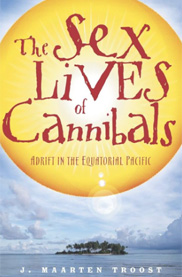
Troost, the author, more than compensates for the strange title by throwing in punchlines after punchlines in this laugh riot of a book.
Outline: Troost moved to a remote small island in the Pacific with his girlfriend, and he takes the reader through his journey, the people he meets and the way of life he gets used to.
Is the title what the book is truly about? Is there an investigation into sex lives, cannibals or not? I’ll leave that to your imagination(or as little bait to make you read this book). I’m not a fan of spoilers so I’m definitely not giving away the plot!
Of course there are some parts that are disturbing, but the world abounds with bewildering things that are done in the name of culture. The book draws an interesting contrast between our privileged Western lifestyle and the reclusive, virgin life on a far-out remote island.
What I can tell you is that, while reading this book, I laughed out loud (in public and otherwise) on many occasions and it takes a really good writer to elicit that kind of emotion, ESPECIALLY in public places – I’ve gotten quite a few stares on the bus. This one’s truly one of the funniest travel books to read!
7. Jerusalem: Chronicles from the Holy City (2011) – Guy de Lisle
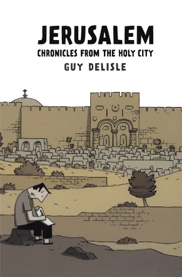
First of all, this is no ordinary travel chronicle.
It doesn’t drag on for pages upon pages of monologue, beefed up with the hardest words in a thesaurus. It’s actually a simple, breezy comic-strip illustration of life in a mysterious city.
Lisle moved to Jerusalem with his wife and kids, as an Expat spouse. As it happens, Lisle finds himself witnessing curious customs and strange dispositions in the city.
The book is written from the lens of a North American but the writer sure managed to keep the tone light and humorous. It consists of a series of essays, each piece being very different from the next, some about the history of places, others about daily life in Jerusalem. I think that works to its benefit because it allows for an unparalleled perspective on one of the most complex cities in the world.
Lisle writes about an assortment of people he meets—an Arab man selling falafel on Jaffa Street who takes his food very seriously, a controversial rabbi with antiquated views on women, a family of Armenian immigrants who run the best bakery in town.
Guy’s style of writing is insightful, wry, witty and iconic. And thanks to colorful illustrations, you’ll keep turning pages through this one, I’m telling you!
8. The Great Railway Bazaar (1975) – Paul Theroux
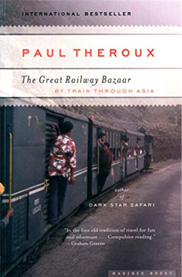
What happens when you give a famous travel writer four months, a rail pass, and the key to a small car? The result is this classic book that has made countless readers fall in love with train travel. Theroux packs his pages with colorful descriptions of the characters he meets on his journey across Asia by rail.
His writing is open and honest, and his observations can be both touching and hilarious. The book is filled with legendary train routes like the Orient Express, the Khyber Pass Local, the Delhi Mail from Jaipur, and the Trans-Siberian Express.
Along the way, Theroux describes his interactions with fellow train passengers—the woman from California who takes forever to tell him her life story, the Cambodian who tries to steal his shoes, and the old Russian peasant man he befriends after sacrificing a chicken in his honor. The Great Railway Bazaar is a classic funny travel book that will make you want to pack your bags and start planning your next train journey.
9. Into the Heart of Borneo (1984) – Redmond O’Hanlon
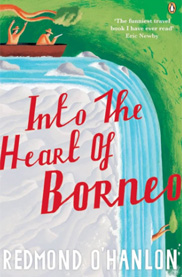
Some of the scariest, funniest and bizarre things happen on this journey into the exotic jungles of Borneo, an Asian island. Naturalist O’Hanlon, accompanied by a friend and three native guides, sets out into the wild to learn about some of the world’s most primitive tribes.
O’Hanlon’s account is filled with funny observations about cultural clashes between modernity and primal nature. It’s written in a clever, fast-paced, and witty tone. It’s also filled with some very surreal, scary, and bizarre events, making this ridiculously funny travel book a hugely rewarding read.
10. Westward Ha! (1948) – by S.J. Perelman
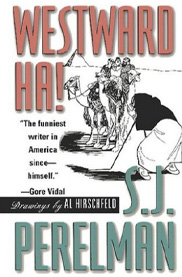
This book is a collection of S. J. Perelman’s humorous travel writing, mostly from his time as a foreign correspondent in pre-war Paris and post-war Italy for “The New Yorker.” In this work, Perelman humorously reports on the absurd nature of certain cultural customs he encounters while traveling to places such as France and Italy.
What makes this book so funny is Perelman’s witty tone of voice while telling his tales. The way he describes the people and customs he encounters often has a satirical edge to it, but there are moments when you can feel S. J.’s genuine love for these European locations. Part travelogue, part comic – and all funny – Westward Ha! is one of the top funny travel books everyone should read.
11. Vroom with a View (2003) – Peter Moore
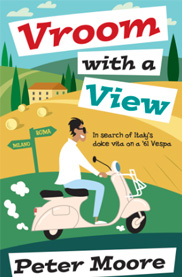
This book is about Peter Moore’s experiences on the road, riding through the streets of Italy on a classic Vespa. What’s amazing is that he sets out on this trip to mark a milestone: his 40th birthday. All of us could stand to learn a little something from him, couldn’t we?
Along the way, Moore soaks in the beauty that is Italy. From Florence to Pisa, he gains a deeper appreciation for the country’s culture and history.
The book paints quite a picture of the Italian back roads and bucolic countryside. In addition to being candid, Moore’s narrative is peppered with humorous anecdotes. This is a very funny travel book that will leave you hankering for a road trip of your own.
12. Queenan Country (2004) – Joe Queenan

Joe Queenan pulls off a Bill Bryson and takes a trip around Great Britain to get a peek into the English way of life. Some of the things he shares his views on include football, pubs, class structure, popular slang, and architecture. Married to an English woman for 26 years, Queenan is a self-proclaimed “reluctant Anglophile”, and thus, he sets out on a journey of discovery to find out what exactly makes the uniquely English idiosyncrasies and oddities so fascinating.
Filled with some very interesting and humorous descriptions, anecdotes, and comments, Queenan’s book is an excellent read for anyone who is even mildly intrigued by the UK. Especially if you’re traveling to the island soon, don’t forget to pick this one up!
13. Notes from a Small Island (1995) – Bill Bryson
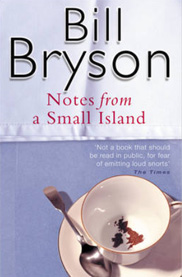
Yet another Bill Bryson book makes it to this list. Don’t tell me you’re surprised, though? He’s the undisputed king of the travel humor genre!
After living in Britain for 20 years, Bryson makes a farewell journey across the length and breadth of the country. He visits the smallest towns and the busiest cities. The entire book is packaged with umpteen jokes which are very “Bill Bryson”. He’ll make you burst into peels of laughter, sometimes snicker a tad, and he’ll often make you think really hard about how culturally diverse people can be even within the same coordinates.
Especially having spent time in London and having noticed some typical English habits that stand out, the book had tons of little nuggets that made me go, “Oh this is too accurate!”
So if you’re from Britain, or if the island holds a special place in your heart, make sure you read this awesome, side-splitting travelogue!
14. Holidays in Hell (1988) – P.J. O’Rourke
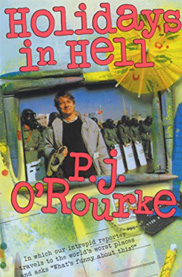
Holidays in Hell is a humorous take on the various countries that P.J. O’Rourke visited as a foreign correspondent, all of which were underdeveloped or had suffered through some sort of crisis (mainly war). The book follows his journey along with two other journalists as they explore these countries, interviewing locals and getting themselves into various sorts of fiascos.
This book is great for travel lovers and people who like both comedy and history, as it provides a lot of interesting facts about several countries that readers may not know at first glance. Holidays in Hell gives you the chance to step into someone else’s shoes (or sandals) while they explore these other cultures – and then laugh at their misfortunes.
15. Killing Yourself to Live (2005) – Chuck Klosterman
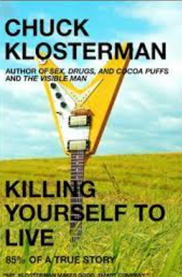
Chuck Klosterman’s book is not just about dying. It’s also about living. And sex, of course. And The Doors.
Looking to find an answer to the question, “Why are we living?”, Klosterman sets out on the road In a rented Ford Taurus, to visit the death sites of several of his musical heroes, including Jim Morrison and Kurt Cobain. Along the way, he meets various people who help shape his thoughts about death, like a mortician, a pilot who crashed his plane, and a woman who lost her husband in the September 11 attacks. Klosterman also visits Graceland and spends time with an Elvis impersonator.
The writing is straightforward, witty, and bold. While this was never marketed as a travel book, Klosterman’s travelogue offers a fresh and unexpected perspective to anyone seeking to fuel their wanderlust. Not to mention, it has funny anecdotes aplenty.
16. A Walk In The Woods: Rediscovering America on the Appalachian Trail (1998) – Bill Bryson
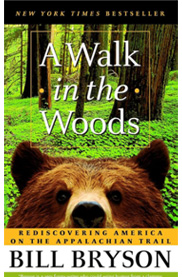
Bill Bryson’s A Walk in the Woods is an extremely funny book about his hiking trip along the Appalachian Trail. After spending 20 years abroad, he attempts to reconnect with his homeland by hiking the famous trail.
There are wild encounters with everything from bears to blisters. A Walk in the Woods is a book about staying alive, but it is also about friendship. It’s also about heroes and their follies. It’s a story of Bryson taking on a challenge most people wouldn’t dare attempt. And it ends up being more than that: it’s an epic journey into the heart of America.
The best part about the book is the way Bill Bryson tells a story. His dry humor and attention to detail make this book hard to put down.
A Walk in the Woods has been a New York Times Best Seller book and has sold millions of copies worldwide. It’s one of those travel books that deserve every accolade they get.
17. Out of Sheer Rage: Wrestling with D. H. Lawrence (1997) – Geoff Dyer
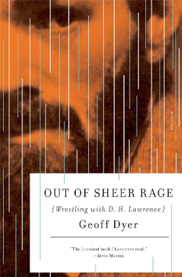
Here is a book about a writer who wants to write about another writer. Dyer is trying to write a biography on D.H. Lawrence. However, the book is really about Dyer’s struggles with writing. He is a master procrastinator, and so he embarks on (not very well planned) travels to “research” on Lawrence. But he’s really just postponing work.
The book is divided into three parts, each about one of the places Dyer visits while trying to write the Lawrence biography. Through all this dilly-dallying, Dyer ends up spending time in Cornwall, then heading off to Australia, and then ending up in Mexico – still trying to work on the D.H. Lawrence assignment but walking away from it.
Again, not marketed as a travel book but Dyer’s writing makes it one. He has an excellent way of describing landscapes and people so they come alive.
Dyer is a gifted writer and Out of Sheer Rage is one of the funniest travel books ever. A total “genre bender”, you won’t be able to cast the book into a category, but you sure as hell will be snickering the whole time you’re reading it.
18. Are You Experienced? (1997) – William Sutcliffe
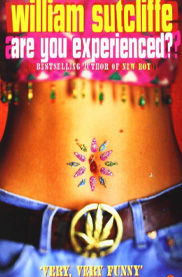
This is a novel with one of those done-to-death plots.. you know, your archetypal British private school educated prick who takes a gap year and goes on a trip to India to “find himself”. Except that this one is actually quite different.
Dave joins his friend’s girlfriend, Liz, on a visit to India, only, he is secretly in love with her. All’s well until the trip begins, and Dave ends up spending three harrowing months in the country. While Liz seeks spiritual enlightenment, Dave is more preoccupied with catching dysentery, bickering about the unfamiliarity, and breaking his scruples by cheating on his best friend.
There are times when this book is so ridiculous that you can’t stop laughing out loud. It’s also a great insight into the Indian culture – especially from a 90s lens.
Dry humor, a bit of a love story, a first-world sense of entitlement that plays out in hilarious ways, and an insider’s view on one of the most captivating countries in the world – This is a must-read for any travel lover!
19. Last Chance to See (1990) – Douglas Adams and Mark Carwardine
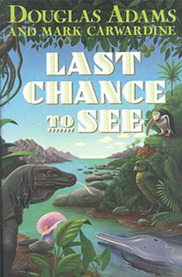
Last Chance to See is a book by Douglas Adams and Mark Carwardine about their travels through various countries to spot endangered species for the last time before they go extinct (as the title suggests).
As the author of the best-selling series “The Hitchhiker’s Guide to the Galaxy”, Douglas Adams has already established that he can write humorously about anything, and his wit is still stronger when writing about technology and science. Mark Carwardine, on the other hand, has traveled to over 100 countries for various zoological documentaries.
The two perfectly complement each other while writing this book, with Douglas Adams’ satirical narration intertwining with Carwardine’s serious personal experience.
The book reads like a memoir (and there is actually an additional chapter at the end, explaining what has happened to the animals since). It is packed with hysterical humor but also deep insight into the human influence on the planet and other life on it.
20. Round Ireland with a Fridge (1998) – Tony Hawks
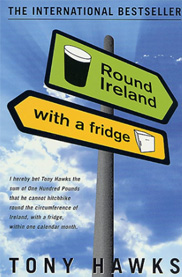
Funny travel stories are a dime a dozen. But you don’t often chance upon a travelogue where the writer is also transporting a fridge with them. This is exactly what Tony Hawks did when he set out to circumnavigate the island of Ireland. Hawks wanted to prove a point (based on a drunken bet) that you can do anything if you put your mind to it, and honestly, he does make a solid case.
The fridge seems like a character in the book, as Hawks writes about it as if it was a person. Case in point: he is often joined by his sidekick, “Fridge”, at pubs, bars, in the streets, at parties, even while hitchhiking. Wherever he goes, the fridge always seems to turn heads and spawn conversation topics.
I think the novelty (and wackadoodle-ness) of the plot redounds to the wild popularity of this book. But it’s also Hawk’s witty, frank storytelling and his self-deprecating sense of humor that makes this such a great travel read. He paints a very vivid picture of Irish life and culture, which helps the reader get a good feel of what it’s like there.
The book is a laugh riot from start to finish – a mandatory read in any funny travel books list.
21. The Wrong Way Home (1999) – Peter Moore
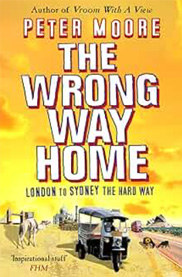
In 1994, Peter Moore decided to travel from London to his homeland, Sydney, overland. It didn’t work out like that. The route he chose was one riddled with all kinds of terrifying adventures.
Moore wanted to take the ol’ hippy trail and travel on a shoestring budget. Of course he doesn’t do enough research and so his journey takes him to such places as Albania, Iran, Afghanistan, and China, instead.
Result: An uproariously funny travel book about things going wrong (as they often do).
Along the way, Moore almost runs out of funds, gets beaten up by a gang of Chinese thugs, befriends a man in Afghanistan who claims to have shot a Russian soldier, and finds himself at the center of a hostage situation in Albania.
Moore’s misadventures and his way of describing them will have readers in stitches. The Wrong Way Home has all the right things that go into making a brilliant travel humor read.
Have you read any of the recommendations above? Which funny travel books have you read that cracked you up? Any you’d like to recommend?
************************************
This post might contain affiliate links. My full disclosure and privacy policy is really boring, but you can read it here .
10 Comments . Leave new
so much excellent info on here, : D.
I’ve seen or heard of the movies for a few of that’s and had no idea there were books too. I’m sure the books are much better though.
This seems like a great list, I need a new travel book in my life, especially right now when I can’t leave the country! I have only seen the movie “Wild”, maybe I should read the book too!
Looks like a fantastic list. I am adding the last two to my wishlist. Thanks for sharing.
I’d definitely buy those two Bill Bryson books, especially being a Dutch immigrant in the UK I’d be interested in reading his stories on Britain 🙂 But The Sex Lives of Cannibals sounds interesting too and your non-spoiler review intrigued me! Thanks for these great tips.
Such a mix of books, but your description of Wild by Cheryl Strayed really struck a chord with me… Will definitely check it out now!
Thanks so much for sharing! Some great suggestions. We get too caught up in YouTube travel vlogs and online blogs that we forget about incredible travel books.
Thanks for the list, I’ve added the first one and the one about penguin to my wishlist! I only read The Beach by Garland and didn’t like it at all, very boring and definitely not must-read. A big chunk of it is just a guy gallucinating weird things under drugs… Wouldn’t recommend it to anyone.
I’m an avid reader, or so I thought! I’ve only read one book on your list, Wild, and heard of John Steinbeck but the others are all foreign to me. It looks like I have some new books to add to my list! What is your favourite?
I usually read historical novels, but there are some books here that really caught my eye – The first from Bill Bryson, and the one about Jerusalem! Thanks for sharing this great list 🙂
Leave a Reply Cancel reply
Your email address will not be published. Required fields are marked *
Post Comment
Salzburg in One Day: Itinerary And Tips
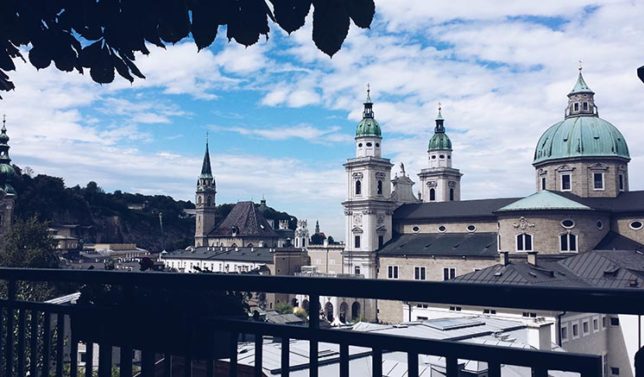
4 Days in Slovenia: Lake Bled + Ljubljana Itinerary
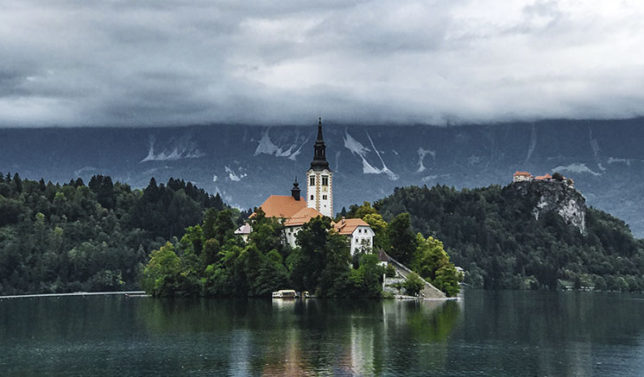
A Local’s Guide to Seeing Nuremberg in One Day

How to Spend One Day in Frankfurt

10 Ways to Indulge Your Wanderlust During the Coronavirus Outbreak


- Scriptwriting
How to Write Comedy — Tips, Techniques & Script Examples
A sk any creative writer what the hardest genre to write is and they’ll probably tell you that it’s comedy. That’s because story structure can only bring you so far in comedy writing – the fact of the matter is that if you aren’t funny, you aren’t funny. So how do you become funny? Do you read joke books? No! Like everything else, you practice until you become perfect – well, not perfect per se – most comedy writers would be happy with just okay. We’re going to show you how to write comedy, with script examples from 21 Jump Street and Curb Your Enthusiasm , but first, let’s define comedy writing.
Guide to Comedic Writing
What is comedy writing.
In simplest terms, comedy writing is a genre of writing that is intended to be funny. There’s much more to it than that, but first and foremost, the chief goal is to make the audience laugh. Let’s watch a quick video to hear one of the most successful comedy writers of all-time, Jerry Seinfeld, explain the basics of comedy writing.
Writing Comedy • Jerry Seinfeld on How to Write a Joke With The New York Times

Comedy writing is something you don’t see people doing. It’s a secretive thing.
— Jerry Seinfeld
As Seinfeld suggests, comedy writing is a very secretive thing. One reason why is because most comedy writers feel like their material has to be perfect before it’s presented.
Think about it this way: let’s say you write a dramatic stage play. There’s no way to tell if the audience hated it – except if they fell asleep, then I’d say it’s fair to say they hated it. Now let’s say you write a comedic play. If the audience doesn’t laugh at the jokes, then you know they hated it.
You know, they know, everybody knows – a joke that doesn’t land is a special type of shame . It’s for this reason that comedy writing can feel so personal. The most important thing to remember is that nobody is funny 100% of the time, but by taking inspiration from some of the best, we can improve our craft.
Comedy writing doesn’t have to be a solitary craft. Due to the advent of the internet, comedy is more collaborative now more than ever. This next video explains how the Lonely Island sketch “Dear Sister” helped to usher in a new era of comedy.
How to Write Comedy • How ‘Dear Sister’ Changed Comedy by Karsten Runquist
The difference between Seinfeld’s traditionalist advice on comedy writing and Karsten Runquist’s new-age analysis is that one says that comedy is achieved by plot ; the other says that plot is achieved by comedy. Think of memes for example: what makes a meme funny? Well, I’d say memes are funny because somebody doesn’t “get it.”
A meme is like an inside joke between millions of people – but once it breaks out of that “inside” bubble, then it ceases to be funny. This teaches us something essential about comedy writing; almost always, somebody has to be the butt of the joke. No matter how big or small, somebody has to be made fun of. It’s this very notion that makes comedy writing so difficult.
Rules of Comedy, Explained
Tips and tricks for writing comedy.
One of the most difficult aspects of comedy script writing is finding the right person to perform it. You could write something really clever, but if it’s performed in a tone that’s incongruent to what you mean, then it’s not going to sound funny.
So when writing any sort of comedy, don’t be afraid to add emphasis. That’s true in more ways than one – emphasize the punch-lines to your jokes, emphasize specificity, and emphasize contradictions.
Like any type of writing, comedy writing relies on conflict . In this scene from Meet the Parents , the family patriarch Jack interrogates his daughter’s boyfriend Greg. Pay attention to how screenwriters Jim Herzfeld and John Hamburg entice us with character conflict.
How to Write Comedy • Watch the Meet the Parents Lie Detector Test Scene
I wanted to look at this scene for a couple reasons. The first is that it’s a great structural example of how to put together a comedic scene. The mean dad, clueless boyfriend trope is just that... a trope. So how do the writers make it feel refreshing and new?
Well, it starts with emphasis and exaggeration. Jack isn’t just any dad, he’s a former CIA operative. And Greg’s not just a clueless boyfriend, he’s a walking bad-luck charm. So in a structural sense, this relationship is primed for comedic conflict.
Here are five great tips for writing a comedy scene:
- Take a typical situation and exaggerate it
- Let tension build
- Use specificity
- Embarrass someone
- Finish with a bang
Now let’s see how Meet the Parents utilizes these five strategies.
- Greg is visiting his girlfriend’s family. This is a typical situation – and at some level, it’s something we can all relate to. But it’s exaggerated by Jack’s CIA background.
- Say you’re the writer of a story like Meet the Parents and you have a great structural conflict between two characters (Jack and Greg) – how do you take that tension and build it? Well, start by putting the two characters in close proximity.
- Specificity is a double-edged sword in comedy writing. Notice how Greg is wearing Jack’s pajamas with the little JB insignia on the chest-pocket? That’s funny. Notice how there are a bunch of pictures of Jack undercover in the CIA? That’s funny. And it’s funny because it’s not forced on us.
- Jack embarrasses Greg by asking him uncomfortable questions. Situationally, this is funny, and it’s elevated by Robert De Niro’s great deadpan delivery.
- Like Jerry Seinfeld said, always save the best joke for last. It’s an expectation in comedy writing that you’re going to end with a bang. In this scene from Meet the Parents , it’s when Jack asks Greg if he watches porn.
WRITING COMEDY TIPS
How to make your script funny.
Would you believe me when I say there’s a secret technique you can use to instantly make any scene funnier? No, that sounds too good to be true! But alas, it is.
The technique known as irony – which is defined as being the opposite of what we expect – can turn any scene on its head.
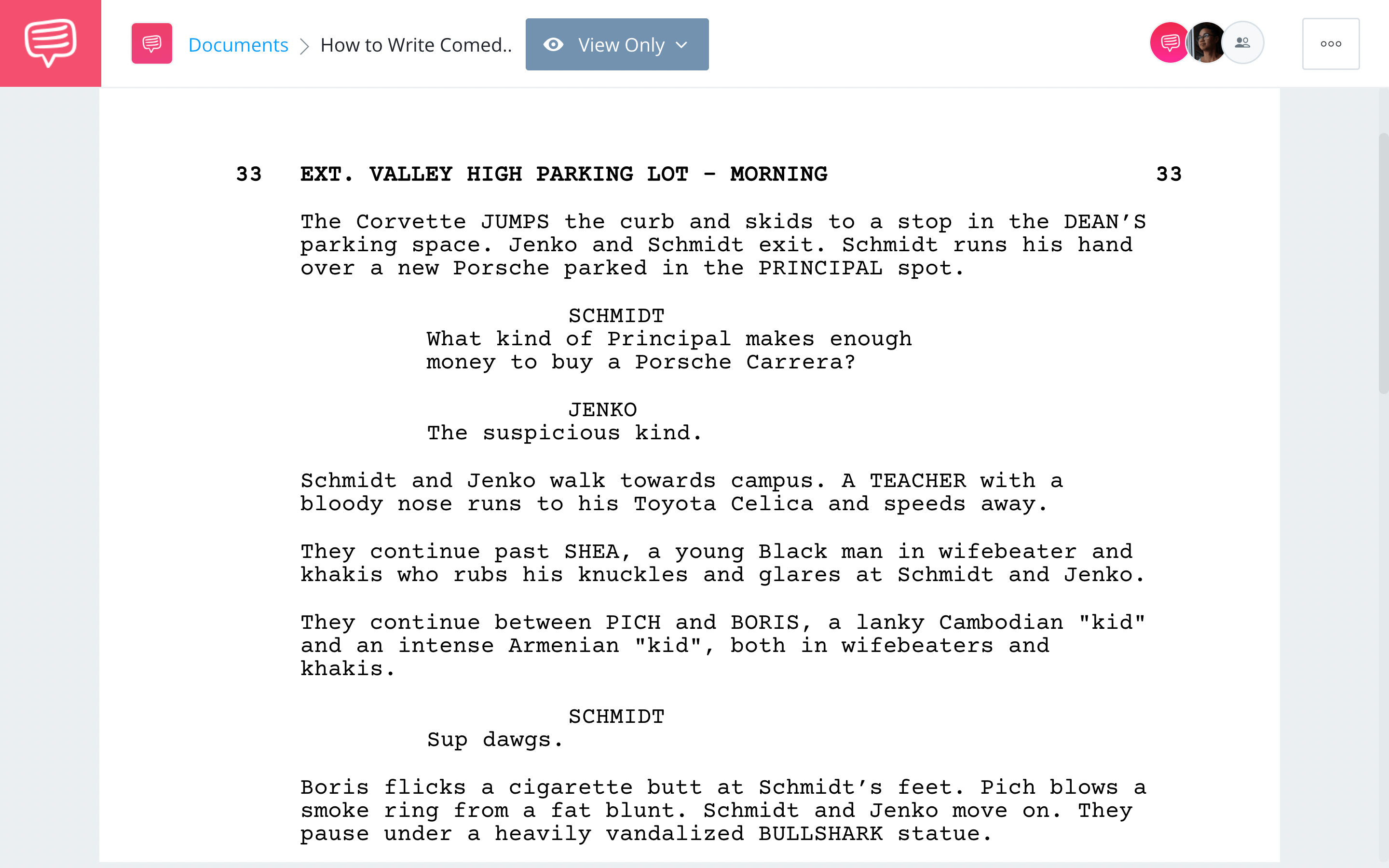
How to Write Comedy • 21 Jump Street Screenplay
21 Jump Street went through a lengthy rewrite process. In this revision of the script, undercover cops Jenko and Schmidt arrive at a scene somewhat akin to what we see in the original tv show. There’s nothing wrong with the scene as it was originally written – but the final version of the scene shows just how much a difference irony can make.
Here, Jenko takes the lead, expecting to command the crowd like he did in high school. But as Bob Dylan famously said, the times are a-changin’.
How to Write Comedy • Watch 21 Jump Street
We expect Jenko to be considered “cool.” But instead, he’s condemned. Conversely, we expect Schmidt to be considered “lame.” But instead, he’s celebrated. This is irony . This character dynamic makes 21 Jump Street feel refreshing. If you’re considering writing a comedy script, think about how contrived character stereotypes can be subverted with irony.
Writing Comedy Taboos
Things to avoid in comedy writing.
Most comedians will tell you that no topic is off-limits in comedy writing. And although that may be true, just remember that it’s really hard to make certain things funny – and you’re not going to win audiences over making jokes about taboo subject matter.
We’ve all heard the saying “read the room” before, but how do we “read the room” when we’re writing alone? Well, one way is to take notes when you’re out in public, then transcribe them into a routine, sketch, or scene later. If you know Larry David’s Curb Your Enthusiasm , then this process may sound familiar.
This next video explains Larry David’s writing process for Curb in further detail.
Comedy Writing Techniques • How to Write Comedy Like Larry David by StoryDive
The reason I bring up Curb in regards to “what to avoid in comedy writing” is because Larry David is a master of navigating that ever-so-delicate line. Take this clip from Curb Your Enthusiasm Season Nine, Ep. 8 for example.
How to Write Humor • Study Perspective in this Curb Your Enthusiasm Clip
In this montage scene, a Muslim investigator looks into Larry’s past to see if he deserves a fatwa. In each part of the montage, a delicate subject matter is addressed. Why is it funny? Well, it’s all about perspective. In Curb Your Enthusiasm , Larry is consistently made out to be the bad guy. By framing him as the good guy, we see the ludicrousy of the show’s situations in a new light.
Don’t be afraid to play with perspective. Sometimes, the comedy of a scene is found in a perspective you would’ve never guessed. Consider framing your comedic situations in different ways.
This experimentation will often help you find the best angle to present your jokes.
Comedy lessons from Gene Wilder
We touched on a lot of the foundational aspects of comedy writing, but there’s so much more to it than what we went over here. In this next article, we break down how to direct actors, with special emphasis on how Gene Wilder changed comedy. By studying Wilder’s comedic style, we can learn a lot about how to be a better comedy writer.
Up Next: Directing Comedy Actors →
Write and produce your scripts all in one place..
Write and collaborate on your scripts FREE . Create script breakdowns, sides, schedules, storyboards, call sheets and more.
How studiobinder.com dig deep in goldmine of information for storytelling and the film industry is awesome. It's not just information and education piecemeal; it's like A-list screenplay respectively, acting out as best entertainment content.
Enjoyed it – the best bit for me was the fatwa against Larry and 21 Jump Street. Thanks for the refresher.
Leave a comment
Your email address will not be published. Required fields are marked *
- Pricing & Plans
- Product Updates
- Featured On
- StudioBinder Partners
- The Ultimate Guide to Call Sheets (with FREE Call Sheet Template)
- How to Break Down a Script (with FREE Script Breakdown Sheet)
- The Only Shot List Template You Need — with Free Download
- Managing Your Film Budget Cashflow & PO Log (Free Template)
- A Better Film Crew List Template Booking Sheet
- Best Storyboard Softwares (with free Storyboard Templates)
- Movie Magic Scheduling
- Gorilla Software
- Storyboard That
A visual medium requires visual methods. Master the art of visual storytelling with our FREE video series on directing and filmmaking techniques.
We’re in a golden age of TV writing and development. More and more people are flocking to the small screen to find daily entertainment. So how can you break put from the pack and get your idea onto the small screen? We’re here to help.
- Making It: From Pre-Production to Screen
- TV Script Format 101 — Examples of How to Format a TV Script
- Best Free Musical Movie Scripts Online (with PDF Downloads)
- What is Tragedy — Definition, Examples & Types Explained
- What are the 12 Principles of Animation — Ultimate Guide
- What is Pacing in Writing — And Why It’s So Important
- 2 Pinterest

Mastering the Art of Travel Writing: Tips for Students
D o you love writing and traveling? Do you dream about seeing the world and discovering hidden gems in every country you go to? Then you might have considered becoming a travel writer. Even though this is one of the dream jobs many students have, it comes with challenges too. Mastering the art of travel writing is not hard, but you have to put in a lot of dedication, effort, and time. This is a captivating genre that allows you to share your experiences, observations, and adventures from your journey. Writing about travel is what you, as a student, might aspire to.
So, you are probably looking for some tips and tricks on how to get started. What is travel writing? Are there more types of travel writing? Learn more about some travel writing tips that can enhance your craft and help you create engaging stories. While some spots can inspire you to write fascinating posts, you can take matters into your own hands and improve your skill.
Immerse Yourself in Traveling
Well, you cannot be a travel writer if you are not traveling. This is why it is essential to travel extensively. Explore distinct places , cultures, and landscapes. Get to know the locals, talk with them and find out more about the local traditions and social norms. Every country is different from another one. And even though some beliefs or lifestyles might be similar, there are so many things that tell them apart. And you can learn more about this by traveling and talking with locals too.
However, as a student, you have academic responsibilities too. Getting an education in school is not only about attending classes or what notes you take during teaching but about writing essays and assignments too. And traveling around the world is time-consuming, which might make you fall behind your deadlines. Thankfully, there are essay writers for hire, essay writers that are skilled and professional and can help you complete your assignments. Getting some much-needed help will help you follow your passion and travel around the world. This way, you will gather experiences you can write about.
Maintain a Travel Journal
To write a travel short story or an article for your blog, you need to travel. But you also need to observe the peculiarities of every place you go to. You may not have time every day to write an article, but there is a solution. You could maintain a travel journal. Have it with you everywhere you go.
Write down your thoughts, impressions, and experiences while they are still fresh in your mind. This way, you make sure you do not forget anything worth mentioning. When you will sit down and write your articles later, this journal will be an invaluable resource.
Take Photos
If you want to become a travel writer, you have to write, of course. But photos can add more value to your travel stories or articles. So, whenever you can, aim to capture high-quality photos . Learn more about the art of photography to complement your words with images.
Read Widely
Besides practicing the art of writing more and traveling around the world, you could hone these skills by reading too. It is known that reading helps you expand your vocabulary as you learn new words that will help you convey the message effectively.
But, reading what other travel writers have published will help you learn more about writing techniques. How do they tell a story? How do they hook you and capture your attention? Reading widely does not mean that you will end up copying others. It just serves as a source of inspiration that will help you develop your unique voice.
Honesty and Authenticity
Many students who are aspiring to become travel writers think that they only have to share positive experiences from their travels. Indeed, when you discover new places and cultures, everything you see might be through some pink lens.
However, readers appreciate honesty and authenticity. So, help them see your experience through your eyes. Do not be afraid to share the parts of the trip that were not as pleasant. This will help them have a clear idea of what to expect from specific places. They are looking for genuine insights.
What to Keep in Mind?
Writing about traveling and trips around the world is an art. To excel in this craft, not only do you need to improve your writing skills, but also gain as much traveling experience as you can. For those who might not have the time or expertise, there are paper writers for hire who specialize in travel content. However, do not forget that travel writing is a journey in itself. Embrace the process, keep practicing, and let your passion for exploration and storytelling shine through your words.
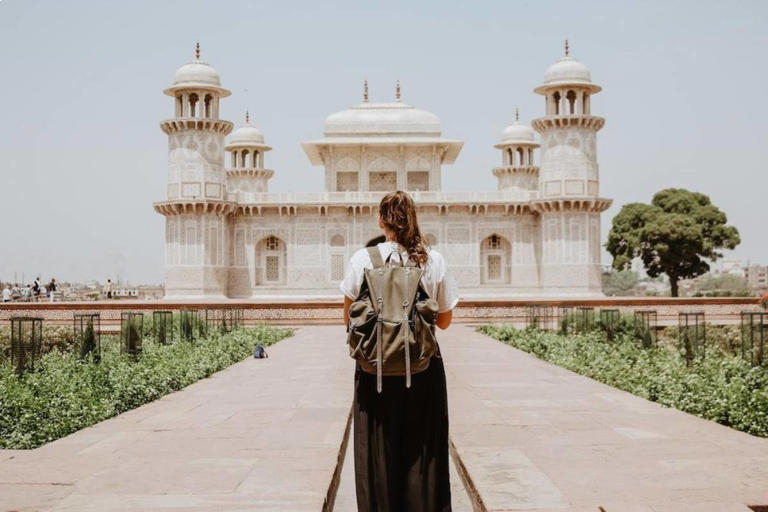
French Journal of English Studies
Home Numéros 59 1 - Tisser les liens : voyager, e... 36 Views of Moscow Mountain: Teac...
36 Views of Moscow Mountain: Teaching Travel Writing and Mindfulness in the Tradition of Hokusai and Thoreau
L'auteur américain Henry David Thoreau est un écrivain du voyage qui a rarement quitté sa ville natale de Concorde, Massachusetts, où il a vécu de 1817 à 1862. Son approche du "voyage" consiste à accorder une profonde attention à son environnement ordinaire et à voir le monde à partir de perspectives multiples, comme il l'explique avec subtilité dans Walden (1854). Inspiré par Thoreau et par la célèbre série de gravures du peintre d'estampes japonais Katsushika Hokusai, intitulée 36 vues du Mt. Fuji (1830-32), j'ai fait un cours sur "L'écriture thoreauvienne du voyage" à l'Université de l'Idaho, que j'appelle 36 vues des montagnes de Moscow: ou, Faire un grand voyage — l'esprit et le carnet ouvert — dans un petit lieu . Cet article explore la philosophie et les stratégies pédagogiques de ce cours, qui tente de partager avec les étudiants les vertus d'un regard neuf sur le monde, avec les yeux vraiment ouverts, avec le regard d'un voyageur, en "faisant un grand voyage" à Moscow, Idaho. Les étudiants affinent aussi leurs compétences d'écriture et apprennent les traditions littéraires et artistiques associées au voyage et au sens du lieu.
Index terms
Keywords: , designing a writing class to foster engagement.
1 The signs at the edge of town say, "Entering Moscow, Idaho. Population 25,060." This is a small hamlet in the midst of a sea of rolling hills, where farmers grow varieties of wheat, lentils, peas, and garbanzo beans, irrigated by natural rainfall. Although the town of Moscow has a somewhat cosmopolitan feel because of the presence of the University of Idaho (with its 13,000 students and a few thousand faculty and staff members), elegant restaurants, several bookstores and music stores, and a patchwork of artsy coffee shops on Main Street, the entire mini-metropolis has only about a dozen traffic lights and a single high school. As a professor of creative writing and the environmental humanities at the university, I have long been interested in finding ways to give special focuses to my writing and literature classes that will help my students think about the circumstances of their own lives and find not only academic meaning but personal significance in our subjects. I have recently taught graduate writing workshops on such themes as "The Body" and "Crisis," but when I was given the opportunity recently to teach an undergraduate writing class on Personal and Exploratory Writing, I decided to choose a focus that would bring me—and my students—back to one of the writers who has long been of central interest to me: Henry David Thoreau.
2 One of the courses I have routinely taught during the past six years is Environmental Writing, an undergraduate class that I offer as part of the university's Semester in the Wild Program, a unique undergraduate opportunity that sends a small group of students to study five courses (Ecology, Environmental History, Environmental Writing, Outdoor Leadership and Wilderness Survival, and Wilderness Management and Policy) at a remote research station located in the middle of the largest wilderness area (the Frank Church River of No Return Wilderness) in the United States south of Alaska. In "Teaching with Wolves," a recent article about the Semester in the Wild Program, I explained that my goal in the Environmental Writing class is to help the students "synthesize their experience in the wilderness with the content of the various classes" and "to think ahead to their professional lives and their lives as engaged citizens, for which critical thinking and communication skills are so important" (325). A foundational text for the Environmental Writing class is a selection from Thoreau's personal journal, specifically the entries he made October 1-20, 1853, which I collected in the 1993 writing textbook Being in the World: An Environmental Reader for Writers . I ask the students in the Semester in the Wild Program to deeply immerse themselves in Thoreau's precise and colorful descriptions of the physical world that is immediately present to him and, in turn, to engage with their immediate encounters with the world in their wilderness location. Thoreau's entries read like this:
Oct. 4. The maples are reddening, and birches yellowing. The mouse-ear in the shade in the middle of the day, so hoary, looks as if the frost still lay on it. Well it wears the frost. Bumblebees are on the Aster undulates , and gnats are dancing in the air. Oct. 5. The howling of the wind about the house just before a storm to-night sounds extremely like a loon on the pond. How fit! Oct. 6 and 7. Windy. Elms bare. (372)
3 In thinking ahead to my class on Personal and Exploratory Writing, which would be offered on the main campus of the University of Idaho in the fall semester of 2018, I wanted to find a topic that would instill in my students the Thoreauvian spirit of visceral engagement with the world, engagement on the physical, emotional, and philosophical levels, while still allowing my students to remain in the city and live their regular lives as students. It occurred to me that part of what makes Thoreau's journal, which he maintained almost daily from 1837 (when he was twenty years old) to 1861 (just a year before his death), such a rich and elegant work is his sense of being a traveler, even when not traveling geographically.
Traveling a Good Deal in Moscow
I have traveled a good deal in Concord…. --Henry David Thoreau, Walden (1854; 4)
4 For Thoreau, one did not need to travel a substantial physical distance in order to be a traveler, in order to bring a traveler's frame of mind to daily experience. His most famous book, Walden , is well known as an account of the author's ideas and daily experiments in simple living during the two years, two months, and two days (July 4, 1845, to September 6, 1847) he spent inhabiting a simple wooden house that he built on the shore of Walden Pond, a small lake to the west of Boston, Massachusetts. Walden Pond is not a remote location—it is not out in the wilderness. It is on the edge of a small village, much like Moscow, Idaho. The concept of "traveling a good deal in Concord" is a kind of philosophical and psychological riddle. What does it mean to travel extensively in such a small place? The answer to this question is meaningful not only to teachers hoping to design writing classes in the spirit of Thoreau but to all who are interested in travel as an experience and in the literary genre of travel writing.
5 Much of Walden is an exercise in deftly establishing a playful and intellectually challenging system of synonyms, an array of words—"economy," "deliberateness," "simplicity," "dawn," "awakening," "higher laws," etc.—that all add up to powerful probing of what it means to live a mindful and attentive life in the world. "Travel" serves as a key, if subtle, metaphor for the mindful life—it is a metaphor and also, in a sense, a clue: if we can achieve the traveler's perspective without going far afield, then we might accomplish a kind of enlightenment. Thoreau's interest in mindfulness becomes clear in chapter two of Walden , "Where I Lived, and What I Lived For," in which he writes, "Morning is when I am awake and there is a dawn in me. To be awake is to be alive. I have never yet met a man who was quite awake. How could I have looked him in the face?" The latter question implies the author's feeling that he is himself merely evolving as an awakened individual, not yet fully awake, or mindful, in his efforts to live "a poetic or divine life" (90). Thoreau proceeds to assert that "We must learn to reawaken and keep ourselves awake, not by mechanical aids, but by an infinite expectation of the dawn…. I know of no more encouraging fact than the unquestionable ability of man to elevate his life by a conscious endeavor" (90). Just what this endeavor might be is not immediately spelled out in the text, but the author does quickly point out the value of focusing on only a few activities or ideas at a time, so as not to let our lives be "frittered away by detail." He writes: "Simplicity, simplicity, simplicity! I say, let your affairs be as two or three, and not a hundred or a thousand; … and keep your accounts on your thumb nail" (91). The strong emphasis in the crucial second chapter of Walden is on the importance of waking up and living deliberately through a conscious effort to engage in particular activities that support such awakening. It occurs to me that "travel," or simply making one's way through town with the mindset of a traveler, could be one of these activities.
6 It is in the final chapter of the book, titled "Conclusion," that Thoreau makes clear the relationship between travel and living an attentive life. He begins the chapter by cataloguing the various physical locales throughout North America or around the world to which one might travel—Canada, Ohio, Colorado, and even Tierra del Fuego. But Thoreau states: "Our voyaging is only great-circle sailing, and the doctors prescribe for diseases of the skin merely. One hastens to Southern Africa to chase the giraffe; but surely that is not the game he would be after." What comes next is brief quotation from the seventeenth-century English poet William Habbington (but presented anonymously in Thoreau's text), which might be one of the most significant passages in the entire book:
Direct your eye sight inward, and you'll find A thousand regions in your mind Yet undiscovered. Travel them, and be Expert in home-cosmography. (320)
7 This admonition to travel the mysterious territory of one's own mind and master the strange cosmos of the self is actually a challenge to the reader—and probably to the author himself—to focus on self-reflection and small-scale, local movement as if such activities were akin to exploration on a grand, planetary scale. What is really at issue here is not the physical distance of one's journey, but the mental flexibility of one's approach to the world, one's ability to look at the world with a fresh, estranged point of view. Soon after his discussion of the virtues of interior travel, Thoreau explains why he left his simple home at Walden Pond after a few years of experimental living there, writing, "It is remarkable how easily and insensibly we fall into a particular route, and make a beaten track for ourselves" (323). In other words, no matter what we're doing in life, we can fall into a "beaten track" if we're not careful, thus failing to stay "awake."
8 As I thought about my writing class at the University of Idaho, I wondered how I might design a series of readings and writing exercises for university students that would somehow emulate the Thoreauvian objective of achieving ultra-mindfulness in a local environment. One of the greatest challenges in designing such a class is the fact that it took Thoreau himself many years to develop an attentiveness to his environment and his own emotional rhythms and an efficiency of expression that would enable him to describe such travel-without-travel, and I would have only sixteen weeks to achieve this with my own students. The first task, I decided, was to invite my students into the essential philosophical stance of the class, and I did this by asking my students to read the opening chapter of Walden ("Economy") in which he talks about traveling "a good deal" in his small New England village as well as the second chapter and the conclusion, which reveal the author's enthusiasm (some might even say obsession ) for trying to achieve an awakened condition and which, in the end, suggest that waking up to the meaning of one's life in the world might be best accomplished by attempting the paradoxical feat of becoming "expert in home-cosmography." As I stated it among the objectives for my course titled 36 Views of Moscow Mountain: Or, Traveling a Good Deal—with Open Minds and Notebooks—in a Small Place , one of our goals together (along with practicing nonfiction writing skills and learning about the genre of travel writing) would be to "Cultivate a ‘Thoreauvian' way of appreciating the subtleties of the ordinary world."
Windy. Elms Bare.
9 For me, the elegance and heightened sensitivity of Thoreau's engagement with place is most movingly exemplified in his journal, especially in the 1850s after he's mastered the art of observation and nuanced, efficient description of specific natural phenomena and environmental conditions. His early entries in the journal are abstract mini-essays on such topics as truth, beauty, and "The Poet," but over time the journal notations become so immersed in the direct experience of the more-than-human world, in daily sensory experiences, that the pronoun "I" even drops out of many of these records. Lawrence Buell aptly describes this Thoreauvian mode of expression as "self-relinquishment" (156) in his 1995 book The Environmental Imagination , suggesting such writing "question[s] the authority of the superintending consciousness. As such, it opens up the prospect of a thoroughgoing perceptual breakthrough, suggesting the possibility of a more ecocentric state of being than most of us have dreamed of" (144-45). By the time Thoreau wrote "Windy. Elms bare" (372) as his single entry for October 6 and 7, 1853, he had entered what we might call an "ecocentric zone of consciousness" in his work, attaining the ability to channel his complex perceptions of season change (including meteorology and botany and even his own emotional state) into brief, evocative prose.
10 I certainly do not expect my students to be able to do such writing after only a brief introduction to the course and to Thoreau's own methods of journal writing, but after laying the foundation of the Thoreauvian philosophy of nearby travel and explaining to my students what I call the "building blocks of the personal essay" (description, narration, and exposition), I ask them to engage in a preliminary journal-writing exercise that involves preparing five journal entries, each "a paragraph or two in length," that offer detailed physical descriptions of ordinary phenomena from their lives (plants, birds, buildings, street signs, people, food, etc.), emphasizing shape, color, movement or change, shadow, and sometimes sound, smell, taste, and/or touch. The goal of the journal entries, I tell the students, is to begin to get them thinking about close observation, vivid descriptive language, and the potential to give their later essays in the class an effective texture by balancing more abstract information and ideas with evocative descriptive passages and storytelling.
11 I am currently teaching this class, and I am writing this article in early September, as we are entering the fourth week of the semester. The students have just completed the journal-writing exercise and are now preparing to write the first of five brief essays on different aspects of Moscow that will eventually be braided together, as discrete sections of the longer piece, into a full-scale literary essay about Moscow, Idaho, from the perspective of a traveler. For the journal exercise, my students wrote some rather remarkable descriptive statements, which I think bodes well for their upcoming work. One student, Elizabeth Isakson, wrote stunning journal descriptions of a cup of coffee, her own feet, a lemon, a basil leaf, and a patch of grass. For instance, she wrote:
Steaming hot liquid poured into a mug. No cream, just black. Yet it appears the same brown as excretion. The texture tells another story with meniscus that fades from clear to gold and again brown. The smell is intoxicating for those who are addicted. Sweetness fills the nostrils; bitterness rushes over the tongue. The contrast somehow complements itself. Earthy undertones flower up, yet this beverage is much more satisfying than dirt. When the mug runs dry, specks of dark grounds remain swimming in the sunken meniscus. Steam no longer rises because energy has found a new home.
12 For the grassy lawn, she wrote:
Calico with shades of green, the grass is yellowing. Once vibrant, it's now speckled with straw. Sticking out are tall, seeding dandelions. Still some dips in the ground have maintained thick, soft patches of green. The light dances along falling down from the trees above, creating a stained-glass appearance made from various green shades. The individual blades are stiff enough to stand erect, but they will yield to even slight forces of wind or pressure. Made from several long strands seemingly fused together, some blades fray at the end, appearing brittle. But they do not simply break off; they hold fast to the blade to which they belong.
13 The point of this journal writing is for the students to look closely enough at ordinary reality to feel estranged from it, as if they have never before encountered (or attempted to describe) a cup of coffee or a field of grass—or a lemon or a basil leaf or their own body. Thus, the Thoreauvian objective of practicing home-cosmography begins to take shape. The familiar becomes exotic, note-worthy, and strangely beautiful, just as it often does for the geographical travel writer, whose adventures occur far away from where she or he normally lives. Travel, in a sense, is an antidote to complacency, to over-familiarity. But the premise of my class in Thoreauvian travel writing is that a slight shift of perspective can overcome the complacency we might naturally feel in our home surroundings. To accomplish this we need a certain degree of disorientation. This is the next challenge for our class.
The Blessing of Being Lost
14 Most of us take great pains to "get oriented" and "know where we're going," whether this is while running our daily errands or when thinking about the essential trajectories of our lives. We're often instructed by anxious parents to develop a sense of purpose and a sense of direction, if only for the sake of basic safety. But the traveler operates according to a somewhat different set of priorities, perhaps, elevating adventure and insight above basic comfort and security, at least to some degree. This certainly seems to be the case for the Thoreauvian traveler, or for Thoreau himself. In Walden , he writes:
…not until we are completely lost, or turned round,--for a man needs only be turned round once with his eyes shut in this world to be lost,--do we appreciate the vastness and strangeness of Nature. Every man has to learn the points of compass again as often as he awakes, whether from sleep or any abstraction. Not till we are lost, in other words, not till we have lost the world, do we begin to find ourselves, and realize where we are and the infinite extent of our relations. (171)
15 I could explicate this passage at length, but that's not really my purpose here. I read this as a celebration of salutary disorientation, of the potential to be lost in such a way as to deepen one's ability to pay attention to oneself and one's surroundings, natural and otherwise. If travel is to a great degree an experience uniquely capable of triggering attentiveness to our own physical and psychological condition, to other cultures and the minds and needs of other people, and to a million small details of our environment that we might take for granted at home but that accrue special significance when we're away, I would argue that much of this attentiveness is owed to the sense of being lost, even the fear of being lost, that often happens when we leave our normal habitat.
16 So in my class I try to help my students "get lost" in a positive way. Here in Moscow, the major local landmark is a place called Moscow Mountain, a forested ridge of land just north of town, running approximately twenty kilometers to the east of the city. Moscow "Mountain" does not really have a single, distinctive peak like a typical mountain—it is, as I say, more of a ridge than a pinnacle. When I began contemplating this class on Thoreauvian travel writing, the central concepts I had in mind were Thoreau's notion of traveling a good deal in Concord and also the idea of looking at a specific place from many different angles. The latter idea is not only Thoreauvian, but perhaps well captured in the eighteen-century Japanese artist Katsushika Hokusai's series of woodblock prints known as 36 Views of Mt. Fuji , which offers an array of different angles on the mountain itself and on other landscape features (lakes, the sea, forests, clouds, trees, wind) and human behavior which is represented in many of the prints, often with Mt. Fuji in the distant background or off to the side. In fact, I imagine Hokusai's approach to representing Mt. Fuji as so important to the concept of this travel writing class that I call the class "36 Views of Moscow Mountain," symbolizing the multiple approaches I'll be asking my students to take in contemplating and describing not only Moscow Mountain itself, but the culture and landscape and the essential experience of Moscow the town. The idea of using Hokusai's series of prints as a focal point of this class came to me, in part, from reading American studies scholar Cathy Davidson's 36 Views of Mount Fuji: On Finding Myself in Japan , a memoir that offers sixteen short essays about different facets of her life as a visiting professor in that island nation.
17 The first of five brief essays my students will prepare for the class is what I'm calling a "Moscow Mountain descriptive essay," building upon the small descriptive journal entries they've written recently. In this case, though, I am asking the students to describe the shapes and colors of the Moscow Mountain ridge, while also telling a brief story or two about their observations of the mountain, either by visiting the mountain itself to take a walk or a bike ride or by explaining how they glimpse portions of the darkly forested ridge in the distance while walking around the University of Idaho campus or doing things in town. In preparation for the Moscow Mountain essays, we read several essays or book chapters that emphasize "organizing principles" in writing, often the use of particular landscape features, such as trees or mountains, as a literary focal point. For instance, in David Gessner's "Soaring with Castro," from his 2007 book Soaring with Fidel: An Osprey Odyssey from Cape Cod to Cuba and Beyond , he not only refers to La Gran Piedra (a small mountain in southeastern Cuba) as a narrative focal point, but to the osprey, or fish eagle, itself and its migratory journey as an organizing principle for his literary project (203). Likewise, in his essay "I Climb a Tree and Become Dissatisfied with My Lot," Chicago author Leonard Dubkin writes about his decision, as a newly fired journalist, to climb up a tree in Chicago's Lincoln Park to observe and listen to the birds that gather in the green branches in the evening, despite the fact that most adults would consider this a strange and inappropriate activity. We also looked at several of Hokusai's woodblock prints and analyzed these together in class, trying to determine how the mountain served as an organizing principle for each print or whether there were other key features of the prints—clouds, ocean waves, hats and pieces of paper floating in the wind, humans bent over in labor—that dominate the images, with Fuji looking on in the distance.
18 I asked my students to think of Hokusai's representations of Mt. Fuji as aesthetic models, or metaphors, for what they might try to do in their brief (2-3 pages) literary essays about Moscow Mountain. What I soon discovered was that many of my students, even students who have spent their entire lives in Moscow, either were not aware of Moscow Mountain at all or had never actually set foot on the mountain. So we spent half an hour during one class session, walking to a vantage point on the university campus, where I could point out where the mountain is and we could discuss how one might begin to write about such a landscape feature in a literary essay. Although I had thought of the essay describing the mountain as a way of encouraging the students to think about a familiar landscape as an orienting device, I quickly learned that this will be a rather challenging exercise for many of the students, as it will force them to think about an object or a place that is easily visible during their ordinary lives, but that they typically ignore. Paying attention to the mountain, the ridge, will compel them to reorient themselves in this city and think about a background landscape feature that they've been taking for granted until now. I think of this as an act of disorientation or being lost—a process of rethinking their own presence in this town that has a nearby mountain that most of them seldom think about. I believe Thoreau would consider this a good, healthy experience, a way of being present anew in a familiar place.
36 Views—Or, When You Invert Your Head
19 Another key aspect of Hokusai's visual project and Thoreau's literary project is the idea of changing perspective. One can view Mt. Fuji from 36 different points of views, or from thousands of different perspectives, and it is never quite the same place—every perspective is original, fresh, mind-expanding. The impulse to shift perspective in pursuit of mindfulness is also ever-present in Thoreau's work, particularly in his personal journal and in Walden . This idea is particularly evident, to me, in the chapter of Walden titled "The Ponds," where he writes:
Standing on the smooth sandy beach at the east end of the pond, in a calm September afternoon, when a slight haze makes the opposite shore line indistinct, I have seen whence came the expression, "the glassy surface of a lake." When you invert your head, it looks like a thread of finest gossamer stretched across the valley, and gleaming against the distinct pine woods, separating one stratum of the atmosphere from another. (186)
20 Elsewhere in the chapter, Thoreau describes the view of the pond from the top of nearby hills and the shapes and colors of pebbles in the water when viewed from close up. He chances physical perspective again and again throughout the chapter, but it is in the act of looking upside down, actually suggesting that one might invert one's head, that he most vividly conveys the idea of looking at the world in different ways in order to be lost and awakened, just as the traveler to a distant land might feel lost and invigorated by such exposure to an unknown place.
21 After asking students to write their first essay about Moscow Mountain, I give them four additional short essays to write, each two to four pages long. We read short examples of place-based essays, some of them explicitly related to travel, and then the students work on their own essays on similar topics. The second short essay is about food—I call this the "Moscow Meal" essay. We read the final chapter of Michael Pollan's The Omnivore's Dilemma (2006), "The Perfect Meal," and Anthony Bourdain's chapter "Where Cooks Come From" in the book A Cook's Tour (2001) are two of the works we study in preparation for the food essay. The three remaining short essays including a "Moscow People" essay (exploring local characters are important facets of the place), a more philosophical essay about "the concept of Moscow," and a final "Moscow Encounter" essay that tells the story of a dramatic moment of interaction with a person, an animal, a memorable thing to eat or drink, a sunset, or something else. Along the way, we read the work of Wendell Berry, Joan Didion, Barbara Kingsolver, Kim Stafford, Paul Theroux, and other authors. Before each small essay is due, we spend a class session holding small-group workshops, allowing the students to discuss their essays-in-progress with each other and share portions of their manuscripts. The idea is that they will learn about writing even by talking with each other about their essays. In addition to writing about Moscow from various angles, they will learn about additional points of view by considering the angles of insight developed by their fellow students. All of this is the writerly equivalent of "inverting [their] heads."
Beneath the Smooth Skin of Place
22 Aside from Thoreau's writing and Hokusai's images, perhaps the most important writer to provide inspiration for this class is Indiana-based essayist Scott Russell Sanders. Shortly after introducing the students to Thoreau's key ideas in Walden and to the richness of his descriptive writing in the journal, I ask them to read his essay "Buckeye," which first appeared in Sanders's Writing from the Center (1995). "Buckeye" demonstrates the elegant braiding together of descriptive, narrative, and expository/reflective prose, and it also offers a strong argument about the importance of creating literature and art about place—what he refers to as "shared lore" (5)—as a way of articulating the meaning of a place and potentially saving places that would otherwise be exploited for resources, flooded behind dams, or otherwise neglected or damaged. The essay uses many of the essential literary devices, ranging from dialogue to narrative scenes, that I hope my students will practice in their own essays, while also offering a vivid argument in support of the kind of place-based writing the students are working on.
23 Another vital aspect of our work together in this class is the effort to capture the wonderful idiosyncrasies of this place, akin to the idiosyncrasies of any place that we examine closely enough to reveal its unique personality. Sanders's essay "Beneath the Smooth Skin of America," which we study together in Week 9 of the course, addresses this topic poignantly. The author challenges readers to learn the "durable realities" of the places where they live, the details of "watershed, biome, habitat, food-chain, climate, topography, ecosystem and the areas defined by these natural features they call bioregions" (17). "The earth," he writes, "needs fewer tourists and more inhabitants" (16). By Week 9 of the semester, the students have written about Moscow Mountain, about local food, and about local characters, and they are ready at this point to reflect on some of the more philosophical dimensions of living in a small academic village surrounded by farmland and beyond that surrounded by the Cascade mountain range to the West and the Rockies to the East. "We need a richer vocabulary of place" (18), urges Sanders. By this point in the semester, by reading various examples of place-based writing and by practicing their own powers of observation and expression, my students will, I hope, have developed a somewhat richer vocabulary to describe their own experiences in this specific place, a place they've been trying to explore with "open minds and notebooks." Sanders argues that
if we pay attention, we begin to notice patterns in the local landscape. Perceiving those patterns, acquiring names and theories and stories for them, we cease to be tourists and become inhabitants. The bioregional consciousness I am talking about means bearing your place in mind, keeping track of its condition and needs, committing yourself to its care. (18)
24 Many of my students will spend only four or five years in Moscow, long enough to earn a degree before moving back to their hometowns or journeying out into the world in pursuit of jobs or further education. Moscow will be a waystation for some of these student writers, not a permanent home. Yet I am hoping that this semester-long experiment in Thoreauvian attentiveness and place-based writing will infect these young people with both the bioregional consciousness Sanders describes and a broader fascination with place, including the cultural (yes, the human ) dimensions of this and any other place. I feel such a mindfulness will enrich the lives of my students, whether they remain here or move to any other location on the planet or many such locations in succession.
25 Toward the end of "Beneath the Smooth Skin of America," Sanders tells the story of encountering a father with two young daughters near a city park in Bloomington, Indiana, where he lives. Sanders is "grazing" on wild mulberries from a neighborhood tree, and the girls are keen to join him in savoring the local fruit. But their father pulls them away, stating, "Thank you very much, but we never eat anything that grows wild. Never ever." To this Sanders responds: "If you hold by that rule, you will not get sick from eating poison berries, but neither will you be nourished from eating sweet ones. Why not learn to distinguish one from the other? Why feed belly and mind only from packages?" (19-20). By looking at Moscow Mountain—and at Moscow, Idaho, more broadly—from numerous points of view, my students, I hope, will nourish their own bellies and minds with the wild fruit and ideas of this place. I say this while chewing a tart, juicy, and, yes, slightly sweet plum that I pulled from a feral tree in my own Moscow neighborhood yesterday, an emblem of engagement, of being here.
Bibliography
BUELL, Lawrence, The Environmental Imagination: Thoreau, Nature Writing, and the Formation of American Culture , Harvard University Press, 1995.
DAVIDSON, Cathy, 36 Views of Mount Fuji: On Finding Myself in Japan , Duke University Press, 2006.
DUBKIN, Leonard, "I Climb a Tree and Become Dissatisfied with My Lot." Enchanted Streets: The Unlikely Adventures of an Urban Nature Lover , Little, Brown and Company, 1947, 34-42.
GESSNER, David, Soaring with Fidel: An Osprey Odyssey from Cape Cod to Cuba and Beyond , Beacon, 2007.
ISAKSON, Elizabeth, "Journals." Assignment for 36 Views of Moscow Mountain (English 208), University of Idaho, Fall 2018.
SANDERS, Scott Russell, "Buckeye" and "Beneath the Smooth Skin of America." Writing from the Center , Indiana University Press, 1995, pp. 1-8, 9-21.
SLOVIC, Scott, "Teaching with Wolves", Western American Literature 52.3 (Fall 2017): 323-31.
THOREAU, Henry David, "October 1-20, 1853", Being in the World: An Environmental Reader for Writers , edited by Scott H. Slovic and Terrell F. Dixon, Macmillan, 1993, 371-75.
THOREAU, Henry David, Walden . 1854. Princeton University Press, 1971.
Bibliographical reference
Scott Slovic , “ 36 Views of Moscow Mountain: Teaching Travel Writing and Mindfulness in the Tradition of Hokusai and Thoreau ” , Caliban , 59 | 2018, 41-54.
Electronic reference
Scott Slovic , “ 36 Views of Moscow Mountain: Teaching Travel Writing and Mindfulness in the Tradition of Hokusai and Thoreau ” , Caliban [Online], 59 | 2018, Online since 01 June 2018 , connection on 28 April 2024 . URL : http://journals.openedition.org/caliban/3688; DOI : https://doi.org/10.4000/caliban.3688
About the author
Scott slovic.
University of Idaho Scott Slovic is University Distinguished Professor of Environmental Humanities at the University of Idaho, USA. The author and editor of many books and articles, he edited the journal ISLE: Interdisciplinary Studies in Literature and Environment from 1995 to 2020. His latest coedited book is The Routledge Handbook of Ecocriticism and Environmental Communication (2019).
By this author
- Introduction (version en français) [Full text] Introduction [Full text | translation | en] Published in Caliban , 64 | 2020
- To Collapse or Not to Collapse? A Joint Interview [Full text] Published in Caliban , 63 | 2020
- Furrowed Brows, Questioning Earth: Minding the Loess Soil of the Palouse [Full text] Published in Caliban , 61 | 2019
- Foreword: Thinking of “Earth Island” on Earth Day 2016 [Full text] Published in Caliban , 55 | 2016

The text only may be used under licence CC BY-NC-ND 4.0 . All other elements (illustrations, imported files) are “All rights reserved”, unless otherwise stated.
Full text issues
- 67-68 | 2022 Religious Dispute and Toleration in Early Modern Literature and History
- 65-66 | 2021 Peterloo 1819 and After: Perspectives from Britain and Beyond
- 64 | 2020 Animal Love. Considering Animal Attachments in Anglophone Literature and Culture
- 63 | 2020 Dynamics of Collapse in Fantasy, the Fantastic and SF
- 62 | 2019 Female Suffrage in British Art, Literature and History
- 61 | 2019 Land’s Furrows and Sorrows in Anglophone Countries
- 60 | 2018 The Life of Forgetting in Twentieth- and Twenty-First-Century British Literature
- 59 | 2018 Anglophone Travel and Exploration Writing: Meetings Between the Human and Nonhuman
- 58 | 2017 The Mediterranean and its Hinterlands
- 57 | 2017 The Animal Question in Alice Munro's Stories
- 56 | 2016 Disappearances - American literature and arts
- 55 | 2016 Sharing the Planet
- 54 | 2015 Forms of Diplomacy (16 th -21 st century)
- 53 | 2015 Representing World War One: Art’s Response to War
- 52 | 2014 Caliban and his transmutations
Anglophonia/Caliban
- Issues list
Presentation
- Editorial Policy
- Instructions for authors
- Ventes et abonnement
Informations
- Mentions légales et Crédits
- Publishing policies
Newsletters
- OpenEdition Newsletter
In collaboration with

Electronic ISSN 2431-1766
Read detailed presentation
Site map – Syndication
Privacy Policy – About Cookies – Report a problem
OpenEdition Journals member – Published with Lodel – Administration only
You will be redirected to OpenEdition Search
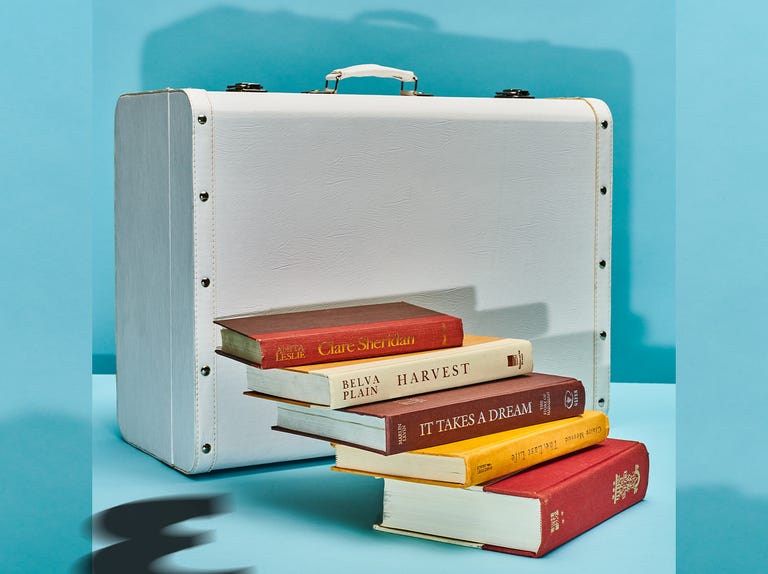
Inside the Literary Travel Boom
Book butlers! Curated libraries! Custom cruises! Literary-themed vacations are the hot new trend in tourism.
In January, when packing my bags for a “reading retreat” in the Dominican Republic, I agonized about which books to bring. A few days later, bellied up to the beachside bar at the all-inclusive Dreams Macao Beach Punta Cana resort (where, in place of barstools, swings are suspended from the thatched ceiling), I sipped a mojito, cracked open James Salter’s Light Years, a novel I reread annually, and knew that I’d chosen well.
But if I’d had any regrets, summoning a new paperback would’ve been as easy as ringing for a book butler. I was down in the DR to experience Pages in Paradise, a collaboration between the publisher Penguin Random House, Belletrist Book Club (the brainchild of actress Emma Roberts), and Apple Vacations (no relation to the iPhone maker). For readers who like to beach, the retreat left no page unturned. The programming kicked off even before check-in: Ahead of arrival, guests could log in to the resort’s app to reserve beach reads from an on-site library curated by Belletrist. Housed in the airy hotel lobby, the collection included buzzy contemporary fiction by the likes of Zadie Smith and Curtis Sittenfeld. Guests could also order books via room service (or personal butler) anytime or select one from the chic library carts located at the adults-only pool. The property’s various bars featured the “Pages Pour,” a specialty cocktail themed to the program’s inaugural book-of-the-month selection, Jenny Xie’s debut novel, Holding Pattern . They called the drink a gin-fashioned—a fruit-forward riff on the old-fashioned, zippy with pineapple-cinnamon syrup.

Exotic as this tropical gathering of book lovers might have been, it’s just one example of a fast-growing business trend: literary-themed travel. We have the pandemic to thank. Reading surged in the early days of Covid, and the habit stuck as lockdowns eased: The biggest two years on record for print book sales in the U.S. were 2021 and 2022. Hotels and tourism companies, eager to lure back travelers, seized on the surge and began featuring books in their marketing. What began as a travel perk has become a full-blown movement to cater to readers with an explosion of new programming, from big-ticket experiences promising author access to solitary retreats. I know, I know—planning a trip around your reading list may never replace your annual golf weekend, but when else will you get the time to actually enjoy that stack on your nightstand? And if it all sounds like giving yourself homework, don’t worry—there definitely won’t be a quiz, and did I mention the drinks?
As a professional book recommender, the question I’m asked most often is “What book should I bring on my vacation?” But now there’s a new question to consider: What kind of literary vacation should I plan?
Not every reader is content to lie by the pool and read for days on end. Some are looking for a more kinetic experience—one that lets them interact with fellow readers, and even their favorite writers. Enter the “ Gone Girl cruise.” In fall 2022, author Gillian Flynn set sail down the Danube with some of her biggest (and most well-heeled) fans as part of Avalon Waterways’ Storyteller Series, cruises that offer literary travelers a chance to voyage in close quarters with authors and other storytellers. When Flynn tweeted about the cruise, it quickly became a viral sensation. On-board accounts detailed a true-crime extravaganza, with guests returning to their rooms each night to discover blood-spattered notes, themed to Flynn’s novels, on their pillows. Sure, it’s a little dorky—but we’re all fans of something, and if crime novels are your thing, what could be better?
For readers who can’t splash out for getaways abroad, there are literary destinations closer to home, too. In the artsy hamlet of New Hope, Pennsylvania, the historic luxury hotel River House at Odette’s offers Riverside Reading (in partnership with Bedside Reading), a program that pairs complimentary access to a curated library (via digital app or hard copies throughout the hotel) with intimate author experiences. With bookshelves stationed on each floor and authors rolling through seasonally, guests can dip in and out of the programming as they please.
When I visited River House deep in the grips of a harsh Pennsylvania winter, I discovered a reader’s paradise: My room boasted a fireplace, a private balcony, and serene views of the rushing Delaware River. After turndown service, I found a keepsake leather bookmark on my pillow. That evening, a few dozen guests gathered for a talkback with the novelist Jean Hanff Korelitz. In a ballroom festooned with red carnations (a nod to the cover of her latest book, The Latecomers ), Korelitz fielded rapid-fire questions about her inspiration, her writing process, and her hit novel The Plot . After the formal conversation concluded, starstruck guests crowded around her at the bar. “When people come up to you and say, ‘I loved your book,’ that really means something to writers,” Korelitz told me. As the owner of BookTheWriter, a service connecting authors and readers through pop-up book clubs hosted in New York City apartments, Korelitz knows a thing or two about making connections. In the recent boom of literary travel experiences, she sees a broader post-pandemic trend of readers craving the chance to get up close and personal with their favorite writers. “The ways of access to authors have multiplied exponentially,” she said. “I find it to be very inspiring.”
For an early-career author like Xie, who was at Pages in Paradise, seeing her novel highlighted was both exciting and transformative. That’s the thing about literary travel—it allows us to transcend our ordinary lives in more ways than one. “There’s a certain sense that we don’t have the space to read unless we’re traveling or living outside of our day-to-day,” said Xie. “A book takes you outside of your physical environment and your lived experience. Travel does that, too, so they join together in this really beautiful way to truly transport you.” That’s a journey worth taking.
HOW TO PLAN YOUR OWN LITERARY VACATION
Ready to take off on a bookish getaway? Literary travel isn’t “one size fits all,” so whatever type of reader you are, we’ve got a prescription for it. Choose your own adventure below.
For the fan
The Gone Girl cruise is over, but Avalon Waterways isn’t slowing down anytime soon: Its upcoming slate of Storyteller Cruises includes actor Graham McTavish (sailing down the Rhine River) and Outlander phenom Diana Gabaldon (voyaging down the Danube).
For the R&R chaser
Looking for a more relaxed experience? At the Reeds at Shelter Haven, an upscale resort on the Jersey shore, guests can participate in Reeds’ Reads, a seasonal book club featuring guided discussions, with authors sometimes joining via Zoom for Q&A sessions.
For the aspiring writer
Chances are, your favorite author is side-hustling by leading retreats in pastoral Europe. To get in on the action, pay close attention to their social-media feeds, or search for guided trips through an experiential-tourism outlet like TrovaTrip.

@media(max-width: 73.75rem){.css-1ktbcds:before{margin-right:0.4375rem;color:#FF3A30;content:'_';display:inline-block;}}@media(min-width: 64rem){.css-1ktbcds:before{margin-right:0.5625rem;color:#FF3A30;content:'_';display:inline-block;}} Esquire Travels

The Best New Hotels in the World 2024
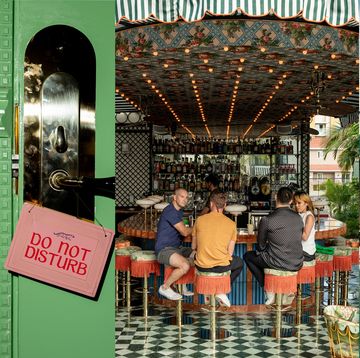
The Lafayette Is Our 2024 New Hotel of the Year
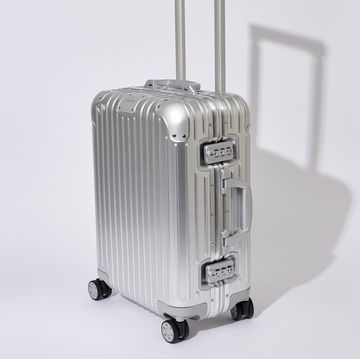
Why the Expensive Suitcase Reigns Supreme

The 6 Best New Hotels in Charleston
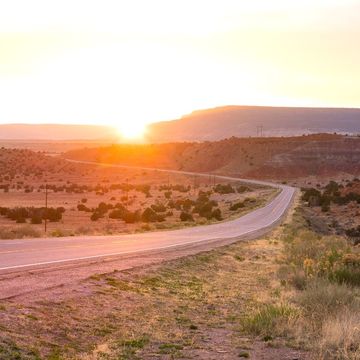
The Tiniest Town in Every State

Inside NYC's Most Expensive Hotel

Nine Orchard Is Our 2023 New Hotel of the Year

Las Ventanas al Paraíso, A Rosewood Resort Review

Our Favorite Hotels of All Time

The Best New Hotels in North America and Beyond

Welcome to Miami’s Most Non-Miami Bar
THE 5 BEST Moscow Comedy Clubs
Comedy clubs in moscow.
- Bars & Clubs
- Karaoke Bars
- Dance Clubs & Discos
- Bar, Club & Pub Tours
- Coffee Shops
- Comedy Clubs
- Jazz Clubs & Bars
- Blues Clubs & Bars
- Gay Clubs & Bars
- 5.0 of 5 bubbles
- 3.0 of 5 bubbles & up
- 3rd Transport Ring (TTK)
- District Central (TsAO)
- Garden Ring
- Boulevard Ring
- District Southern (YuAO)
- Danilovskiy
- Krasnoselskiy
- Good for a Rainy Day
- Good for Big Groups
- Good for Couples
- Good for Kids
- Adventurous
- Budget-friendly
- Hidden Gems
- Honeymoon spot
- Good for Adrenaline Seekers
- Things to do ranked using Tripadvisor data including reviews, ratings, photos, and popularity.

1. Steal the Show Comedy

2. Stand-Up Club
3. Stand-up House by Ruslan Mukhtarov

4. English Moscow Comedy

5. Moscow Comedy Bar

6. StandUp Store Moscow

More From Forbes
Official statistics show bicycling stagnation in england.
- Share to Facebook
- Share to Twitter
- Share to Linkedin
A cyclist rides her bike along a designated bicycle lane on a street in London, England. (Photo by ... [+] Robert Alexander/Getty Images)
“We aim to double cycling activity,” boasted the Westminister government’s Cycling and Walking Investment Strategy of 2017 . The target was due to be reached by next year. However, official data sets released today show a distinct lack of progress in making England more attractive for cycling (and walking).
Mid-year estimates from the National Travel Survey for the year ending June 2023 show that the distance traveled per person by walking or wheeling has hardly changed since 2003 and the total number of trips people take on foot has dropped over the same period.
The National Travel Survey also shows that although the distance traveled by cycling has seen some signs of growth over the decade, the average distance cycled per person is the same as in 2019.
Cycling traffic levels in England, to December 2023, from Cycling Traffic Index, April 2024.
In the separate Cycling Traffic Index , it’s revealed that the gains made during Covid-19 in getting people out on their bicycles are falling. Levels of cycling dropped by 29% between March 2021 and December 2023. Cycling traffic levels have increased 15.5% over the last ten years but they are still far below where they need to be to achieve the government’s target of doubling cycling use.
WhatsApp Brand New iPhone Feature Just Launched That s Much Easier To Use
New apple id password reset issue hitting iphone ipad and macbook users, apple’s iphone ai plans confirmed with new software upgrade.
The Active Lives Survey from Sport England paints a more positive picture—there are two million more adults getting active regularly through sport and physical activity than in 2016—but digging into the figures shows there’s a growing divide in activity levels based on where someone lives. Last year, 33.7% of people in the most deprived neighborhoods were considered inactive compared to 20.5% of those in the least deprived.
The number of people considered active in the most deprived areas has dropped by 2.5% in the seven years. The West Midlands and the North East have seen hardly any change in the numbers of active people, for instance.
The Active Lives Survey shows that between November 2022 and November 2023, 63.4% of the adult population met the Chief Medical Officers’ guidelines of doing 150 minutes, or more, of moderate-intensity physical activity a week. This figure is largely unchanged from 12 months ago when 63.1% were active but means that, compared to when Sport England first ran the survey between November 2015 and November 2016, there are two million more active adults, an increase of 1.3%.
Within a general election due to be staged within months it’s now almost a dead certainty that Labour will form the next government. The party has already released a plan for bus travel and, in Get Britain Movin g, a policy document setting out its plans to renationalize the UK’s railways, it was stated that Labour will “set targets for modal shift to lower emissions from the transport sector.”
The party has yet to release a plan for active travel.
Article updated on April 26 with information on Get Britain Moving .

- Editorial Standards
- Reprints & Permissions
Comedy Travel Writing

5 of The World’s Ugliest Flags
Last Updated on April 15, 2024 by Adam Watts
Are you tired of seeing the same old beautiful flags of the world ? I sure am. That’s why I put myself through a lot of pain looking for the world’s ugliest flags. I was hoping some of them would be so bad they’re good — but no, these things are hideous no matter at first, fifth and fiftieth glance.
So let’s get right to it. I’m going to rip the band-aid off and just show you the world’s ugliest flag, because I hate those lists that make you scroll to the bottom to the get to the top rank. Life is short, man.
The World’s Ugliest Flag is… British Columbia

There’s no competition in my mind. This is it. The worst of the worst. British Columbia, congratulations, you have the ugliest flag in the world. I’ll get to some other flags I’m not a fan of later, but none of them come close to this monstrosity.
There’s a Union Jack flag (or just Union Flag, if you prefer) at the top that is seriously stretched like it’s about to explode, and for some reason there’s a ClipArt crown plonked on top like an eight-year-old making a school presentation.
Below that is what is probably the sun, but is underwater for some reason, making it look like a sea monster with giant tentacles.
What more is there to say? British Columbia is hands down the world’s ugliest flag. Now let’s look at some other competitors so you can see that while other countries are inept at flag-designing, none of them are legitimately painful to look at.

I don’t like flags with people. They’re jarring and confusing. Belize doesn’t help the confusion by adding a tree, a latin motto, a wreath around the edge, and a coat of arms sub-divided into three parts each with their own little emblem. And they seem to be standing on grass for some reason, which is the most unnecessary thing I’ve ever seen in my life. If you zoom in far enough, you can even see a grasshopper and the rest of the cast of A Bug’s Life.
I also want to point out the red stripes at the top and bottom, added in seemingly as an afterthought. Many countries use stripes, and some countries (looking at Ukraine and Indonesia for example) are content to paint a stripe and go home early. Not Belize though, oh no.
The Belize flag was designed by someone who thought the task wasn’t “please design an elegant flag that represents our country”, they thought the task was “fit as many things as you can into a rectangle”.
And after they’d come up with an overly complex design, someone also pointed out that a lot of countries have stripes so they wanted stripes too, and the designer begrudging smushed them into a tiny fraction at the top and bottom.
But fun facts about this flag, for people who love fun facts:
- Belize is the only country in the world to have humans as a major design element on their flag.
- Belize’s flag uses 12 different colors/shades, making it the most colorful flag in the world. But obviously in this case colorful doesn’t mean “prettiest”, because it’s an ugly mess.

Virginia, didn’t you listen to anything I said? I said I didn’t like flags with people, and that trying to put too much into one design is a bad thing, yet here you are.
There’s not much to say here. Again, too much going on. And I don’t know about you, I don’t care what kinky stuff Virginians get up to, they don’t need to put it on their flag. Keep it to yourself.
Fun fact: “sic semper tyrannis” (if you squint to read it) translates to “thus always to tyrannosaurus” meaning that it’s inevitable that one day T-Rexes will rule the earth again. Virginians are weird.
Turkmenistan

Green background, sure, why not. Islamic crescent, cool. Five stars representing the five regions of the country, nice and elegant.
But what are you doing with that red-striped splodge on the left? It’s a mess. From a distance it looks like an animal has been run over, had its blood and guts smeared over the road, and then someone replicated that on the flag. And up close, it’s not much better.
I don’t want to come across as insensitive. I appreciate that the red stripe is in fact made up of five traditional carpet designs, each representing one of the five major tribes/houses of Turkmenistan. Very cool to include that on your flag but can’t you have represented them…better? You could have maybe made one emblem encompassing different parts of all five tribes/houses? Just a thought, if the Senior Minister for Flag Design of Turkmenistan happens to read this.

Continuing with the red and green color scheme, we have Morocco.
Morocco is unique on this list in that the problem with their flag isn’t that they didn’t know when to stop. They have a red background and a green star in the middle and that’s it. Simple, elegant, memorable.
The problem Morocco has is that it was clearly made by an artist who missed the lesson about color theory. Red on green is a bold, bright choice – Turkmenistan’s flag might be ugly, but it’s easy to see that red stripe from a mile away. You just can’t tell what it is.
Morocco’s green star on a red background is very difficult to see. I’m sure you’re managing it fine reading this on your phone or a computer, but imagine that flag atop a flagpole on a windy day; you’ll be hard-pressed to spot the green star.
I’m also red-green color-blind so I’m also just personally affected by this. (As are about 8% of the male population , so I’m not alone here.)
The World’s Ugliest Flag
There you have it. The world’s ugliest country flags. Hopefully you learned something. Belize and Virginia have people on their flags, Turkmenistan has carpet, and Morocco are making an enemy out of colour blind people. And British Columbia, well, the less said about their flag the better. Just know that it’s by far the world’s ugliest flag.
If you can’t get enough of flag content and ugly things, click here for even more of the world’s ugliest flags !
Or if you want more flag-based content , learn about Dark Tourism , learn that the country of Burundi in the middle of Africa changed its capital , check out our Educational section .
Similar Posts

4 More of the World’s Ugliest Flags
Last Updated on April 7, 2024 by Adam Watts Since sharing some of the world’s ugliest flags here, unfortunately I’ve discovered some more seriously ugly flags. So in the interest of public safety, I wanted to write about 5 more of the ugliest flags. Grit your teeth and let’s dive in. 4. Nenets Autonomous District,…

5 Reasons Why You Should Study Abroad
Last Updated on April 13, 2024 by Adam Watts My time studying abroad – many years ago now – was one of the most invaluable experiences of my life. To help guide anyone at college thinking of doing it, there are 3 reasons why you should study abroad: 1: Studying abroad is one of the…

What is Dark Tourism?
Last Updated on April 13, 2024 by Adam Watts You may have heard the term in a few places, but what is dark tourism? Dark tourism involves going to places associated with death and tragedy, like former prisons, sites of natural disaster, or Walmart on Black Friday. It’s not a new thing – gladiator games…

There’s a New French Flag – Here’s What You Need to Know
Last Updated on April 7, 2024 by Adam Watts France’s blue-white-red tricolour flag is iconic. Ask any adult or particularly-gifted toddler and they’ll be able to identify the French flag. Like the McDonald’s arches or long queues at post offices, it’s a universally-accepted thing that would be sacrilege to change in any way. So, mon…

6 Incredible Examples of Unique Architecture in Singapore
Last Updated on October 16, 2020 by Adam Watts Below are 6 incredible examples of unique architecture in Singapore. From garden hotels to fruity shopping malls to bridges that look like worms, there’s really something for all tastes here. The Interlace Buro Ole Scheeren, architect of The Interlace, must be a younger sibling. I say…

10 Most Beautiful Flags (And What They Mean)
The world’s coolest flags and what they mean, from the Seychelles to Kiribati, via a stop in Nepal.
41 Comments
- Pingback: The 10 Most Beautiful Flags - Comedy Travel Writing
I found this piece educational and entertaining. Good job.
Glad you enjoyed!
OMG British Columbia! For shame! 😀
I know, what were they thinking?!
personally i like the Moroccan flag
I think in theory I do too, I just find it so difficult to tell the colors apart!
it has such a bad shade of green
I agree its very nice, it kinda makes me feel oddly safe…
I guess the Pakistani flag is the worst flag in the whole universe, even the aliens might have got bad views on it.
Nice did quite well except the fact that I WAS BORN IN MOROCCO 😡😡😡😡🤬🤬🤬😡🤬🤬 You disappointed me 😾😾😾You better look under bed tonight you never know whats under their🧠🩸🦴💀
Lucky you was born in morocco I was born in srilanka but we just moved to QATAR!
Hahaha, well at least I didn’t say it was the absolute worst flag in the world, just one of the worst! Morocco is beautiful in real life though, I loved the Atlas Mountains!
As a person from British Columbia, I gotta agree, I think my province could really use a new flag, haha.
I’m glad you can laugh about such an absolute travesty! 😂
Oh my, i found this article and it’s super entertaining no doubt!!
The Turkish flag, I think, is beautiful. Perfectly represents the little I’ve learned of Turkey. British Columbia I would not describe as ugly. Morocco, if they just would have chosen a better shade of green. The others, are too busy.
Definitely agree on Turkey, it’s a great flag! And yes, a better (brighter) shade of green for Morocco would help my poor eyes. British Columbia let’s agree to disagree 😉
I love the British Columbia flag. I’m one of those people that just loves the most random weird things that most people wouldn’t like. I just found out I have a new favourite food yesterday. It is egg and onion! 😂😂
You better keep your eggy onions far away from me, you weirdo!
- Pingback: There's a New French Flag - Here's What You Need to Know - Comedy Travel Writing
Well, the Türkmes flas actually has a darker shade of green. Also you’re very much allowed to have your opinions, but it feels like you’re being a bit disrespectful. I’m really not trying to be rude. This might also be a me problem yk, since I am from Türkmenistan. The flag is also MUCH prettier whe you see it in Türkmenistan.
- Pingback: what flag is green and white-Answerjournal.net
You are dumb my man. Sic Semper tyrannis means Thus always to tyrants Not us thinking dinosaurs will rule the earth again apparently…
You don’t have to be rude. And it’s just a little fun!
That made me laugh 😂!
Shut up you idiot. You’re just saying this cause you’re Indian. I am Australian and I do not have any biased point of view. I personally think that the Pakistani flag is one of the most beautiful flags. Honestly speaking, its the Indian flag thats ugly.
Indian flag is not ugly. . .Well I also like the Turkmenistan flag but its pretty hard to draw. . .
The Indian flag colours are quite ugly tbf.
As a born and bred British Columbian, I have to admit our flag is sinfully ugly. Super busy, too much going on, and that squashed Union Jack looks terrible!
Oh, and just as an aside, some folks in British Columbia think we should change our flag to have indigenous elements. Sounds like a good idea, but this is the monstrosity they suggested we use instead: https://vancouversun.com/news/local-news/redesign-of-b-c-flag-with-first-nations-elements-reflects-who-we-are
Interesting, thanks for sharing! Love the idea of using indigenous elements but agreed, that version is somehow even uglier than the current one!
Australia’s flag is ugly
As someone from british colombia, i completely agree. Our flag really needs a redesign.
though i disagree with morocco, i like that.
- Pingback: 4 More of the World's Ugliest Flags - Comedy Travel Writing
Bollocks!!! I love Burundi’s flag and Morocco. Whoever wrote this is a SPAZ!!!!
Who said anything about Burundi?! Burundi’s flag is amazing!
I feel like you’ve forgotten about the most hideous flag of them all: Milwaukee. It’s a god-awful mess…
Wow, that Milwaukee flag is…quite something. If you’ll excuse me, I now have to go wash my eyeballs.
THESE ARE ALL GOOD WDYM THIS IS FAKE NEWS!!! (ARMENIA SHOULD BE ON THE LIST!)
Join the Conversation Cancel reply

IMAGES
VIDEO
COMMENTS
The content on this site exists to either: Help you plan your own trips, or. Entertain you with stories about places you will never, ever visit. So pull up a chair, kick back, and relax! Read more about me, Adam Watts, here. Join Comedy Travel Writing for a journey through the funny side of travel.
1. "A Walk in the Woods" —. "All the books tell you that if the grizzly comes for you, on no account should you run. This is the sort of advice you get from someone who is sitting at a keyboard ...
A Walk In The Woods is less a travel book and more a funny hiking book. For the reader, the place names and locations are lost in the details. But you will remember the struggles, discomfort, hilarious misfortunes, and personality quirks of the author and his companion as they walk the Appalachians.
It's a funny travel book that's awfully endearing, and it's probably one of the best books to read while travelling through France. The Sex Lives of Cannibals: Adrift in the Equatorial Pacific by J. Maarten Troost. When a Dutch-American travel writer in his mid-twenties decides to move to Tarawa, a remote South Pacific Island, you end up ...
As well as my work as a freelance writer and editor, I'm also the founder and editor-in-chief of travel writing agency World Words. Comedy scriptwriting and directing At a young age, I developed a (slightly unhealthy) obsession with British sitcom, from enduring classics like Hancock's Half Hour, Steptoe and Son and Blackadder to 21st century ...
Comedy Travel Writing. 502 likes. Welcome to Comedy Travel Writing! Here we cover the offbeat side of travel, from weird destinations to dark tourism, lots of funny travel stories from all over the...
Apple Books. 22. The Innocents Abroad - Mark Twain. The Innocents Abroad is a classic funny travel book by highly acclaimed author Mark Twain, famous for writing the Tom Sawyer and Huckleberry Finn novels. It tells the story of a long excursion between Mark and a group of fellow travelers shortly after the Civil War.
The storm-tossed four-day crossing from England was the first leg of a journey following in the cold, wet footsteps of Lord Dufferin, who in 1856 sailed all around the North Atlantic and right up ...
Short Funny Travel Stories — That Are Also True! 1. File Under Embarrassing Travel Stories. One of my most embarrassing funny stories happened while I was backpacking South America — specifically during a 4×4 tour from San Pedro de Atacama in Chile to Uyuni, Bolivia.. The trip takes you through the desert for three days to see otherworldly sites like hot pink lagoons where flamingos ...
I promise, these 21 best funny travel books will 100% crack you up! 1. Neither Here Nor There: Travels in Europe (1991) - Bill Bryson. Bill Bryson is the funniest travel writer there has ever existed, far and away! In the 1970s, as a college student, Bryson backpacked Europe with a friend. A decade later, he traveled through the continent ...
Scott Carpenter's short entry on humour in Keywords for Travel Writing Studies is a welcome contribution, but his own acknowledgement of "[t]he dearth of critical essays on the topic" is an accurate reflection of the general state of play (Citation 2019, 123). This essay is an attempt to engage seriously with non-serious aspects of travel ...
Jack isn't just any dad, he's a former CIA operative. And Greg's not just a clueless boyfriend, he's a walking bad-luck charm. So in a structural sense, this relationship is primed for comedic conflict. Here are five great tips for writing a comedy scene: Take a typical situation and exaggerate it. Let tension build.
Submit to Nowhere in 2021! (Submissions are closed when our writing contests are open.Subscribe to the Nowhere Writer's Room newsletter.. Nowhere publishes literary travel writing, photo essays and, sometimes, video. To us that means anything with a strong sense of place, character or time. Most of our submissions come from seasoned journalists, but we are also interested in stories from ...
Mastering the art of travel writing is not hard, but you have to put in a lot of dedication, effort, and time. This is a captivating genre that allows you to share your experiences, observations ...
BUELL, Lawrence, The Environmental Imagination: Thoreau, Nature Writing, and the Formation of American Culture, Harvard University Press, 1995. DAVIDSON, Cathy, 36 Views of Mount Fuji: On Finding Myself in Japan, Duke University Press, 2006. DUBKIN, Leonard, "I Climb a Tree and Become Dissatisfied with My Lot." Enchanted Streets: The Unlikely Adventures of an Urban Nature Lover, Little, Brown ...
In January, when packing my bags for a "reading retreat" in the Dominican Republic, I agonized about which books to bring. A few days later, bellied up to the beachside bar at the all ...
Comedy Travel Writing. MENU. Asia. Asia | Guides. The Ultimate 6 day Laos Itinerary & Travel Guide. By Adam Watts November 27, 2023 April 7, 2024. Before any hardcore travelers start screaming about slow travel being the best, yes, I know a 6 day Laos itinerary isn't enough. But we have jobs, we have cats, we have a bag of tomatoes in the ...
Richard Ayoade and comedian Greg Davies attempt to extract the essence of Moscow in just 48 hours. It's a challenge that sees them clash with tanks in Red Sq...
THE 5 BEST Moscow Comedy Clubs. 1. Steal the Show Comedy. There's a variety of cool comedians in four languages (Russian, English, Spanish) and a nice menu. The bar is... 2. Stand-Up Club. Nice place located in the center of Moscow. Beautiful interior.
Comedy Travel Writing. MENU. North America. Asia | Lifestyle | North America. A Comparison of New York City vs Singapore Apartments. By Adam Watts December 22, 2020 May 20, 2023. ... Funny Travel Story | North America. 2 Days at Bear Mountain During a Pandemic. By Adam Watts July 13, 2020 May 20, 2023.
The writer chose the ponds for the opening scene in the book. Nowadays, Patriarshiy Ponds (Patriarshie Prydy in Russian) is a nice place to stroll around and have a delicious lunch or a coffee break. ... It's the best piece of travel writing I've ever seen. 1. I am arriving with a friend in Moscow to start my trip. But will be taking an ...
The National Travel Survey also shows that although the distance traveled by cycling has seen some signs of growth over the decade, the average distance cycled per person is the same as in 2019.
The world's ugliest country flags. Hopefully you learned something. Belize and Virginia have people on their flags, Turkmenistan has carpet, and Morocco are making an enemy out of colour blind people. And British Columbia, well, the less said about their flag the better. Just know that it's by far the world's ugliest flag.